24 Reasons You Should Start a Garden in 2024
Lets explore the long list of reasons why starting/expanding a garden is the most important thing you can possibly do in 2024
I am re-posting the following updated version of this post with a 24th reason added to start off this new year and for all those people who missed my 23 reasons post last year. I think I will make a tradition of exploring a new reason to add to this list and re-post each year until I run out of new reasons, though I do not think that will ever happen. ;)
If you have been paying attention to the world of finance, industrial agriculture supply line fragility, nefarious government policies, the plutocratic war on small scale farmers (being rolled out under the guise of “sustainability”), pharmaceutical cartels schemes, soil erosion rates and the activities of the most wealthy people on Earth over the past few years, you will know very well that we have some challenging times ahead.
With all that being said, this does not mean we should begin this new year without hope or in a fearful way. Mother Earth has her hand outstretched to us lovingly to help us find resilience and be capable of weathering the storm ahead. She offers us ways to align with the inherent abundance that is offered to us when we contribute to her ancient living economy. We are each capable of embodying the solution to the challenges we face in each of our communities.
Now is the time to reaffirm our alliances with the living Earth, to nurture new symbiotic relationships with the soil, people, plants and fungi in our local communities. Human empires rise and fall, and history teaches us that when they fall, it is those that know how to grow/forage for their own food, medicine and preserve it, that survived.
We can create oasises of health, resilience, and abundance in each of our communities… we can become the solution, break from dependence on centralized systems and help others to do the same. It begins with the soil and the seeds and it evolves into nurturing symbiotic connections with those whom we share our communities with. Each of us can embody the medicine that the land and our communities need too survive and thrive though the tough times ahead.
Thus, each and everyone one of us should now be focusing our efforts on honing our skills related to food/medicine cultivation, preservation and developing a reciprocal relationship with the land where we live.
If you already have a garden think of this as a list of 24 reasons why you should re-double your gardening efforts by expanding, honing and sharing your garden abundance. Please share this article with anyone you feel would be receptive so they can take steps to help themselves and be capable of weathering the storm ahead of us.
Why Garden?
Some people may ask themselves this question. Some may think “I can buy all the food I need at the store, I can afford to do so, and it’s so much easier than having to grow the crops from seed, so why should I bother?”
Let us take an honest look at all the reasons why one should take the time to compost food scraps and set up and maintain a regenerative food garden (especially now in the year 2023).
1. Reciprocity: Regenerative gardening offers a way for us to give back to the Earth and ecosystem(s) that provides us with everything we need to live:
Starting a composting routine means feeding the soil life and creating valuable ‘black gold’ for building soil and increasing productivity in the garden. This means less waste ends up in the landfill, more CO-2 gets sequestered in the soil, and we are able to build rich healthy soils for supporting robust plant health (requiring less watering and yielding bigger harvests). It also means we are choosing to contribute towards a more healthy future for our children and their descendants by building the precious soils that all life depends upon to survive.
The act of composting means you are contributing towards the fabric of an ancient living decentralized economic model. We invest our time and materials, and the ‘asset managers’ and ‘investment strategy team’ (comprised of myriad bacteria, fungi and decomposing insects) invest molecules of biological currency for us, storing those units of currency in the form of fertile soil. We can then withdraw from our account through using the ‘key code’ that is embodied in a living heirloom seed we plant in that soil (which unlocks it’s potential and allows us to withdraw part of our savings account in that living soil/seed bank in the form of life giving food, medicine, oxygen and poetry for the senses).
Composting is medicine for the land and medicine for the soul. It offers us a tangible way to connect with and give back to the living planet that sustains us all. When one looks at the act of composting through a more linear or utilitarian lens it is an act that facilitates the transformation of free materials into something extremely valuable and useful for saving money on grocery and medical bills.
Through offering our hands to accelerate the natural cycles inherent in composting we involve ourselves in the sacred act of reciprocity and begin to nourish a reciprocal relationship with the living Earth that results in True Wealth.
The gift of True Wealth is found in the years, lasting fulfillment and health which is added to our lives when we care for the land we live on (and those who we share it with). Lasting fulfillment is found in savoring those precious moments that are given to us each time we stop to appreciate the "little things". It is the gift we give ourselves when we choose to use our time on earth to help things grow and nurture them to achieve their highest potential.
This concept of "returning the gift" is not just a philosophical idea, but rather a bio-physical fact of life. It is woven into the fabric of nature and can be observed in all layers of life. It can be seen in the mighty old growth trees and their symbiotic relationship with the mycorrhizal fungi and it can be seen in the human gastro-intestinal tract where beneficial bacteria help us to digest our food and protect our bodies from invading pathogens. In fact, reciprocity can be felt in every breath you take, for the oxygen that breaths life into you is the result of the plants who breathed in CO-2 and in return gave oxygen.
In nature symbiosis is the norm and many ancient cultures saw mother earth and the fellow beings we share this world with (plants, animals, fungi, insects etc.) who all live by the covenant of reciprocity as wise teachers. These were cultures that taught their young that when we receive a gift from the Earth we must in turn give back to the Earth. This is the way eco-systems thrive and become ancient resilient communities of diverse life. Communities of abundance, regeneration, and beauty that foster the unfolding of beings of many shapes and sizes into ever higher levels of complexity, beauty and uniqueness.
Many humans in the modern world have forgotten what it means to be part of a community of life (eco-system) based in reciprocity. We have been told the story of "consumers" and "natural resources", "profit margins" and the illusion of scarcity. We humans now face a choice, we can either revitalize the ancient knowledge and way of living that honors the gifts mother earth shares with us by giving back to her in return, or we can choose to define ourselves as "consumers", "takers" and live with a parasitic relationship to the living planet that sustains us. One path leads to abundance, true fulfillment, understanding, inter-connectivity, spiritual unfolding, health, longevity, peace, and joy... and the other leads to the host organism (the Earth) having to expel the parasitic presence we have chosen to become and the collapse of modern civilization. There is no middle road. We have pushed the eco-systems to the breaking point and the systems our centralized 'consumer' society is built upon will inevitably collapse in the face of soil depletion/erosion, manipulated weather, unstable financial markets, flimsy supply lines and resource depletion. The earth now calls those of us who wish to walk a path with a heart towards a brighter future to give back to her for what which we as a collective have taken.
In choosing to discover and utilize our gifts to give back to the living planet that gives so much for us we are embarking on a path of aligning with the forces of regeneration. When we align with nature to heal to soil, the air, the water and our relationship to all facets of the Earth and beyond we are really embarking on the path to heal ourselves. To give our energy to nurture life and align with the creative momentum of nature is a path to receiving medicine for the soul.
2. Homegrown food is more nutrient dense:
Food grown in rich living soils contain a much higher concentration of vitamins, minerals, proteins, anti-oxidants (and other beneficial phytochemicals) than store bought food.
Most produce available in stores has lost over 40% of its nutritional value in the last 50 years because of poor farming practices, pesticides and the degradation of the food supply due to the introduction of GMO products.
Store bought food is often grown in nutrient and mineral depleted soils (due to conventional degenerative agricultural practices, including genetic modification of seeds) and the plants are already stressed due to tight spacing and the lack of beneficial soil organisms. This leads to produce almost totally devoid of any valuable nutrition (regardless of how it may look on the outside).
When compared to crops from conventional farms, crops from regenerative agriculture farms (which means grown in living soil like you would have in your regenerative garden) had 34% more vitamin K, 15% more vitamin E, 14% more vitamin B1 and 17% more vitamin B2. The regenerative agriculture crops also had 11% more calcium, 16% more phosphorus and 27% more copper.
The study also compared wheat crops. Regenerative wheat crops were planted in a crop rotation pattern that included cover crops between crops of spring barley and winter wheat. The regenerative wheat samples had 41% more boron, 29% more magnesium, 48% more calcium and 56% more zinc than conventional wheat samples.
When you grow crops at home in living soil (created via adding homemade compost, companion planting and mulching) the produce you harvest is significantly more nutritious than store bought.
3. Homegrown food is more delicious:
Food grown at home is more fresh, the texture, color, and flavor is of a much higher quality than food that was often picked over a month ago and shipped thousands of kilometers to get to your local grocery store.
Not only that but when we grow food in rich living soils the natural sugars, flavonoids and other phytonutrients produced in our crops are of a higher concentration, meaning juicier more delicious produce. This is (in part) due to the symbiotic connections between garden plants grown in rich living soils and the beneficial organisms that dwell in the soil (such as mycorrhizae, protozoa, nematodes, microanthropods. mutualist bacteria and more).
Store-Bought fruits and vegetables are bred to favor long shelf-life over flavor.
Heirloom garden crops on the other hand are bred for flavor, color, character, resilience and to preserve unique cultural heritage, thereby leading to delicious and unique produce.
Crops produced on a large scale are bred for uniformity, aesthetics and easy harvesting (using big oil guzzling machines). This ignores the genes responsible for flavor and nutrition.
Also, many natural sugars in our favorite crops turn to starch immediately upon harvest. There is nothing sweeter than eating a blueberry or a strawberry right after picking it! Why? As soon as the produce is harvested, the sugars start turning to starch. When you buy from the grocery store, there’s no way to know how long the fruit or vegetable has been off the vine or plant. The more time that elapses between harvest and when you eat, the more of the plant’s natural sugars have turned to starch.
But when you pick your own, you control how quickly you consume a fruit or vegetable at its peak ripeness.
According to a study on sweet corn from Purdue University, standard sweet corn loses 50% of its sugar content in the first 12 hours after harvest.
Store-Bought produce is also often harvested before peak ripeness (and sometimes ripened artificially). Since most produce to be sold in grocery stores travels a significant distance, many fruits and vegetables are harvested before peak ripeness. Some will then be ripened artificially during transport. For example, tomatoes are harvested when they are bright green. Then, ethylene gas is applied to the tomatoes during transport to artificially ripen them to red.
In modern agriculture, the soil has been stripped of natural nutrients (via degenerative practices like heavy tilling and synthetic chemicals). To make up for this lack of nutrients, growers apply synthetic fertilizers. These chemical fertilizers provide the main nutrients plants need to grow. But, they do not contribute micronutrients or the soil microbiome plants need for a complete nutritional profile.
Another factor worth mentioning is that when chemical fertilizers are applied, crop yields increase. While this seems like a good thing, the “dilution effect” causes the fruits and vegetables to decrease in nutritional density (and flavor).
This meta-analysis from the American Society of Horticultural Science confirms through several scientific studies that the nutritional content of our fruits and vegetables has declined over the years.
Therefore combining heirloom seeds with living fertile soil in your garden (nurtured via creating your own compost) allows you do have access to delicious (and nutritious) food for enjoying and creating in the kitchen.
4. Growing food at home saves you money on groceries:
According to the government the average Canadian household spent $8109.00 on groceries in 2014 ( a very conservative amount in my estimation and that number is a lot higher today). Recent reports an average family's food bill in 2022 is $14,767.00. That number will inevitably be going up drastically in 2023 and beyond. It is also worth considering many people are spending all that money on food that is highly processed, contains GMOs, and is chemical laden (which leads to a shorter and less full life, with big medical expenses down the road).
In 2016 we decided to keep detailed logs of everything we harvested from the garden to see just how much we were producing in a year. In mid-December of 2016 we harvested our last kale leaf and finished the tally/calculations. In the year of 2016 we grew 3,507 dollars and 51 cents worth of organic produce in our backyard (calculated via the per pound prices of Ontario organic market value for each crop). Some of the crops we grew included 328.00$ worth of kale (82 bunches), 159.00$ worth of sweet potatoes (53lbs) and 204.00$ worth of beets (68lbs). That was only using about 1/2 of the square footage of our (average sized suburban) backyard and having spent a small amount in the spring on soil amendments, seeds, and support posts/tape.
If one spends only $20–40 on basic supplies (or just getting inventive and being resorceful to re-purpose existing ‘waste materials) and with only a weekend or two spent preparing the soil in the garden or (growing containers for your balcony, windows etc) each year, and a quick watering before work each morning will result in a significant amount of veggies (Translate that to dollars and you have hundreds of dollars worth of fresh organic produce, at least).
I often encounter people that say they cannot grow any food at home (and use the excuse of having no access to land) so when I was doing research for writing my gardening/recipe book I experimented with cultivating nutrient dense food and medicine indoors and in containers. I was able to grow significant amounts of ginger, kale, tulsi (aka “holy basil”), microgreens and protein rich gourmet mushrooms using only a south facing window with pots lined up and some mason jars that I filled with spent coffee grounds (for growing oyster mushrooms). Anyone that is motivated can do that (and more) at the very least, and the health benefits that are offered even by growing a steady supply of those things are non-trivial (we are talking 500.00$ CDN plus from just that indoor combo of crops).
For more info and access to materials for growing oyster mushrooms on spent coffee grounds: https://shop.mushroommountain.com/collections/indoor-fruiting-kits/products/coffee-cultivator
5. Food Security and emergency preparedness:
Considering the likely reality of major crop failures, food shortages and the inevitable increase in cost of food in the near future (due to various economic dynamics that create artificial scarcity, climate instability, solar storms/EMP events that could cripple the centralized food/financial infrastructure and large scale soil depletion) the value and importance of learning to grow one's own food is immense.
We can ensure we will be able to feed ourselves and our loved ones in these uncertain times (times which indicate a high likelihood of economic, climate (Geoengineering), agricultural or political instability in the near future) through learning to cultivate nutritious food from seed, preserve that food and save seed (thereby perpetuating the cycle). Growing your own food means you can provide for yourself and your loved ones when disruptions in centralized systems occur (as they have all throughout human history).
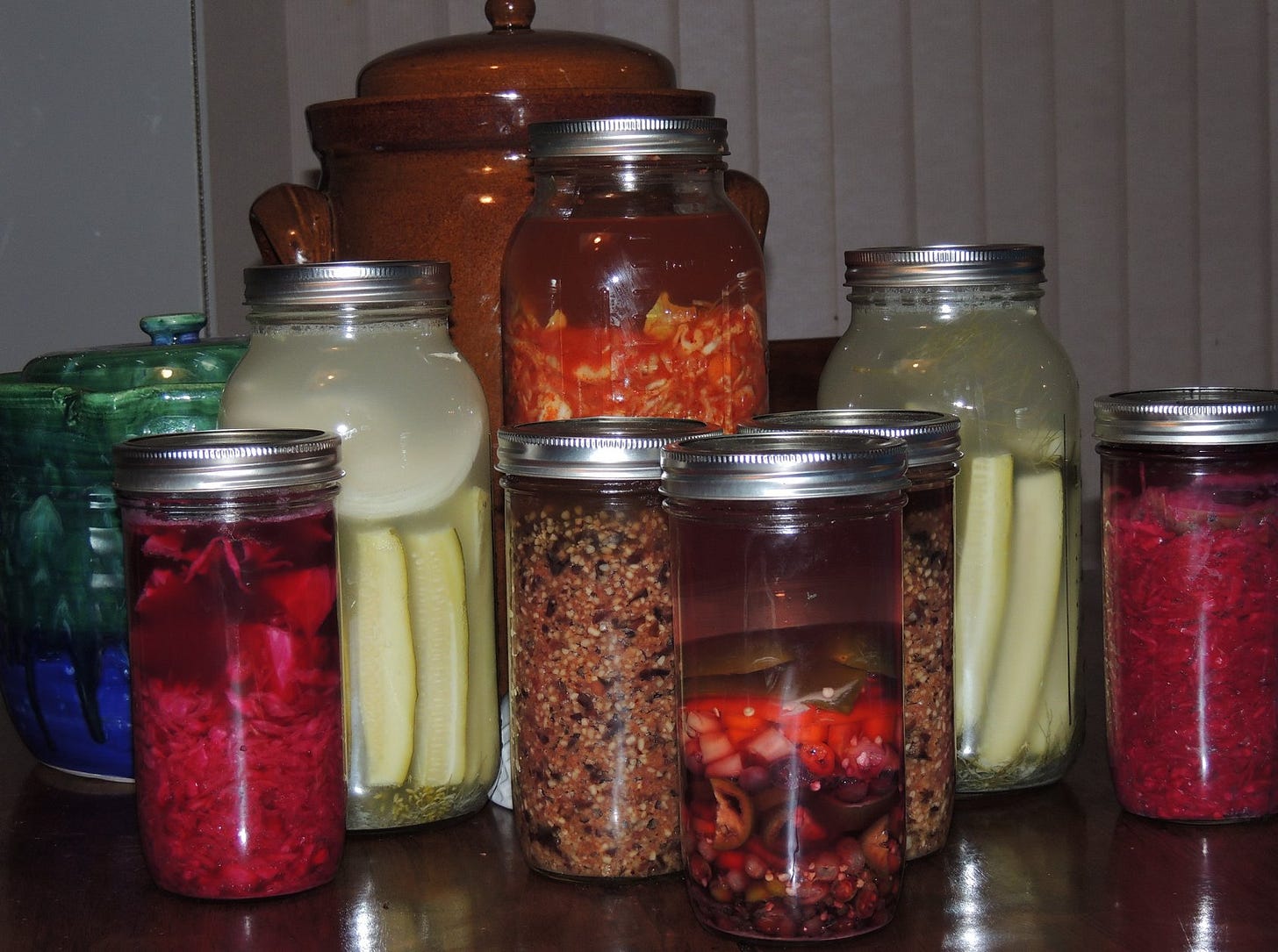
Saving up money for a ‘rainy day’ is not a solid way to prepare for emergencies because money has no innate value. Seeds, good soil, gardening skills, increased health/immunity, preserving experience and the symbiotic relationships and friendships we forge with neighbors and the broader community we are a part of (through sharing our abundant harvests and seeds and helping others to grow regenerative gardens) are however things that have innate value.
When we choose to give back to the living planet that sustains us and share the resulting abundance, the rewards increase exponentially and continue to give back year after year. These rewards give back during the best of times but the gifts the garden offers us during challenging times or emergencies have an exponential value.
Also, if you are not already growing your own gourmet and/or medicinal mushrooms at home I highly suggest giving it a try.
Being able to transform spent coffee grounds, cardboard, woodchips and other free "waste" or byproducts into nutrient dense and medicinal mushrooms is a very powerful skillset to have in this time of financial, agricultural and geopolitical instability.
Some species (such as Oyster mushrooms) are quite forgiving for beginnners and have such aggressive mycelium that they can grow either indoors or outdoors on a wide range of substrates (such as coffee grounds, cardboard, straw, woodchips or even chopped up phragmites stems). Other species (such as Shiitake, Lion's Mane and Reishi) can be cultivated via inoculating hardwood logs outside (or on blocks of enriched sawdust inside).
Inoculated hardwood logs can produce mushrooms from 5-7 years (depending on the size and density/variety of the wood used) and one can even encourage a fully colonized log to produce nutrient dense mushrooms in a matter of days-weeks by soaking them in cold water to simulate spring/fall conditions. That means hardwood logs that have been inoculated with mycelium from choice mushrooms species can effectively serve as a form of long term shelf stable outdoor/indoor emergency 'food storage'.
For more info check out my other substack article below which focuses on homescale mushroom cultivation.
6. Gardening to grow your own food and sharing the resulting abundance offers you a lasting sense of contentment and fulfilment that can not be attained by any amount of money
My parents bought a farm when I was a boy. I always had a strong connection to nature and spent a lot of time observing and interacting with things that grow but when my family moved to the farm this connection was deepened through becoming part of helping things grow and sharing the result of that labor of love. It was there on the orchard where I learned what real food was supposed to taste like. Eating fruit and vegetables grown in rich fertile soil I deepened my connection to the Earth and made me realize I wanted gardening to be a permanent part of my life. I have been gardening ever since.
Taking steps to embrace food sovereignty and a path that consciously nurtures symbiotic relationships are ways of living that are synonymous with a more happy, passionate and creative life. As our basic survival needs become fulfilled through our own “hands-on work” and skills, it frees up a lot more time to pursue the things we are truly passionate about in life. Embracing that self-sufficient lifestyle is so much more fulfilling than working ‘for the man” getting a pay check of digital fiat currency, trading it with 5 different middle men to get our food, water, energy and fulfill our transportation needs. It really does improve not only the quality of life, but the perception of what is meaningful in one’s life. It effects our very psychological foundations as we rediscover the simple joys in life. It helps us move away from the hyper-distracted, over-stimulated, digital chemical culture that has built up around us and allows us to let go of greed and materialism by truly coming to know the beauty of planting a seed in the soil, nurturing it to grow, and reaping what we sow.
The bonus of this is that we can then teach those skills to our children and they to our grandchildren and in this way we are leaving a legacy.
7. Save money on medical bills:
Food (produce or otherwise) sold at grocery stores can be over a month old and/or nutrient depleted due to being grown in dead deficient dirt using synthetic fertilizers. Not only that but the truth is that much of that food is processed, contains dangerous GMOs, or is chemical laden and often leads to a shorter and less full life, with big medical expenses down the road.
Food grown in a garden at home with rich soils contains higher concentrations of vitamins, minerals, anti-oxidants (and other beneficial phytonutrients) that increase our health, immune response, ability to naturally detox and mitigate the onset of degenerative conditions.
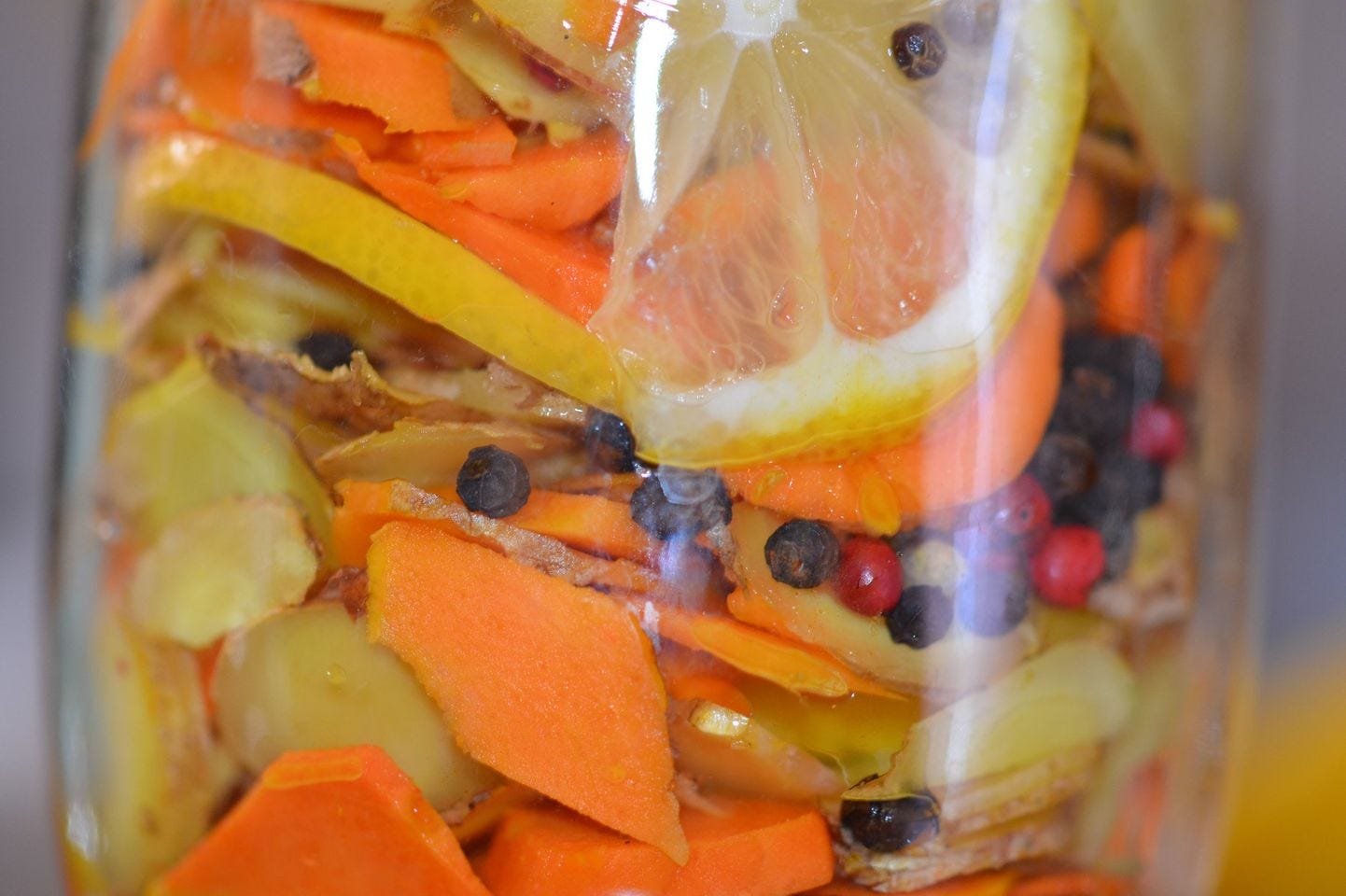
We can insure the food we grow at home is also free of harmful chemicals that cause cumulative damage to our internal organs (damage that can lead to things like cancer, digestive disorders and neuro-degenerative diseases down the road). Thus growing our own food at home (in rich living soil) means less time and money spent on medical costs.
8. Live a longer and more full life:
There is a lot of evidence, about how gardeners live up to 14 years longer than non-gardeners.
Certainly, there are many factors involved, but I think there are some key things that gardeners do that could contribute to longer life:
For one, typically, gardening isn’t done at night, so while tending a garden, one is usually in the sun consistently. The body naturally produces Vitamin D from sun exposure, and since Vitamin D is protective against types of cancer, infections and heart disease, it is logical that those with higher Vitamin D levels could live longer.
Secondly, gardening, by its nature, means sticking your hands in the soil. While our society shuns ‘dirt’ and invents things like chemical hand sanitizer, dirt can actually be good for you! In fact, lack of ‘dirt’, and the soil borne organisms that come with it, has been linked to higher instances of allergies and auto-immune disease.
Soil is an incredibly rich source of natural bacteria, minerals, and microorganisms. Touching the soil regularly exposes the body to beneficial (and small amounts of harmful) microorganisms that can boost the immune system. Since beneficial bacteria and gut health are so vital to overall health, it is logical that the immune boosting properties of living soil increase longevity as well.
When we eat nutrient dense home grown food we supply our bodies with the nourishment that increases not only our longevity (adding years to our life) but we also increase the quality of life in those years. Energy levels, cognitive function, maintaining cardiovascular resilience and muscle mass are linked to diet. When we eat fresh high quality food we increase the level of all those things, making every moment we live on Earth full of more possibilities and joy since our bodies are capable of doing so much more and for so much longer.
9. Growing our own food means we are boycotting large industries and institutions that do much harm to the Earth:
Large scale degenerative agricultural practices (which are often perpetuated via involuntary governance systems) have been a leading cause of the downfall of many ancient civilizations. The same degradation of soil that was in part responsible for the fall of the Roman empire is amplified and increased in magnitude by our modern technology that not only involves destructive tilling practices (that destroy soil structure, beneficial organisms, leads to soil erosion and eventually desertification of entire regions) it also involves the use of synthetic fertilizers and detrimental pesticides and herbicides that poison our water, soil, air and our bodies.
The truth of the matter is that we are losing our topsoil at an alarming rate due to the activities of humans, especially in the past century. This is the result of large scale mechanized tilling dependent and synthetic petrolium derived NPK agricultural practices and in a larger context the degenerative practices spanning millenia. Over 20 BILLION tons of soil a year is currently being lost due to deforestation, backwards thinking and the adversarial modern approach to farming which wages war on microbiology, insects, plants and fungi rather than symbiotically working in alignment with the web of life. Heavy tilling, prolific glyphosate and other types of toxic biocide usage, synthetic petrolium based NPK inputs and monocropping have desertified huge portions of once fertile land.
When we choose to grow our own food, we are withdrawing our support from those industries as we are not buying the products produced by their destructive agricultural practices.
Furthermore, above the massive agricultural corporations is another toxic and detrimental industry, the private central banking cartel. These are people that have invented elaborate systems so that they can print/create money which allows them to have material wealth, dominate others, and then go buy food from farmers who work the land. They do this without lifting a finger, while the common people (most who are unaware that there are people who have set this up) end up working hard all day at a 9-5 job to get paper or digital currency from those first people, then go and give that paper or data to a farmer (or grocer who got it from the farmer) and get 'food'. Why not skip all the middle men? Grow your own food, nourish the body and soul, and plant the seeds for not only ourselves, but future generations to have an abundance of True Wealth.
Beyond just boycotting degenerative industries and institutions, gardening (when done regeneratively and using permaculture design methods) can actually create microclimates within arid climates (literally reversing desertification and creating self perpetuating oasis'
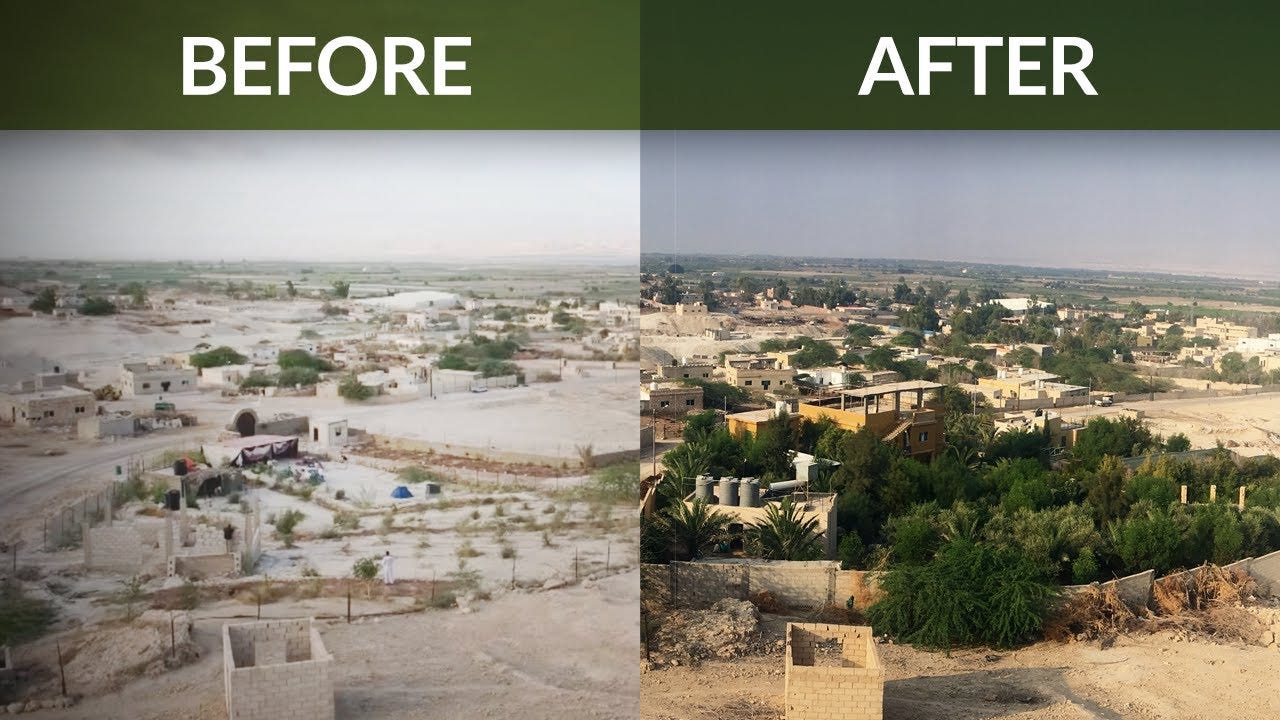
Morocco provides another example. It appears that many generations ago people were practicing something similar to what we now call "permaculture" and "food forest design" (working with nature to encourage a succession of food bearing plants that fill every niche in an eco system, becoming self-sustaining and self-perpetuating and providing habitat for many creatures as well as food and shelter for humans).
The ancient food forest in Morocco exists in the midst of a desert. Yet it is a forest eco-system that protects / builds soil, holds moisture and produces abundant food crops. (Date palms are the main overstorey species with an understorey of carob, bananas, quince, olives, figs, pomegranates, guava, citrus, mulberries, tamarinds, grapes... and many more smaller species.)
10. Growing our own food means leading by example and showing the benefits of extremely valuable life skills to the young ones who look up to us:
How nature-oriented was your childhood? Do you remember admiring flowers in full bloom, while chasing the butterflies and bugs hovering nearby?
That may not be an experience shared by youngsters today. A recent UK study has revealed 83% of children between the ages of five and 16 can’t identify a bumblebee.
When 1,000 children were shown pictures of native plants and animals, 82% did not recognize an oak leaf and nearly five out of 10 failed to spot a bluebell.
We live in a time where most children in Canada and the US are capable of identifying over 1000 corporate logos, yet they can only identify less then 10 plant species. In this time of a hyper-distracted and over stimulated chemical/digital culture, offering avenues for children to slow down and reconnect to things that really matter in life (like gardening) is a very meaningful gift we can share with the children and future generations.
11. Exercise :
Growing your food, getting outside, breathing fresh air and being closer to nature all provide wonderful health benefits. But gardening also offers physical activities that can improve the big four – endurance, strength, balance and flexibility.
Caring for the soil and garden plants can be made less physically strenuous than a conventional approach using methods like no till gardening, companion planting, ‘stacking functions’ and other permaculture techniques, but cultivating the soil and growing delicious and nutritious food inevitably means moving around regularly, bending, stretching and lifting. Regular exercise and a healthy diet prevents (and can help address and reverse) obesity which can lead to diseases such as cancer, heart disease, and high blood pressure.
12. Growing your own food and medicine in a garden sabotages the plans of the megalomaniacal oligarchs that want to control every aspect of our lives:
I consider saving heirloom seeds as an act of sabotage as it throws a monkey wrench into the machinery of the global corporatocracy (that wants to own all seed, buying out and shut down the small family owned companies, patent what they can and perpetually profit from their false claims of owning intellectual rights to the genetic fabric of life).
We can effectively sabotage their plans for erasing our shared living cultural heritage, nutrient dense diversity of open pollinated crops and our ability to save seed for free by engaging in what Vandana Shiva calls Seed Satyagraha in each of our households. https://seedfreedom.info/campaign/seed-satyagraha-civil-disobedience-to-end-seed-slavery/
When we are not only saving heirloom seed, but also growing and preserving food and medicine from our garden we are also engaging in an act of sabotage. As some of you may know, the oligarchs are working diligently to cripple the conventional farmers and global food supply via a variety of means. Creating decentralized food systems that are self-perpetuating (regenerative gardens and/or food forests) sabotages their plans to create a situation where the population is dependent on their centralized food infrastructure (and thus helps to de-fang their plans to use CBDC and social credit tyranny to force compliance through the dependence of the masses on their systems for our basic necessities).
These forms of sabotage also cripple their ability to enforce their totalitarian schemes on future generations, for through the act of saving seed, sharing it (and regenerating the earth at the same time) we begin to create communities that can be like islands of resilience and abundance that will be immune to the financial coercion tactics and digital shackles that may be utilized in the future.
Each of us can do this to some degree, we can sabotage their plan to make us all into totally dependent consumers of mass produced gmo garbage ‘food’ and instead take back our food sovereignty.
13. Gardening Strengthens, Nourishes and Heals Communities:

Growing food brings families together in the garden and at the table. The tending and harvesting rituals slow down one's lifestyle and encourage more home-cooked meals. Gardens can also be social magnets that get neighbors talking over the fence, connecting families to their communities. Through cultivating and nourishing the soil, connecting with our neighbors and sharing the resulting abundance we begin to build resilience, symbiosis and lasting bonds throughout our community as a whole. In a time when propaganda on the tv, various digital addictions (video games, social media etc) and a materialistic lifestyle has come to dominate the lives and thinking of many in communities in the west, planting and sharing the abundance from one’s garden can serve as the most valuable and desperately needed kind of medicine for a world that needs to reconnect to the land where their food comes from.
While it is true that many of our communities (as well as much of our dominant western culture and broader societal infrastructure) is broken, this does not mean we should give up or lose hope. We can find wisdom and paths to healing through philosophies such as the Japanese art of Kintsugi.
The art of Kintsugi involves restoring broken ceramics by fusing the broken pieces back together with gold. It is an art form built on the idea that in embracing flaws and imperfections, you can create an even stronger, more beautiful piece of art. Every break is unique and instead of repairing an item like new, the 400-year-old technique actually highlights the "scars" as a part of the design.
Using this as a metaphor for healing ourselves, our communities and our society as a whole teaches us an important lesson: Sometimes in the process of repairing things that have broken, we actually create something more unique, beautiful and resilient.
When we re-connect with the living planet in a reciprocal relationship as our ancestors did, nurturing the land and our bodies through cultivating food and medicine crops in a way that gives back, we are mending the broken relationship that humanity has with the living world that sustains us. We are healing the fragmentation of our species and how we connect to our Mother Earth, and doing it in a way that (if done with love and care) can create a connection that is even more beautiful than it was before.
"As it stands, the prodigious powers of human creativity cancel each other out. The crystalline matrix of our co-creation has burst into shards." - Charles Eisenstein (from his essay titled "A Temple Of This Earth")
We can heal, merge and galvanize the fragments of our human family into something more beautiful than anything that has existed here in the past.
There are many beautiful examples of this beginning to happen all over the world… a few of those include the Food Is Free Project, the “We Are Human, We Are Free” worldwide nonviolent resistance movement, the Grow Free movement, John D. Liu's Ecosystem Restoration Camps and The R-Future Conference.
14. The more garden you grow, the less you have to mow:
First of all, why do we even have front lawns in the first place? People rarely use that space to enjoy with their family and yet they spend large amounts of time and money maintaining them.
The History Of Front Lawns:
In the 17th century in England, we first saw the deliberate growing of trimmed grass by the wealthy and the aristocracy as a show of affluence. During those times, land was a valuable resource, as it was used to grow food, which provided a source of nutrition and a source of income. For a wealthy landowner to simply grow grass was a show of extravagance, flaunting the fact that they had land to waste as they pleased.
The enormity of such a status symbol may not be immediately obvious to us in our current day and age until we realize that lawn mowers did not exist at the time! These lawns were cut by hand — by servants using scythes, sickles and shears. The amount of labour involved in maintaining a large lawn was considerable, and only the wealthiest in society could afford to pay people to carry out this work.
The first mechanical lawn mower was invented in 1827 and patented in 1830 by engineer, Edwin Beard Budding (1795-1846) from Stroud, Gloucestershire, England.
After the lawnmower was invented, having a lawn no longer remained the mark of wealth and status that it once was, but this status symbol now became accessible to the masses. From that time onward, we’ve just kept on growing lawns in our front yards, forgetting that they were once grown as a symbol of wealth. Just another one of those unquestioned traditions that people blindly follow without knowing why.
Essentially, Hundreds of years ago, grassy lawns originally became popular to prove a person was wealthy enough to waste land rather than farm on it.
Here are some of the reasons we need to stop obsessing over perfect lawns, and make the move to regenerative gardening
Noise and air pollution – Lawn mowers and similar equipment account for 5 percent of air pollution, and a fair amount of the noise pollution as well.
Water wastage – Lawns require lots of water to maintain their perfect green color, accounting for 30-60% of all urban fresh water usage. Generally, the more that an area is water-insecure or stressed, the more that lawns and landscaping contribute to the problem by relying on the already limited water supply to not shrivel and die.
Water supply – The water supply in the ground is then poisoned as the toxins seep into our groundwater, into our tap water, and then into us through various ways. Even if you don’t drink tap water, we bath, shower or swim in it most often. The skin is our largest organ and absorbs toxins quite easily.
Higher concentration of poisons – Homeowners spend billions of dollars and use 10 times the amount of pesticide and fertilizers per acre on their lawns as farmers do on crops. Even though agricultural land takes up much more space than lawns, pesticide usage in urban areas is far more concentrated.
Toxic toll on pollinators – The poisons sprayed on lawns are killing other plants/weeds that bees need to survive. As well, studies have shown that the bees are picking up the toxins, which is killing them directly, as well as the bees are spreading the toxins around.
Pets, wildlife and children – While they may tell us to stay off the lawn for a few days after spraying, the poison doesn’t just disappear. Our pets, wildlife and children end up absorbing the poison by just touching the lawn after.
Soil – Monocrops such as grass destroy the soil, which permaculture repairs the soil.
Clearly lawns are not the answer, even if you take the poisons out. The issues with pollinators from removing the other plants/weeds, wasting water, and the destruction of the soil are still problematic. Its time to grow food my friends!
Wouldn’t you rather look out at a bunch of vegetables, fruits and flowers growing in your garden than a wide expanse of grass you have to constantly take care of that doesn’t feed you anything?
For more info read this article.
15. Help the bees:
When you grow a wide variety of heirloom organic vegetables, herbs, berry bushes and/or fruit trees, you are helping the bee population to have a diverse source of nectar from the flowers. Bees (and other pollinators) are essential to our continued survival and way of life. Without bees to pollinate our fruit trees and vegetables large portions of the population would starve.
Globally, honey bees are disappearing at an alarming rate because of the spread of urban development, increasing pesticide and chemical use, parasites, disease and loss of habitat. Bees struggle to survive in our cities and suburbs because of these impacts
Why are bees so important?
1/3 of all food in the world is dependent on pollination
3/4 pollination of main crops are pollinated by insects (most efficient are honey bees)
so many vegetables and fruits require bees for pollination
without bees our food sources would reduce to some grains, a few fruit species and fish.
grazing animals rely on clover and other bee pollinated pastures
the more bees in your garden, the bigger your harvest will be
What do bees need?
range of flowering plants makes them stronger and healthier
plants flowering throughout the year
open simple flowers – these are easiest for bees to collect nectar and pollen from – avoid modern hybrids with many petalled, dense flowers
access to fresh water
habitat and protection – logs, hollows and homes

In recent years, the bee population has been declining due to the widespread use of toxic herbicides and pesticides like glyphosate aka “round up” and the destruction of their natural habitat. The more diverse and continual pollen available from a vegetable/herb garden (or food forest) makes for healthier bees and in turn more food for your family.
Bees have good colour vision and especially like blue, purple, violet, white and yellow. Create floral bull’s eyes — plant a single species in clumps about four feet in diameter instead of in scatterings.
Many bees feed on one or a small number of plants. Include plants with a variety of flower shapes and sizes to attract a greater diversity.
What plants attract bees?
Some Herbs That Bees Love:
Basil, chives, comfrey, coriander, fennel, lavender, lemon balm, mint, mustard, oregano, parsley, rocket, rosemary, sage, tulsi, thyme, yarrow, Borage, and anise hyssop.
Veggie Flowers:
Brassicas, capsicum, chilli, cucumbers, leeks and onions, pumpkins, squash and tomatoes
Flowers
Alyssum, calendula, cornflower, cosmos, daisies, echinacea, geranium, marigold, roses, salvia, sunflowers, zinnia, lavender and many more!
Click here for more info on how to create a bee-friendly garden.
16. Homegrown food contains more Qi (or 'Lifeforce"):
Beyond just containing more nutrients and flavor, food grown in rich fertile soil with love also possesses non-physical energetic attributes that it's store bought (mass produced/hydroponically grown) counterparts do not. Many ancient traditions express a shared concept that as the foundation of all life is a field of energy. This field of energy has been given many names, Qi, Prahna, Vibration etc. The plants and fungi we eat all contain this energy (to differing degrees). Our scientists are now beginning to be able to measure this energy field with experiments that show how non-physical stimuli like music, thought, emotion or words can influence the way plants grow. When we plant a seed in the rich living Earth in our garden and nurture that life to grow the resulting food we harvest is vibrating at a very high level on the quantum scale. This becomes apparent when one bites into a juicy homegrown tomato or cucumber and experiences not only a burst of flavor and other sensory pleasures but also a burst of uplifting energy that can leave one feeling grateful, connected and resonating in tune with Mother Earth.
17. Soil microbes have anti-depressant and cognitive function boosting capabilities:
That means working in the garden (touching and smelling that rich soil) has now been proven to have benefits to the human brain and immune system. Gardeners have been saying that working with their hands and the smell of the rich earth makes them happy for centuries and now science has discovered one of the reasons why that is! Interacting with diverse array of beneficial microscopic organisms in the kitchen (with fermented foods) and in the garden (through working with living soils) increases the resilience of your body through the symbiotic relationships that take place between those microbes and your cells in your gut and in your blood stream/brain. Eating fermented foods... touching and smelling rich living soils these are some of the ways we open up a two way communication to Mother Earth and her ancient memory of health, symbiosis and regeneration through receiving data on a molecular and cellular scale through our microbiome. Each handful of living soil you lovingly gather up to support your seedlings is opening up a symbiotic dialogue between your cells and the more ancient organisms that call this world home. Get outside, work in the soil and get your hands dirty more often this year to improve the function of your immune system and brain.
Articles and research:
https://qz.com/993258/dirt-has-a-microbiome-and-it-may-double-as-an-antidepressant/
https://www.gardeningknowhow.com/garden-how-to/soil-fertilizers/antidepressant-microbes-soil.htm
https://www.discovermagazine.com/mind/is-dirt-the-new-prozac
Soil Bacteria Work In Similar Way To Antidepressants: https://www.medicalnewstoday.com/articles/66840#1
Identification of an immune-responsive mesolimbocortical serotonergic system: Potential role in regulation of emotional behavior: https://www.ncbi.nlm.nih.gov/pmc/articles/PMC1868963/
18. Growing Organic Heirloom Crops At Home Preserves Genetic Diversity
As noted above Until a hundred or so years ago, farmers saved their seeds to plant for the next season. Thousands of varieties evolved across the globe, constantly adapting to their environment and to the preferences of the culture and cuisine.
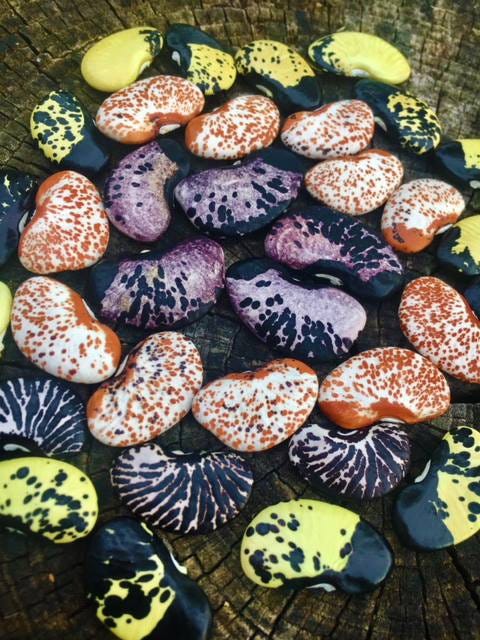
Just 50 years ago, some 1,000 small and family-owned seed companies were producing and distributing seeds in the United States; by 2009, there were fewer than 100.
Thanks to a series of mergers and acquisitions over the last few years, four multinational agrochemical firms — Corteva, ChemChina, Bayer and BASF — now control over 60 percent of global seed sales.
The slow march of seed consolidation suddenly turned into a sprint. Chemical and pharmaceutical companies with no historical interest in seed bought small regional and family-owned seed companies. Targeting cash crops like corn and soy, these companies saw seeds as part of a profitable package: They made herbicides and pesticides, and then engineered the seeds to produce crops that could survive that drench of chemicals. The same seed companies that now control more than 60 percent of seed sales also sell more than 60 percent of the pesticides.
GMO byproducts degrade and deplete soils of vital minerals and beneficial bacteria, both of which protect crops from pests, viruses, and other threatening elements. Glyphosate which is used in conjunction with GMO seeds does not biodegrade, which means it is continually accumulating in the environment without restraint, perpetually altering soil composition and contaminating natural resources.
If what we put into the soil is toxic, what we get out is toxic.
Growing heirloom garden crops using Regenerative cultivation techniques reduces the use of harmful chemicals, improves the soil’s ability to sequester carbon and retain water, and strengthens biodiversity.
These efforts need more than our support; they demand our participation, the same engagement with seeds that humans had for thousands of years. Seeds not as commodities but as a vital part of our cultural commons; seeds not as software, but as living systems: seeds as the source of a new food revolution.
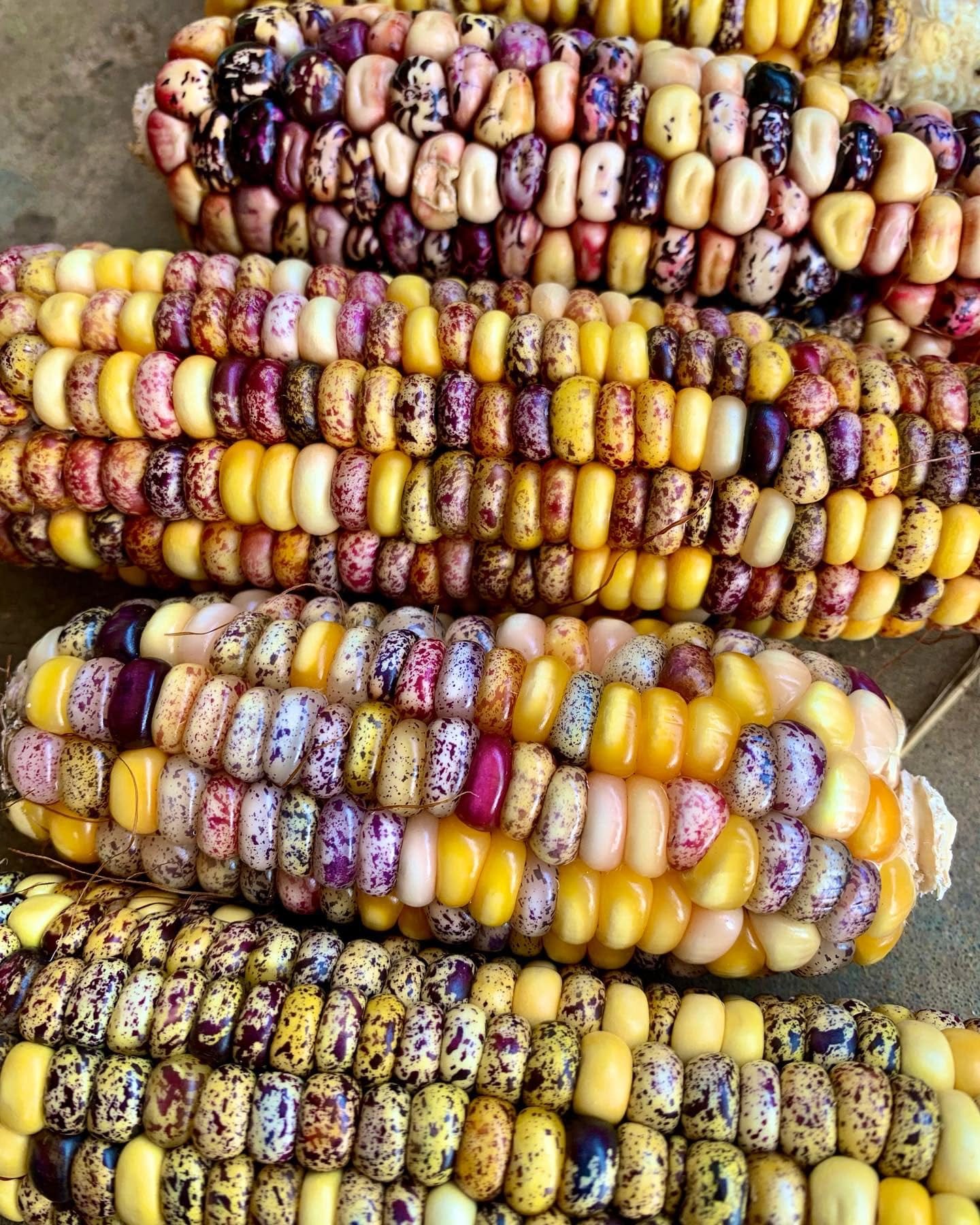
What can you do? Share this article with people you feel would be open to starting a garden, support companies that are protecting our heirloom seeds and take action to grow heirloom varieties in your own gardens (saving and sharing the resulting seed) to protect and preserve the biodiversity that took countless generations to create.
The act of saving seed from your heirloom garden crops is an act of love and hope for tomorrow. Not only does this act save one money and ensure food security for ones household, it also offers one the unique sense of satisfaction that comes from the knowing that each successive year seeds are saved the varieties of seeds are becoming more genetically customized to flourish in the specific climate and soils they are being raised in.
It is an act of co-creating with the forces of nature and an act of faith for it means holding that hope in our hearts that each spring we will plant those seeds and share the resulting abundance with our family and friends. In my upcoming book I will provide detailed instructions on how you can save seed from many different heirloom crops.
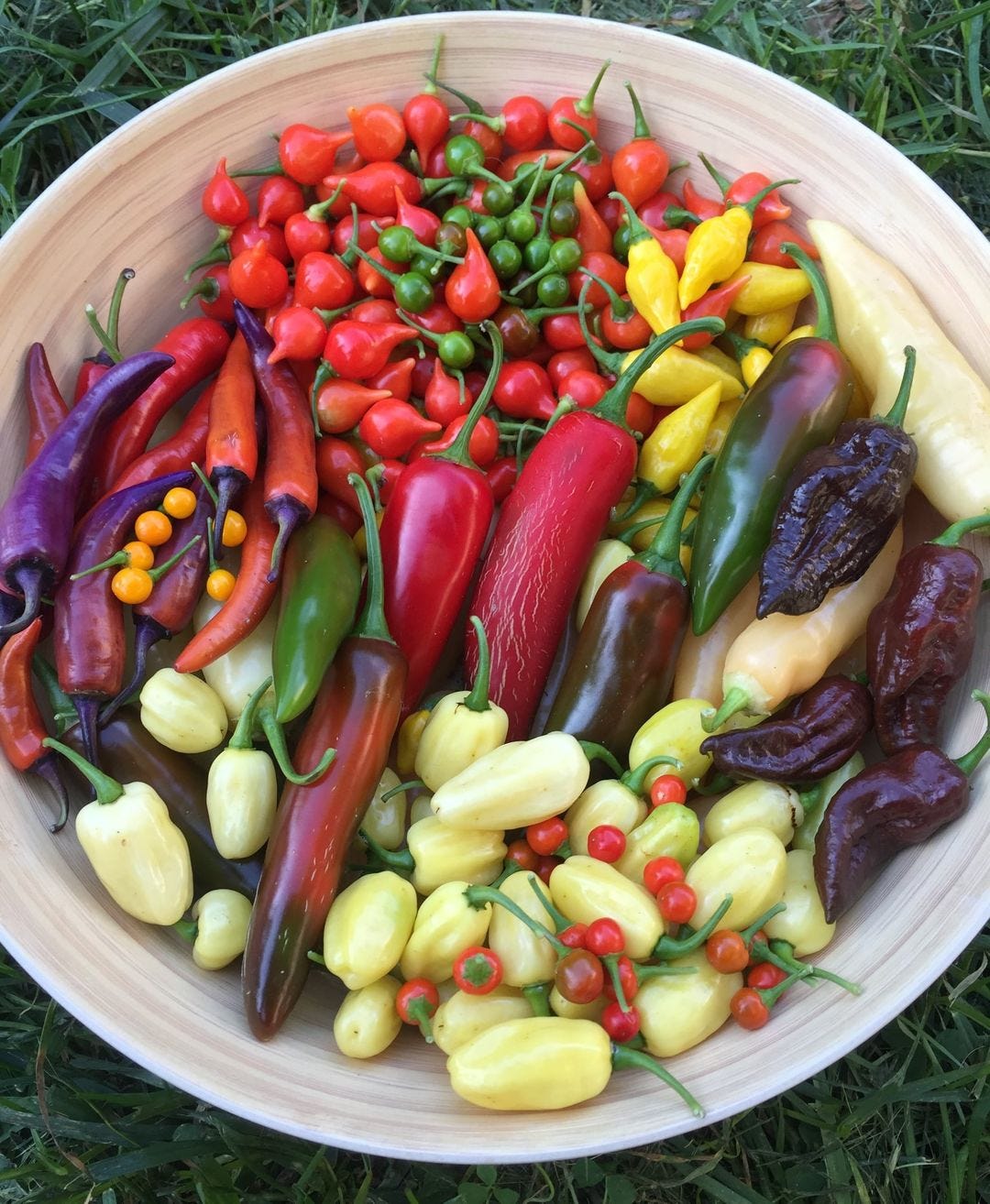
Saving seed is also a way to honor and connect with our ancestors in a meaningful way. If we source out heirloom seeds that have been tended for many generations and have deep roots in cultural traditions (some with origins before the dawn of industrial civilization) we are protecting and caring for the living lineage that was tended by our ancestors with love and purpose. In doing so we are showing respect for the hard work they put into saving seed from successive generations of the best crops so we could have access to many excellent varieties today. When we cultivate, nurture, harvest, cook with and save seed from heirloom varieties we are using our hands and our hearts to tend to the living legacy of those who came before us, we are keeping their culture alive, we are saying thank you to them and we are ensuring a good future for those who come after we leave.
19. Growing your own food nurtures a connection with your food and a lasting feeling of gratitude:
When you put TLC into caring for your garden plants and harvesting high quality crops that are the result of your hard work and patience this compels you to feel more of a connection with that food. This connection motivates you to avoid wasting, to cherish the gift of the nourishment it provides and to do so in a way that is creative and honors the beautiful produce you have grown. Thus, gardening invites ones to have reverence and deepen their connection to the food that nourishes them. This, in turn, nurtures a sense of gratitude, which in turn results in one being able to enjoy the rest of one’s life with greater depth and appreciation.
“While expressing gratitude seems innocent enough, it is a revolutionary idea. In a consumer society, gratitude is a radical proposition. Recognizing abundance rather than scarcity undermines an economy that thrives by creating unmet desires. Gratitude cultivates an ethic of fullness, but the economy needs emptiness.”
― Robin Wall Kimmerer (Braiding Sweetgrass)
20. Growing a garden can also be a form of artistic expression providing poetry for the eyes
Not only does gardening invite one to be grateful and have a connection with their food, is also offers many opportunities for creative artistic expression. One can create a garden space that offers both poetry for the senses (in the forms of colors, aromas, forms, flavors and textures) as well as nourishment for the body.
Thus, gardening translates into inspiration in the kitchen and in life in general. It invites our imagination to see beyond the limitations of previous ways of thinking and combine what it in our heart with what is in our head.
21. Regenerative Gardens Provide Habitat and Sustenance For Wildlife:
Bees are not the only non-humans that benefit from the presence of a garden. Other pollinators and garden visitors will find sustenance, shelter and opportunities for socializing in your garden space.
(below are some pics of regular visitors to our garden)
Creating a garden invites many winged beings and others to visit, bringing life, color and joy into your life.
22. Gardening invites you to develop your pattern recognition skills offers one an opportunity to gather valuable knowledge via practicing autodidacticism
When you really think about it, plants, fungi, microbiology (even rocks) are ancient libraries in which the history of millions of years are inscribed. When we observe the geometry of the leaf of a plant we are observing a mechanism for not only transforming/gathering energy but also moving water against the force of gravity in an extremely efficient way. We are also observing the architecture of a self-healing structure that is resilient and flexible in the face of wind, water, cold and heat. These facets of a single plant leaf (and more) are the result of millions of years of trial and error as nature experimented with what works and what does not, finding equilibrium after eons but never the less always continuing to adapt and evolve.
I feel we have much to learn from these ancient libraries of the living world and this is especially true when one closely obverses the interdependent/symbiotic relationships that exists in nature between the plants, fungi, microbiology (and yes even rocks too).
Thus, gardening invites us to walk an enriching path of autodidacticism (seeing nature as our teacher). This can be described as “self-learning” and “self improvement” since we are of course part of nature and the community of life that calls this planet home.
Each time we look closely in the garden (or forest) with an open heart/mind Mother Nature is gently reminding us that we do not need massive expensive hot fusion machines, burning fuel or smashing atoms together to extract usable energy or move our vehicles around. If we take a look in the forest or the garden we can clearly see more efficient ways for (via biomimicry) for accessing energy (in a decentralized and scalable format) and propelling objects without the need for combusting anything.
Ralph Ring was a man that went down that path. He worked with Otis t. Carr (Protege of Nikola Tesla) to align with the forces of nature in order to create a ground breaking new form of propulsion / energy generation technology. Their method involved harmonic resonance and tapping into what scientists now call “the zero point field”. This is yet another method in which “mass cancellation” (commonly referred to as “anti-gravity”) can be achieved in a controlled, reproducible, scalable and practically applicable way.
He began his journey to create ground breaking technologies through simply observing a bumblebee.
23. Nurturing Gift Economics As Medicine For Our Ailing Society
(The following is an excerpt from my book pertaining to a concept called Gift Economics which I feel offers some important perspectives and sign posts for us on the fork in the path that lies before us now)
Under our current model of fiat currency ("money" created by private central banks equaling endless debt, which is passed on from governments that borrow onto tax paying citizens) is used for the 'propping up' of our top heavy and hollow economy. This results in human behavior that is highly toxic, sometimes psychotic and detrimental to the environment. This is essentially a debt slavery system that promotes extreme poverty, endless war and a parasitic relationship with the ecosystems that we depend on to survive. This system is not honourable, moral, nor sustainable (and it is certainly not regenerative).
Thus, if we wish for our modern civilization to continue (and seek to leave a world worth living in for our children) we must abandon ideologies and belief systems (such as capitalism) that teach people that the acquisition of material wealth, competition rather than cooperation, and the endless commodification of aspects of nature is what we should strive for as individuals, organizations, communities and nation-states. It is impossible to cling to unnatural concepts like capitalism while simultaneously claiming to care about the future of our children, the integrity of the ecosystems and while claiming to want to help create a more sustainable, regenerative and equitable society in the here and now.
Investing our time and energy in humanocentric systems of thought is a path of stagnation which comforts our ego but does not honor the truth of what we have learned about nature in the past century, nor does it serve to unlock our true potential as human beings. Through embracing humility and reverence, rather than self importance and anthropocentrism we can lend our sentience and free will towards a meaningful path of symbiogenisis between humanity and the many other beings who call this living planet home. I feel this new and ancient path (defined by humility and symbiosis) can serve to align us with a way of living that nourishes the living world that sustains us and encourages the unfolding of ever higher expressions of human potential in the process.
I was introduced to this concept of a “Gift Economy” through an excellent book called "Sacred Economics" by Charles Eisenstein.
Here is a video where he explores these concepts recently
I will also share a quote of his now to further illuminate the nature of our current economic model so that we may be in a better place to see how we need to change it to create a better future.
"Scarcity is built into the money system. On a most obvious level, it is because of the way money is created (as interest bearing debt). When the bank lends money into existence, or the federal reserve creates money, the money comes along with a corresponding amount of debt. And the debt (because there is interest on it) is always greater than the amount of money.
'Growth' is another thing that is built into our money system. Basically 'economic growth' means that you have to find something that was once nature and then make it into a good (or something that was once part of a gift relationship) and make it into a 'service'. You have to find something that people once got for free, or did for them selves (or for each other) and then take it away and sell it back to them somehow."
- Charles Eisenstein
Now here is the good news! We can regenerate our communities and our economy and the garden is a great place to start. When we take time to compost our kitchen and yard waste and build living soils we are giving back to the Earth that has given so much to us. In doing so we are choosing to strengthen the living fabric on which a thriving ecosystem can be nurtured (that will also provide food for you and your loved ones, cutting down on grocery costs, reducing our dependence on and support of the above mentioned toxic industries that do so much damage to mother earth and our fellow species that call her body home).
Composting is medicine for the land and medicine for the soul. It offers us a tangible way to connect with and give back to the living planet that sustains us all. When one looks at the act of composting through a more linear or utilitarian lens it is an act that facilitates the transformation of free materials into something extremely valuable and useful for saving money on grocery and medical bills.
Through offering our hands to accelerate the natural cycles inherent in composting we involve ourselves in the sacred act of reciprocity and begin to nourish a relationship with the living Earth that results in nurturing the Gift Economy and creating True Wealth.
What is a “Gift Economy”?
Many centuries ago in a time before centralized money systems there were indigenous peoples living in connection with the land and each other. While some of these ancient peoples utilized various forms of barter and trade there are also examples of ancient cultures (from several different continents) that not only did not use money.. they apparently did not use "barter" and "trade" as a regular means of commerce either. These cultures were described as operating on a mostly "gift based economy". The innate characteristics of this 'gift economy' would have been effective at mitigating manifestations and behaviors of the ego (like greed, thievery or deceit etc.) because in those tightly knit communities such behavior was easily detected and the individual responsible would have been ostracized (thereby forcing the individual to change their ways or have to fend for themselves). While there would have inevitably been those who sought self interest and greedy behavior in money-less societies.. it would seem to me that they would have a lot less motivation and rewards for doing so in such a situation.
Another way to look at a manifestation of a “gift” based economy is the system of exchange between organisms that takes place in the soil of a mature eco-system. You could describe it as a “soil-stock market” (in which many different individuals make deposits and invest their time and energy and then at some point they are gifted a return on their investment in the form of nutritious food). The soil is a nexus for a constant exchange of the gifts offered by countless species that all do their part to give to the living soil. The cycle of gifts continues as the living soil offers its gifts to the plants and fungi which in turn offer their gifts of nourishment to countless species that in turn deposit nutrients back into the soil to complete the cycle of gifts. Mature eco-systems are so resilient and productive because they are nurtured by myriad cycles of gifts that flow between the species that call that place home. Each being offers it’s own unique gift and in some way contributes to the health of the collective.
The institutions and social structures that are common in modern day society seem to be based on domination, competition, and egotism and not on nurturing. The shift in perspective offered here is to review everything in terms of nurturing, or to phrase it another way, in terms of gift giving. The thread of gift giving and receiving begins in every life in the biological and emotional needs provided by mothers. We are born into a world and showered with gifts.. love, attention, nourishment and beauty all around us. As time goes on in the individual life and in the existence of institutions and social structures, this thread is altered, turned back upon itself, we are programmed to compete, and our innocence and giving nature is used and abused for domination. Rather than a free flowing cycle of gifts, our modern day society operates on “Exchange”. This requires quantification and measurement, an equation between what is given and what is received to the satisfaction of both parties.
Exchange is at odds with gift giving. The competition which is characteristic of Capitalism pushes the exchange way against the gift way.
Even the way most people go about perceiving and engaging in romantic relationships is now often based upon exchange (rather than gift giving). I have spoken with many who described the reason they got married being related to financial security (not their want to share their love with the other).
Giving in order to receive - exchange - is ego-oriented. It is the satisfaction of one's own need that is the purpose of the transaction. Giving to satisfy another's need is other-oriented. These two motivations constitute the basis of two logics, one of which is intransitive (exchange), the other of which is transitive (gift giving).
Exchange creates and requires scarcity. If everyone were giving to everyone else, there would be no need to exchange. The market needs scarcity to maintain the level of prices. In fact when there is an abundance of products scarcity is often created on purpose. An example of this is the plowing under of 'overabundant' crops (which may happen even when people are standing by who are hungry). On a larger scale scarcity is created 1. by the channeling of wealth into the hands of the few who then have power over the many; 2. by spending on armaments and monuments which have no nurturing value but only serve for destruction and display of power; and 3. by privatizing or depleting the environment so that the gifts of nature are unavailable to the many. The exchange paradigm (which includes concepts like “capitalism” and it’s ugly offspring “consumerism”) is a belief system which validates this kind of behavior. Exchange is adversarial, each person tries to give less and get more, an attitude which creates antagonism and distance among the players. Gift giving creates and requires abundance.
Though, when we take a step back and discard all the programming we can see that almost everything from nature to the dynamics of many ancient cultures can be viewed as gift-giving in some form. We can closely observe the many facets of nature in our garden that involve cycles of gifts beings given between organisms and then imagine ways we can emulate these circles of gifts in our daily lives and even in the structure of our larger society.
What does that look like for humans in the context of modern day society?
When we engage in Reciprocity with Mother Earth (through regenerative gardening) and then pass on the gifts she shares with us (in nutritious food, knowledge and heirloom seeds) we nurture the cycle of gifts to flow and grow exponentially. In doing so, we not only increase the resilience and health of our households and communities in the present, we also ensure a brighter future for those who will call this place home after we are gone.
One of the beautiful things about investing in the Earth (through gardening and saving seed) is that we are always gifted more than we need for ourselves. Thus, an investment in the Earth compels us to share the abundance with our neighbors and the communities we are a part of.
This is one expression of what nurturing the “gift economy” and working to regenerate our local communities can look like.
Other ideas could take the form of collectives of people getting together to create community gardens and kitchens in which an abundance of food is grown and shared with each other and those in need. Each person gives a few hours of their time each week to tend the garden and in doing so everyone benefits immensely from the gifts nature provides. Taking such an endeavor a step further could involve setting up after school programs where we teach kids how to cultivate their own food, save seed from crops, and then send them home with the seeds and the knowledge so they can re-create the regenerative abundance where they live.
Another expression of a “gift based economy” is something called “Gift Circles”. These are a simple format for people to bring what they have to freely offer and to ask for what they need without direct barter or obligation. Note there is a difference between a ‘gifting circle’ and a ‘gifting scheme’ (that is really a pyramid scheme). When people gather in person or online because they are recruited and the recruiter receives money or gifts for each person recruited, that is a gifting scheme. True gifting circles can be very beneficial for all involved. They can help people save money and waste fewer resources. They exist in many cultures and communities and help build relationships within those circles. Members may or may not know each other, and they operate in a similar way: members assist each other in fulfilling wants and needs with their many resources. There are also things that have innate value that do not cost any amount of monetary currency that can be part of a gift based economy. When we operate from the heart, we have an abundance to give each other, in different ways. Think of it this way: when you give a smile or hug and someone smiles or hugs back, neither of you has less but actually more of that smile or hug. There are many facets of a gift based economy that work the same way. Knowledge is another thing that in many cases can be gifted freely (which can become part of a circle of gifts where each individuals knowledge serves to enrich the other’s and everyone benefits).
There are some excellent organizations out there dedicated to regenerating communities and nurturing the gift economy like the “Food Is Free Project”, the "Grow Free" movement and the “World Central Kitchen” initiative (and many others). The key factor here is making a conscious decision to give back to the earth through composting, planting seeds, cultivating some beautiful produce, saving seed and then imagining ways that we can invite our neighbors and fellow community members to do the same. This can mean sharing some of our garden bounty with those in need (preferably along with some seeds/seedlings so they can cultivate some of their own produce) or starting a larger scale project and inviting people to participate in cultivating.
Each of us is imbued with innate gifts that we can discover and use in a regenerative and beneficial way.. it is up to each of us to discover what those gifts are and imagine how we can align them with Reciprocity with Mother Earth, regenerating our communities and reshaping systems of monetary exchange.
“What does 'economic growth' actually mean? It means more consumption – and consumption of a specific kind: more consumption of goods and services that are exchanged for money. That means that if people stop caring for their own children and instead pay for childcare, the economy grows. The same if people stop cooking for themselves and purchase restaurant takeaways instead.
Economists say this is a good thing. After all, you wouldn’t pay for childcare or takeaway food if it weren’t of benefit to you, right? So, the more things people are paying for, the more benefits are being had. Besides, it is more efficient for one daycare centre to handle 30 children than for each family to do it themselves. That’s why we are all so much richer, happier and less busy than we were a generation ago. Right?
We in the richest societies have too many calories even as we starve for beautiful, fresh food; we have overly large houses but lack spaces that truly embody our individuality and connectedness; media surround us everywhere while we starve for authentic communication. We are offered entertainment every second of the day but lack the chance to play. In the ubiquitous world of money, we hunger for all that is intimate, personal and unique.
The American Dream betrayed even those who achieved it, lonely in their overtime careers and their McMansions, narcotized to the ongoing ruination of nature and culture but aching because of it, endlessly consuming and accumulating to quell the insistent voice: “I wasn’t put here on Earth to sell a product.” “I wasn’t put here on Earth to increase market share.” “I wasn’t put here on Earth to make numbers grow.“
We protest not only at our exclusion from the American Dream; we protest at its bleakness. If it cannot include everyone on Earth, every ecosystem and bioregion, every people and culture in its richness; if the wealth of one must be the debt of another; if it entails sweatshops and underclasses and fracking and all the rest of the ugliness our system has created, then we want none of it.
No one deserves to live in a world built upon the degradation of human beings, forests, waters, and the rest of our living planet. Speaking to our brethren on Wall Street: No one deserves to spend their lives playing with numbers while the world burns.
For indeed we live in a world of fundamental abundance, a world where vast quantities of food, energy, and materials go to waste. Half the world starves while the other half wastes enough to feed the first half. In the Third World and our own ghettos, people lack food, shelter, and other basic necessities and cannot afford to buy them. Meanwhile, we pour vast resources into wars, plastic junk, and innumerable other products that do not serve human happiness. Obviously, poverty is not due to a lack of productive capacity. Nor is it due to a lack of willingness to help: many people would love to feed the poor, to restore nature, and do other meaningful work but cannot because there is no money in it. Money utterly fails to connect gifts and needs.
In a context of abundance greed is silly; only in a context of scarcity is it rational. The wealthy perceive scarcity where there is none. They also worry more than anybody else about money. Could it be that money itself causes the perception of scarcity? Could it be that money, nearly synonymous with security, ironically brings the opposite? The answer to both these questions is yes. On the individual level, rich people have a lot more “invested” in their money and are less able to let go of it. (To let go easily reflects an attitude of abundance.) On the systemic level, as we shall see, scarcity is also built in to money, a direct result of the way it is created and circulated.
The task before us it to re-align money with the true expression of our gifts. What will it take to shift away from the current money system? So I think that we are going to see a series of crisis moments, each one more severe than the last. And at each crisis moment, we will have a collective choice. Do we give up the game and rejoin with the symbiotic relationships prevalent in nature to provide our basic survival needs, heal our communities, eco-system and re-shape our economy? or do we hold on even tighter to this artificially perpetuated competitive / extractive system? It is really up to us to determine at what point this wake up point will happen."
― Charles Eisenstein
I feel we are now at one of these "crisis moments" Charles spoke of.. a choice point which offers us a pathway to healing, joy, abundance and purpose. The alternative is to hold onto this crumbling system even tighter until the next (more severe) 'crisis moment' comes along.
We live in times when developing a reciprocal relationship with the land where we live is of paramount importance. There is no elected official, institution, guru, priest or any other external force or individual who can do this for you. This is a path you must embark upon with courage and humility.. a path that walks in the footsteps of our ancestors. It requires us to look inward and remember those things that make us come alive. Those innate gifts we possess that we can share with the world for the benefit of all beings. It requires us to work with our hands and see with our hearts... and it begins with a handful of seeds and some tlc.
I hope you enjoy the above excerpt on the Gift Economy from my book.
In the spirit of helping any who are interested in starting (or expanding a garden) using regenerative and permaculture principles in this new year I am now offering a limited time New Year’s discount on digital and physical copies of my book.
I am offering a limited time 24% discount on the digital (ebook) version of Recipes For Reciprocity : The Regenerative Way From Seed To Table and a 10.00% CAD discount on physical copies of my book (from now until the end of the month).
The limited time offer discount code for both is:
2024
24. Food for the Soul:
When we take time to nurture things that grow with gentleness and patience we not only provide nourishment for our bodies, we provide nourishment for the soul. As we become more accustomed to the rhythms of nature and natural cycles in the garden we reconnect to the most innate essence of “Self” and (if embraced with humility) we are offered the opportunity to remember who and what we really are beneath all the conditioning we have received in our lives.
When we help living things to thrive and achieve their highest potential, we also enrich ourselves in a meaningful and permanent way. This life affirming experience invokes a conscious awareness of the miracle of life. It helps us to feel the awe and curiosity we felt naturally as children observing facets of nature.
The decision to continue on the ‘worn and scorched path’ (following the momentum of our modern day society that has a parasitic relationship with Mother Earth) is the path the Roman Empire took. Doing nothing is a choice, and it should also be said that even beginning by planting a single seed and caring for what grows is a choice as well .. what path we take from here is up to each of us.
Mother Earth lovingly holds out an open hand inviting us to reconnect with her symbiotically and live in abundance... it is up to each of us to choose whether we will take her hand.. or choose inaction.
To invest all our time and energy to take from nature to accumulate money and put it in a bank is to invest in a human creation based in the fear of lack; to invest in the Earth (with our hands and our hearts through nurturing a garden) is to invest in a blessing from Creator. When we choose to plant seeds and work with the earth we are choosing to invest in true abundance rather than the fear of lack. In nurturing and co-creating with Mother Earth we are giving thanks for the gift we have been given, a home, a sanctuary, a living planet that provides everything we need to live in joy, abundance and peace. All it takes is a hand full of seeds and a lot of TLC.
Another opportunity that is offered to nurture the soul when we choose to garden is that we are gifted moments in which we can choose to develop our ability to be mindful.
In consciously changing how we perceive each moment (whether we are planting seeds, making compost, weeding the garden or washing the dishes), we consciously change the structure of our brain, the bio-chemical make up of our body and even how our genes are expressed.
Therefore, we are each offered the opportunity to embark on a path to physiological and spiritual metamorphosis and all that is required to unlock that path to transformation is a conscious choice within in each moment.
Through that choice, we plant the seeds within to become the change we wish to see in the world around us. As those seeds take hold and set down roots within us (and we are living from that place of feeling and knowing the miracle of life in each moment) we can begin to plant physical seeds in our gardens and communities with a new found sense of purpose, joy and ability to appreciate all the abundance of beauty around us during our journey to co-create the more beautiful world our heart’s know is possible.
Even if we start small, if we start down the path to break from dependence on the centralized parasitic systems for our basic needs we are helping to plant the seeds for a new kind of civilization to blossom on earth.
Gratitude is one of the most important states of being and perspectives we can choose in our time on Earth, for it serves to reacquaint us with the permanent essence of “Self” that was before we came into these bodies (and will continue to be long after these bodies we inhabit cease to function).
When we nurture things to grow and pay attention to the details of the miracle that is life we can’t help but begin to see each day as an opportunity to be part of co-creating and experiencing wondrous things; working in the garden we are often gifted moments where we see that even in the most seemingly monotonous task is the opportunity to see immense beauty, look inward to better ourselves, and choose to embody love and peace (despite what others around us may be choosing). Gardening nurtures our gratitude to exponentially expand as we are invited to notice ‘the little things’ as we work in the garden. This conscious act of choosing gratitude and building more gratitude has a powerful syntrophic effect as it re-shapes our perspective, the energy and thoughts we put out (and this changes what people and situations we attract into our lives).
I hope you enjoyed this article and if you already have a big garden please share this with someone you feel would benefit from the message.
I wish you all a beautiful and hopeful beginning to 2024 and look forward to hearing about your garden plans for this year in the comment section.
May the seeds you plant with your hands, your thoughts, your love, your faith and your gratitude set down roots and become a beautiful garden that nourishes your body, mind and soul on the path ahead.


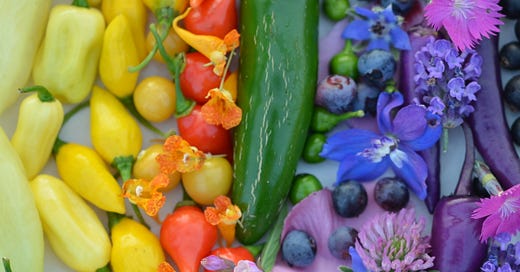


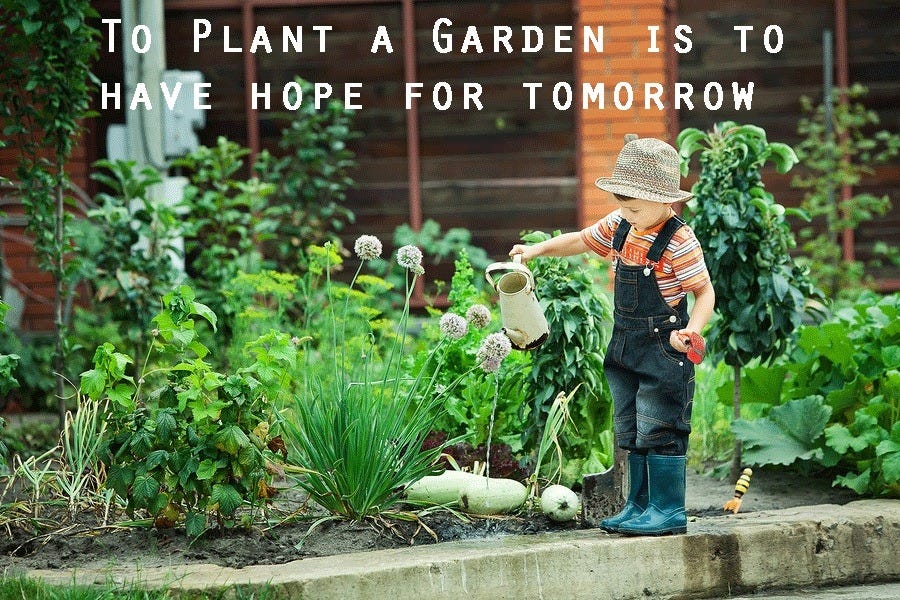
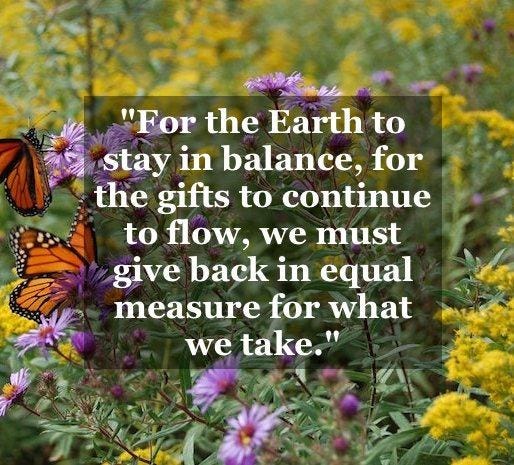
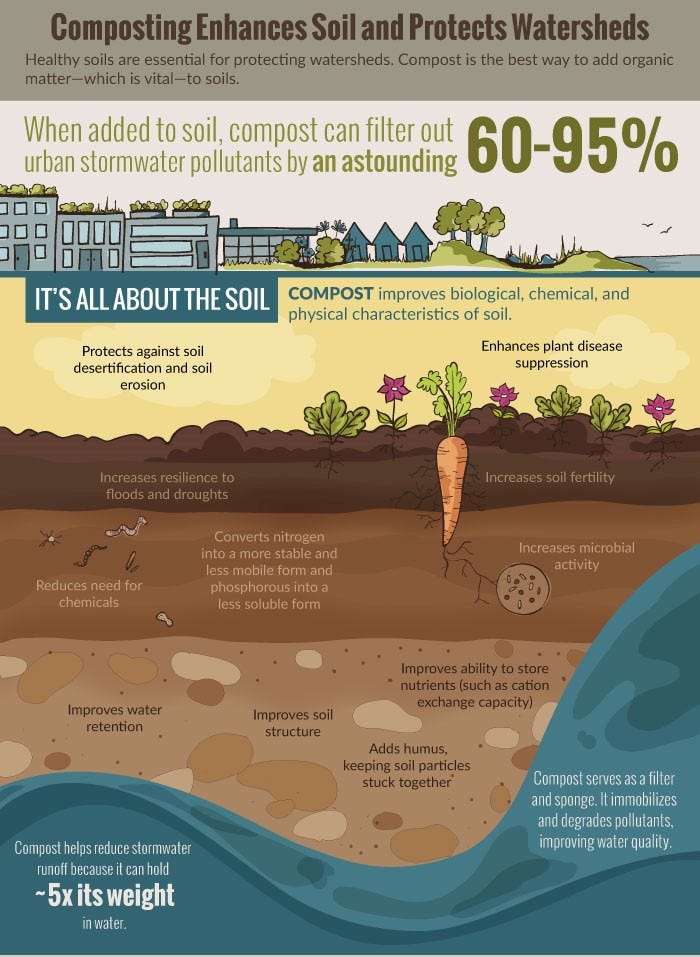
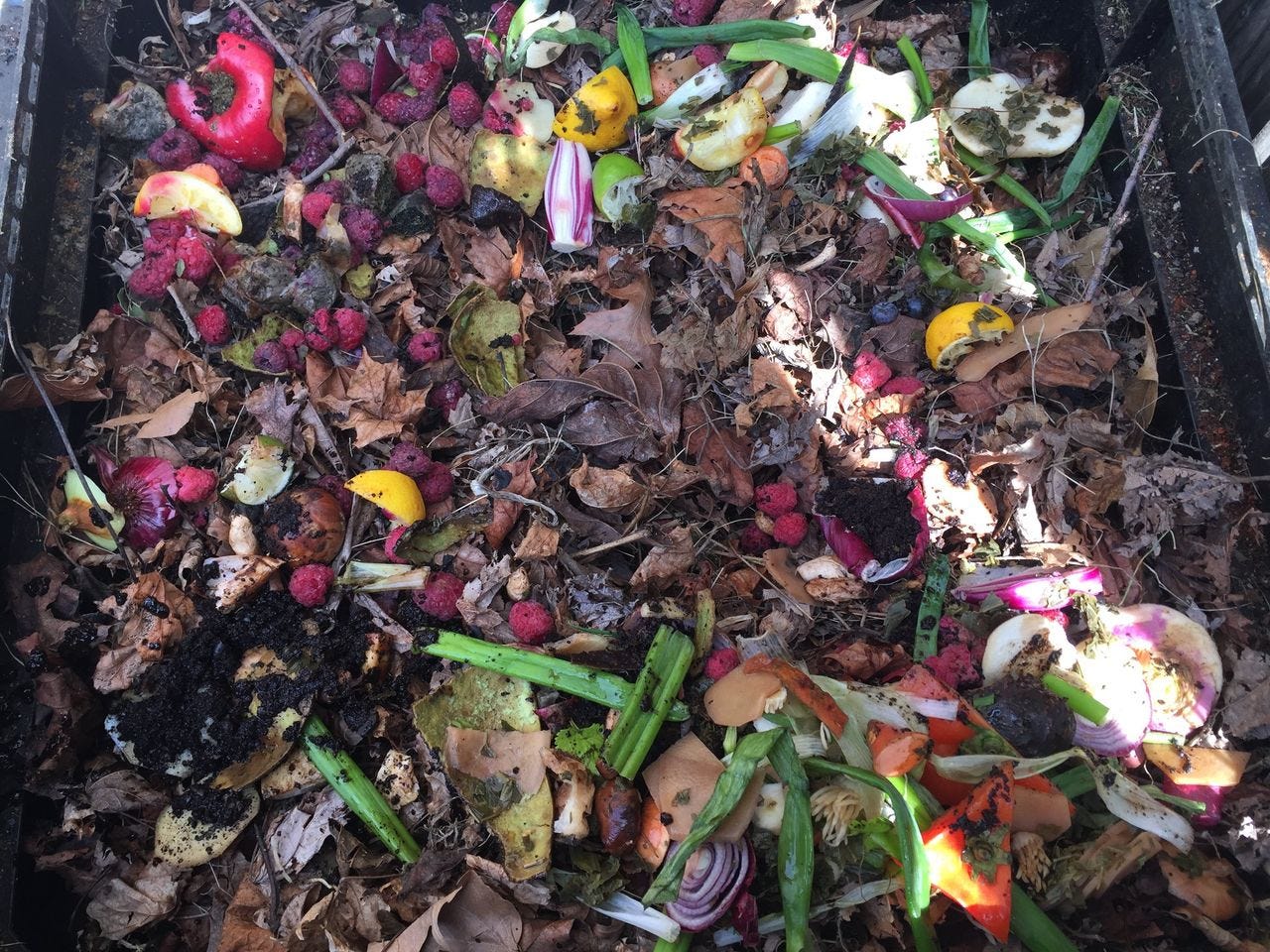
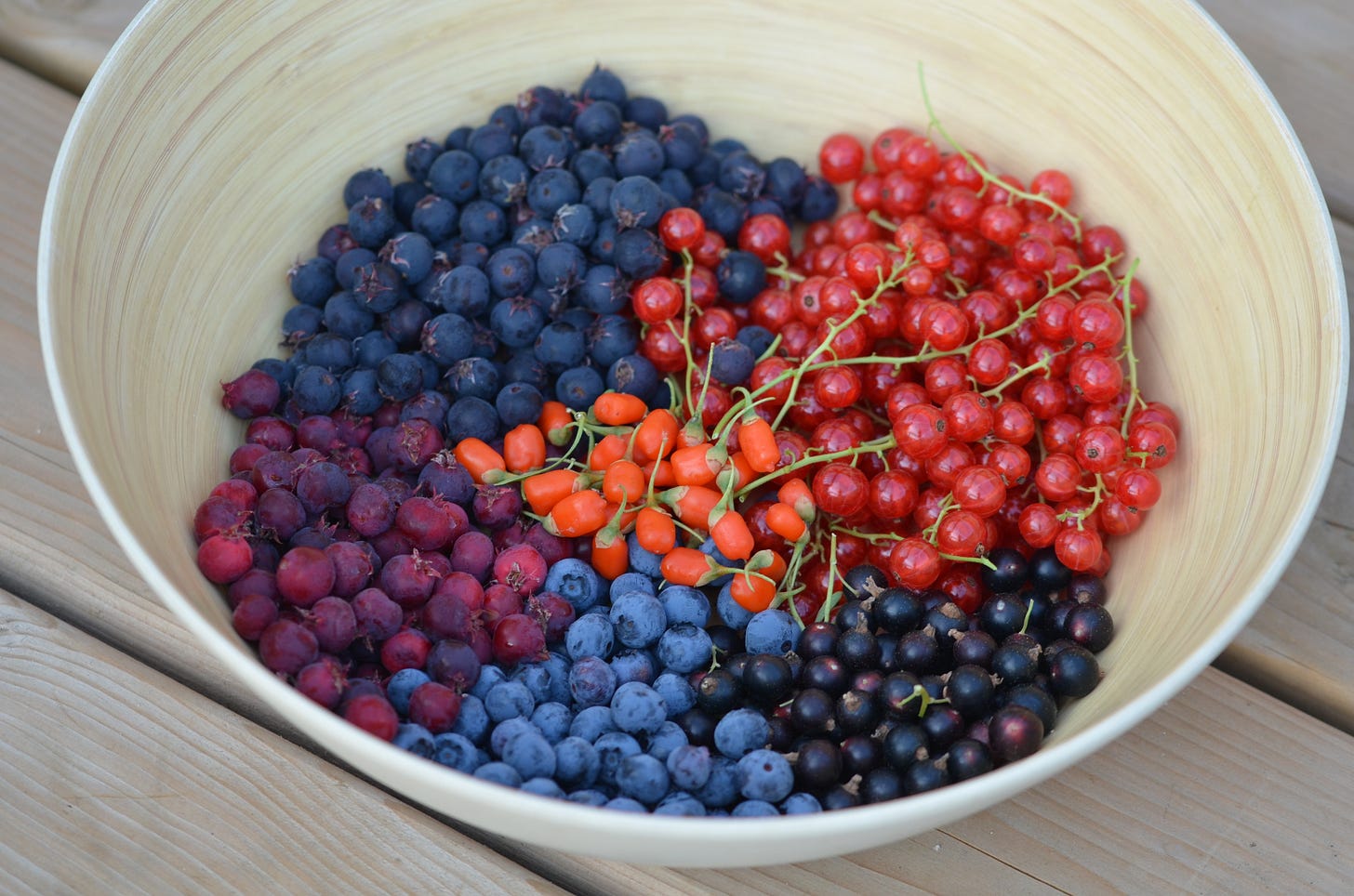
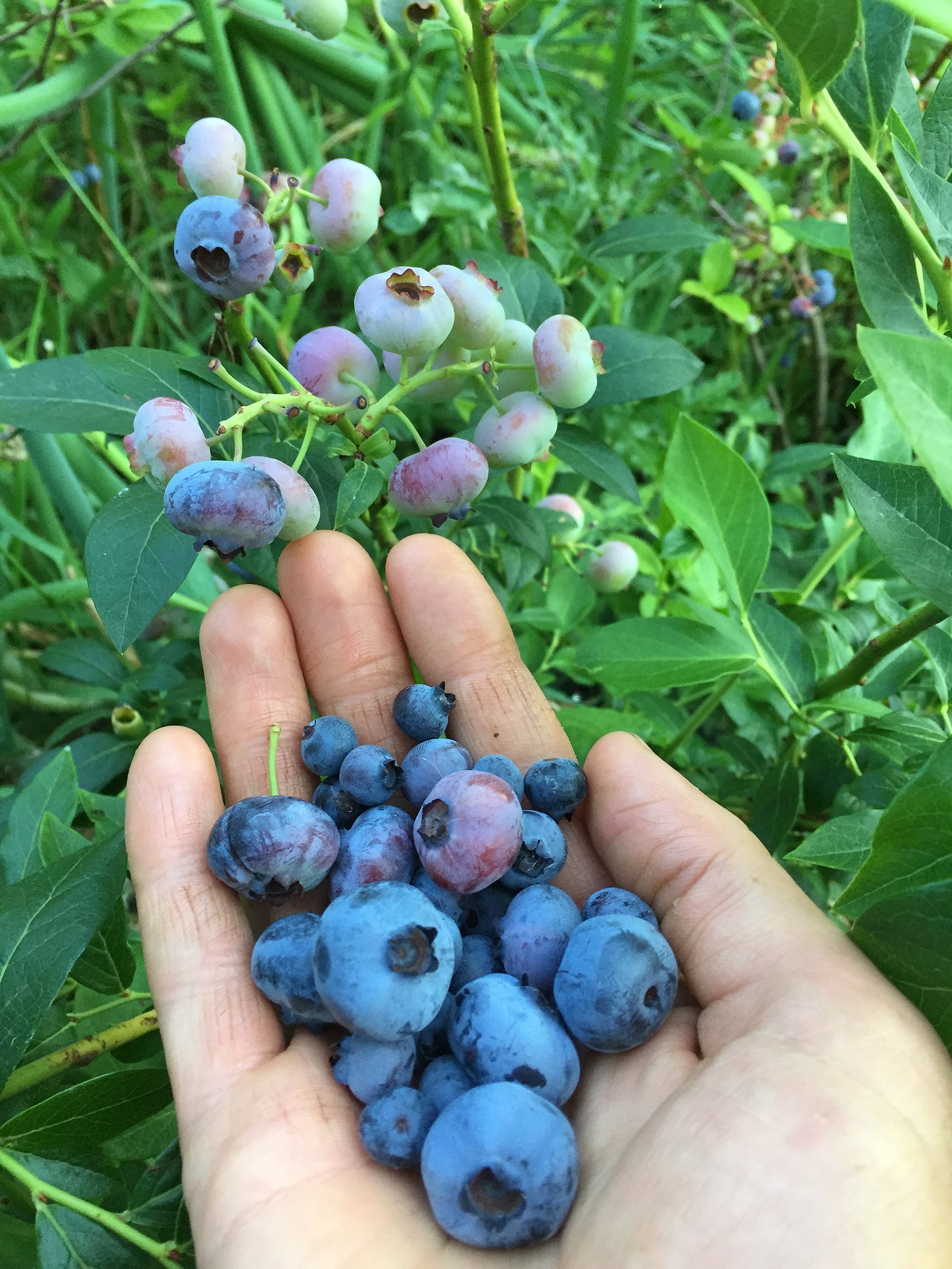
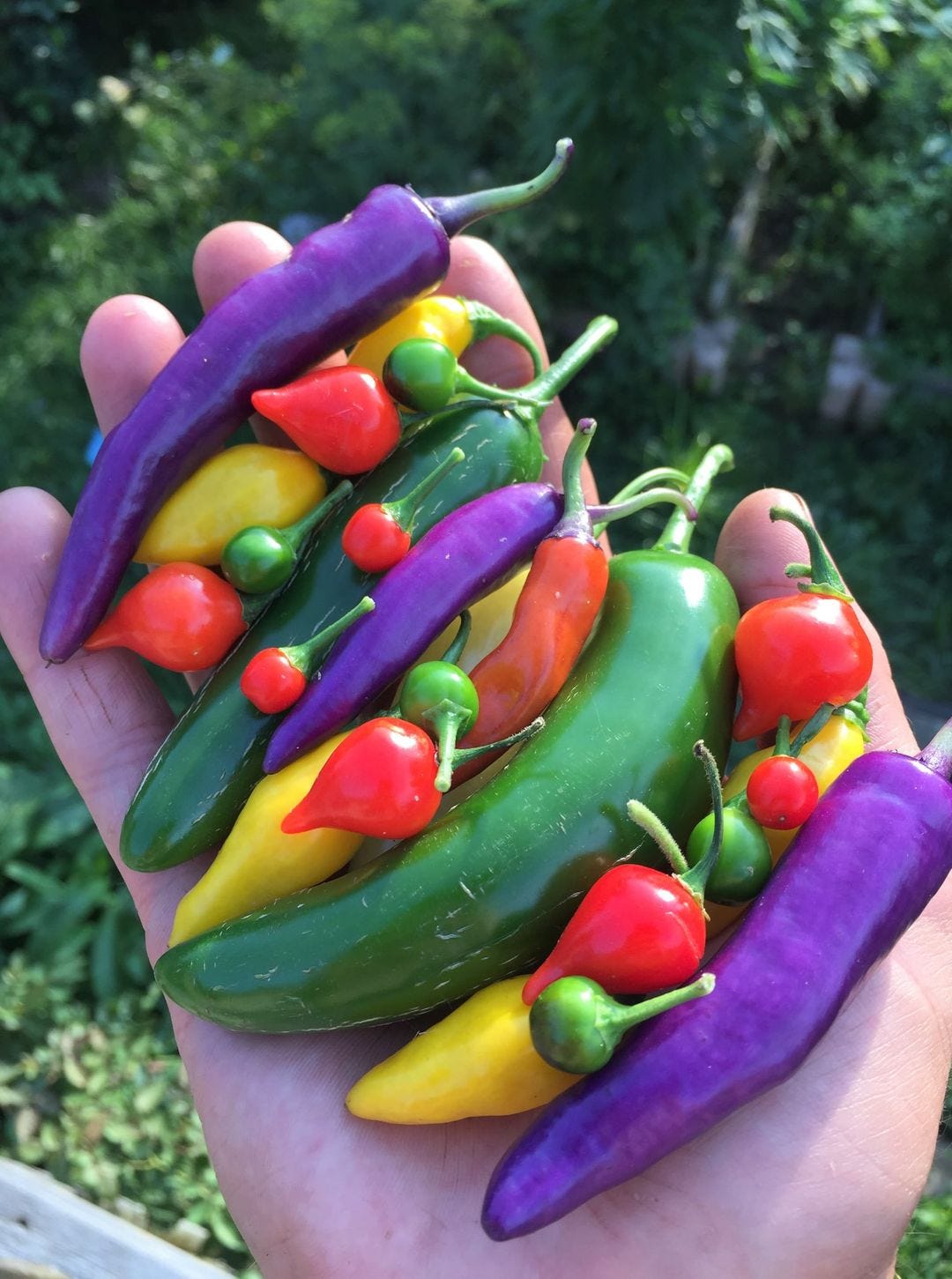
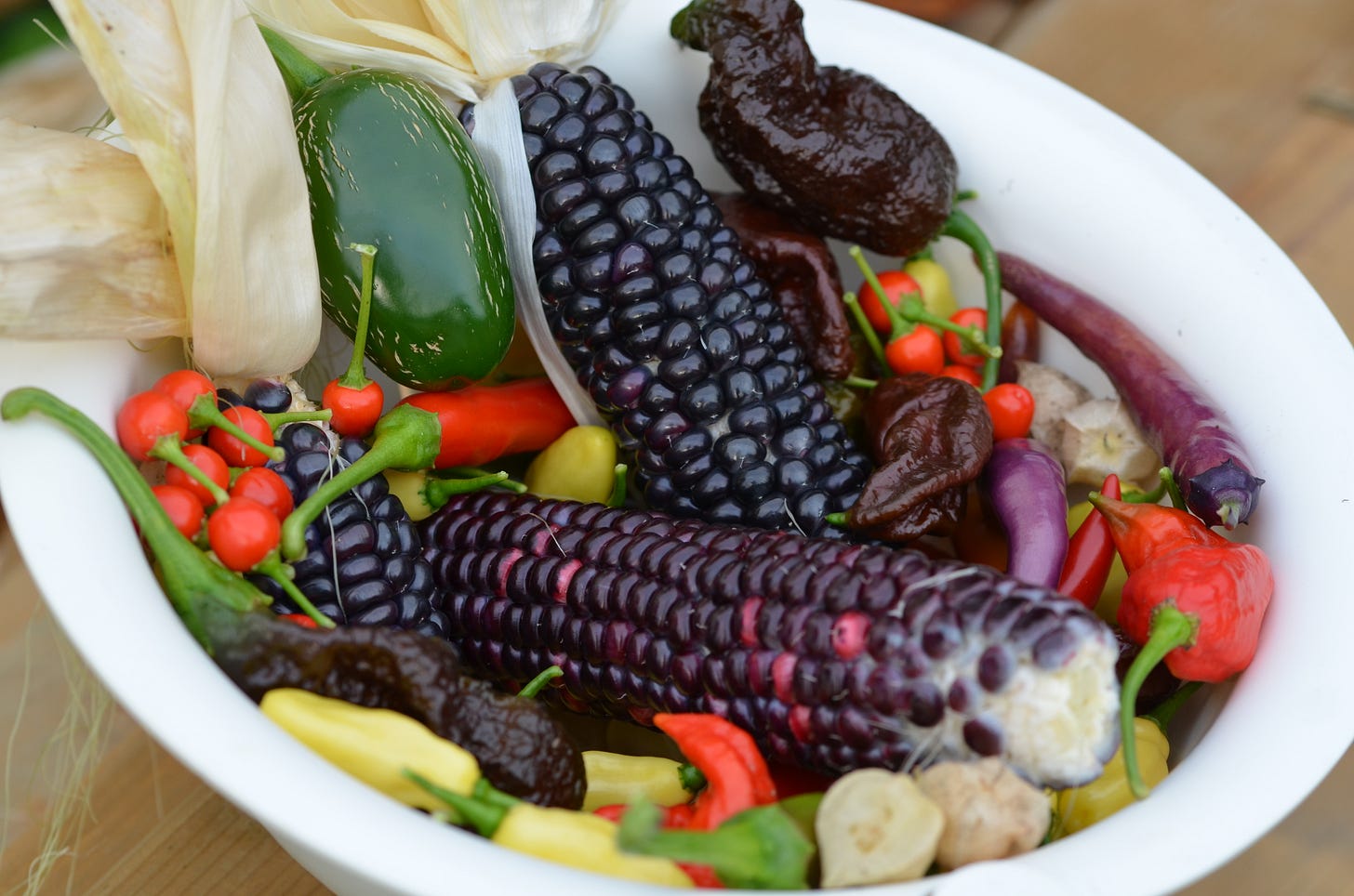
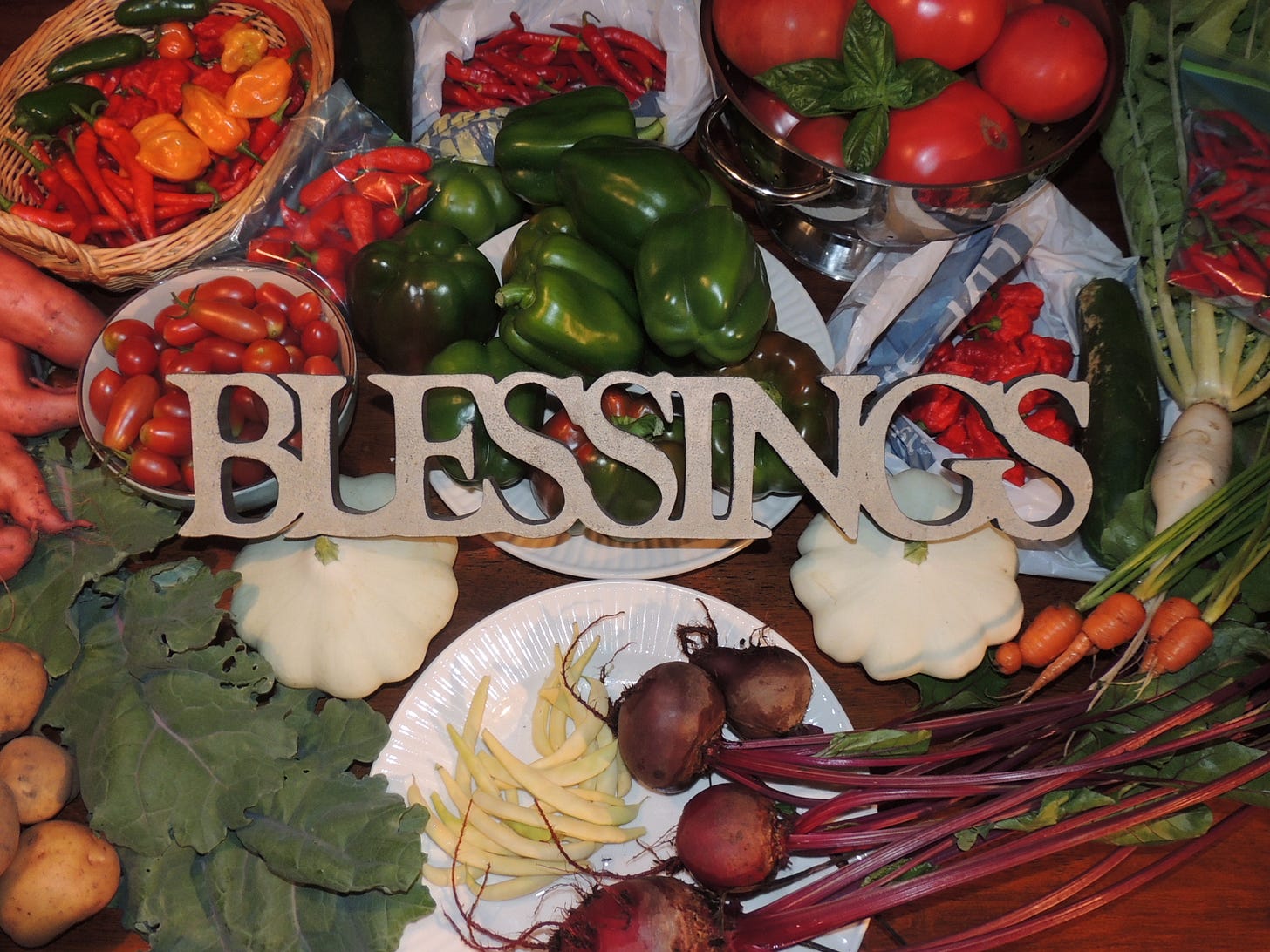
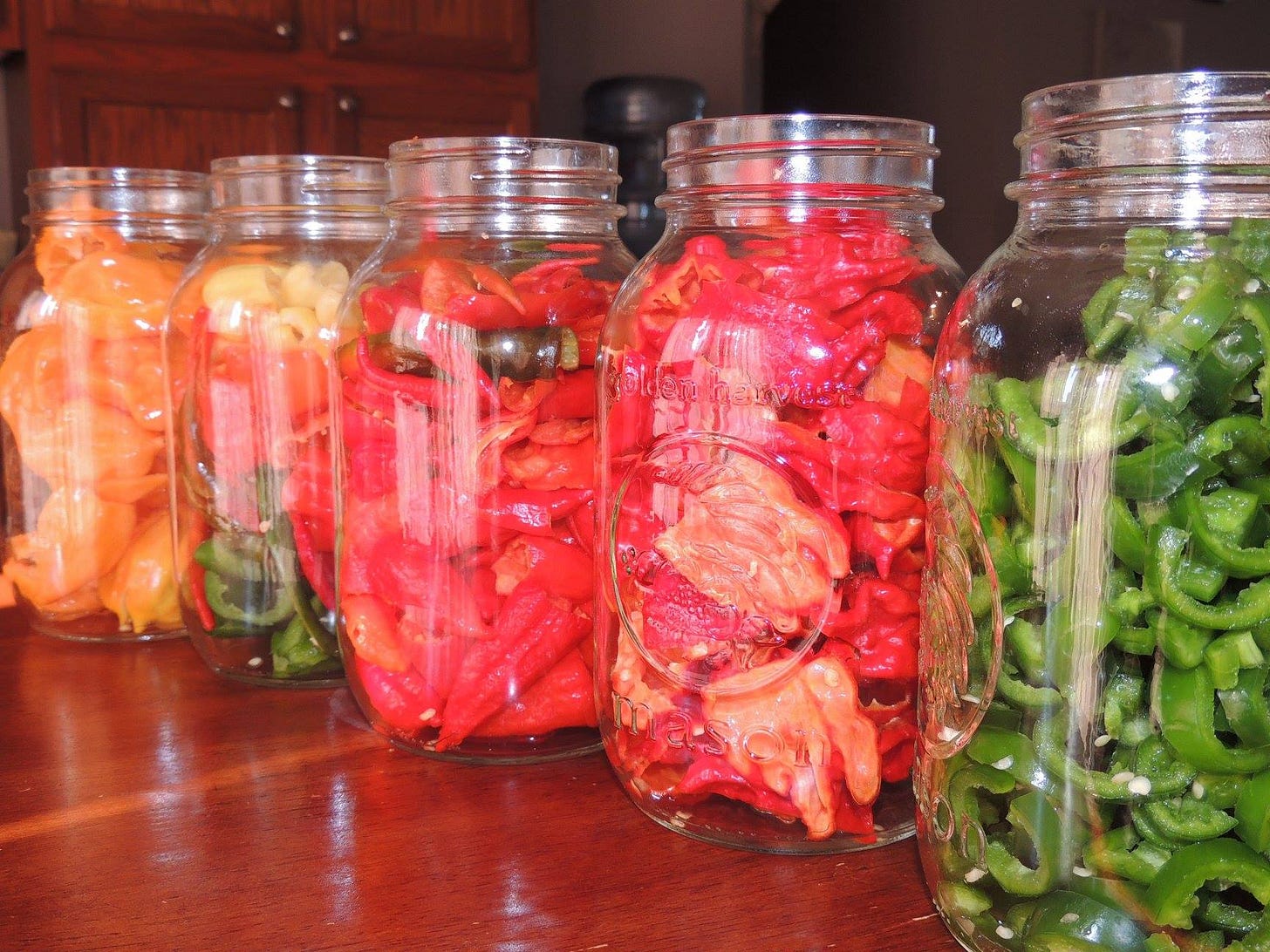

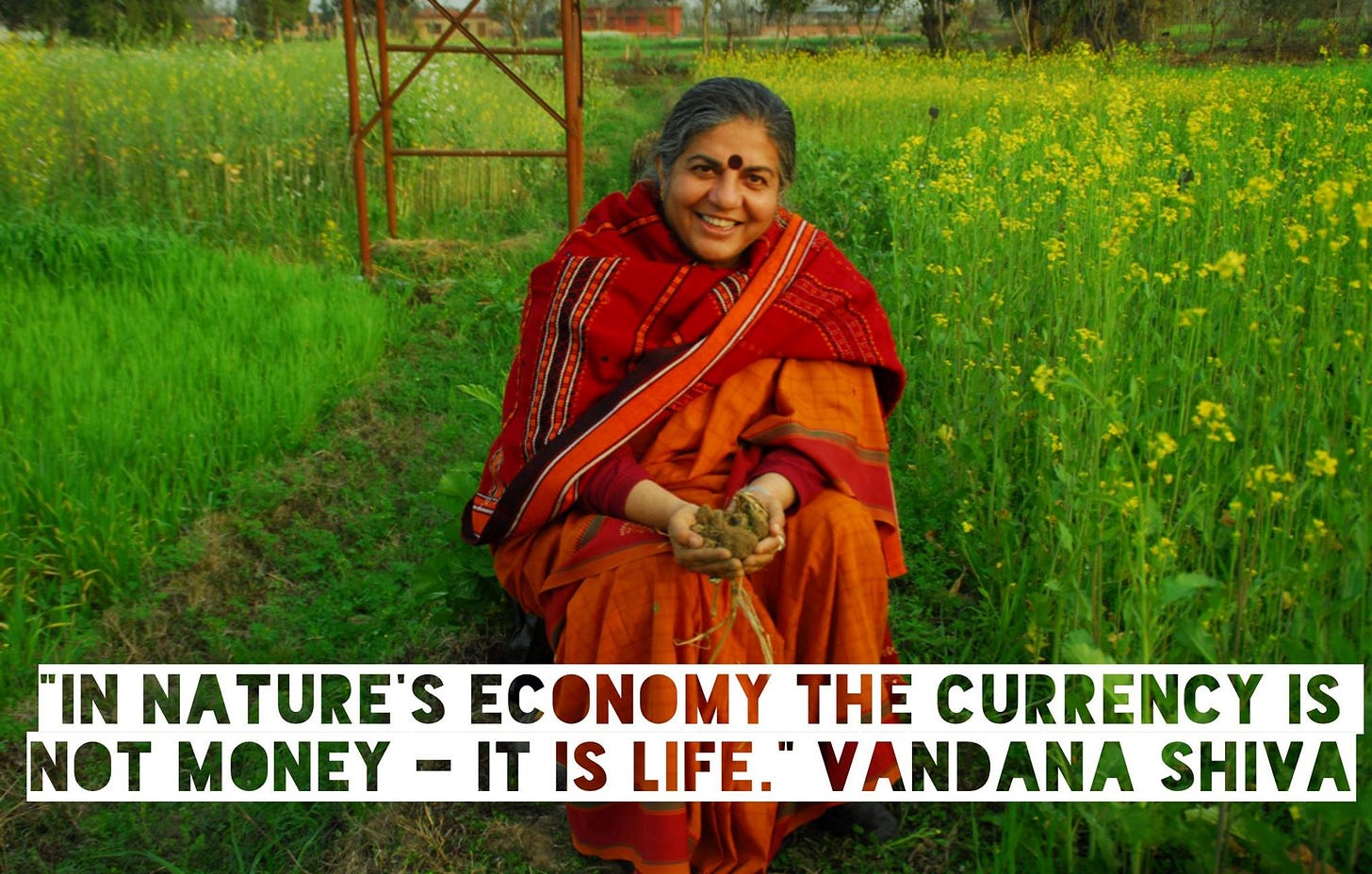

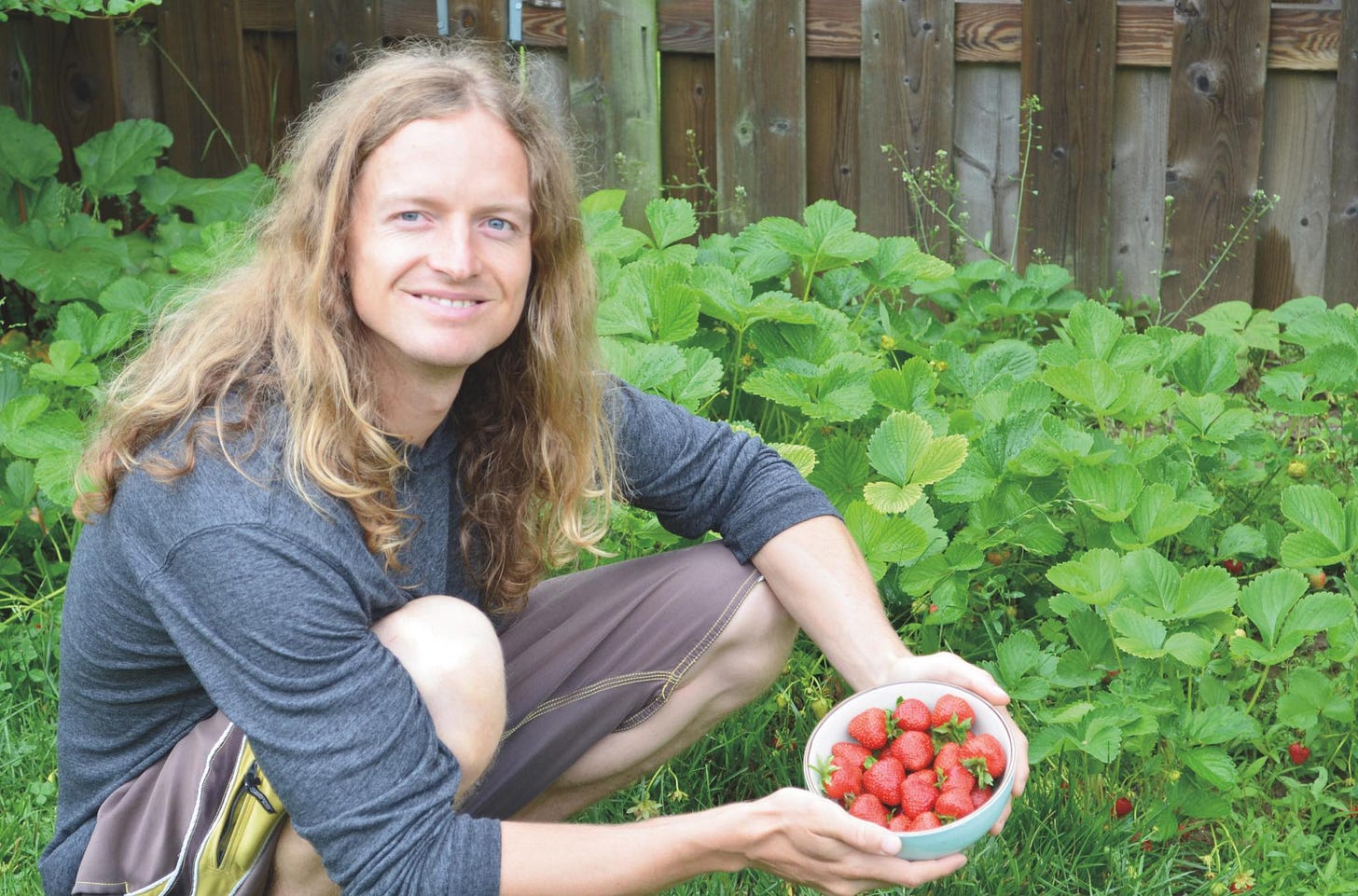


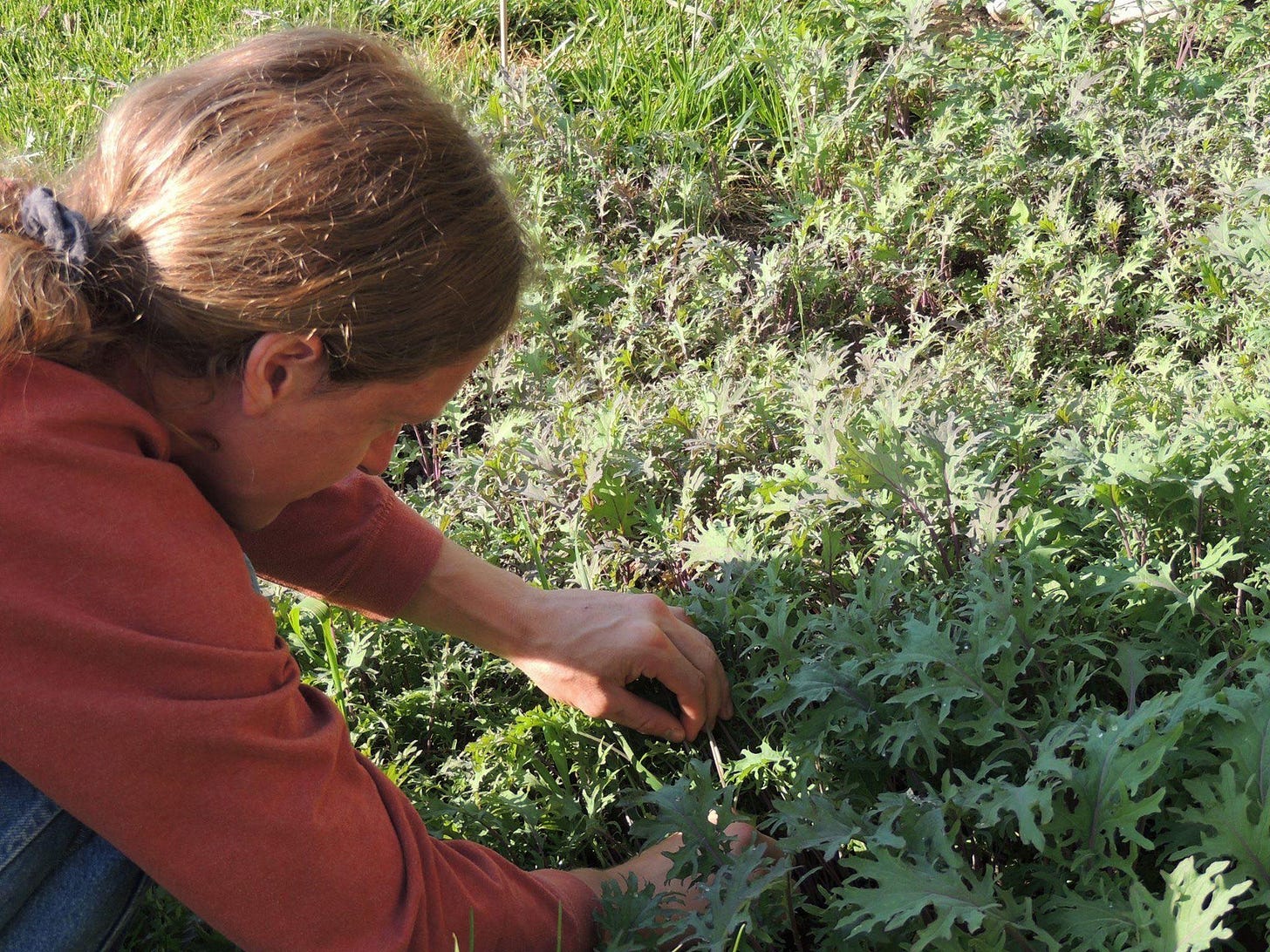
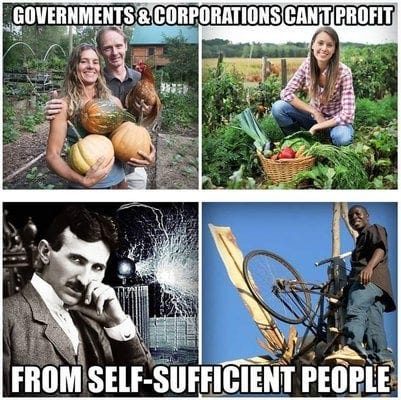
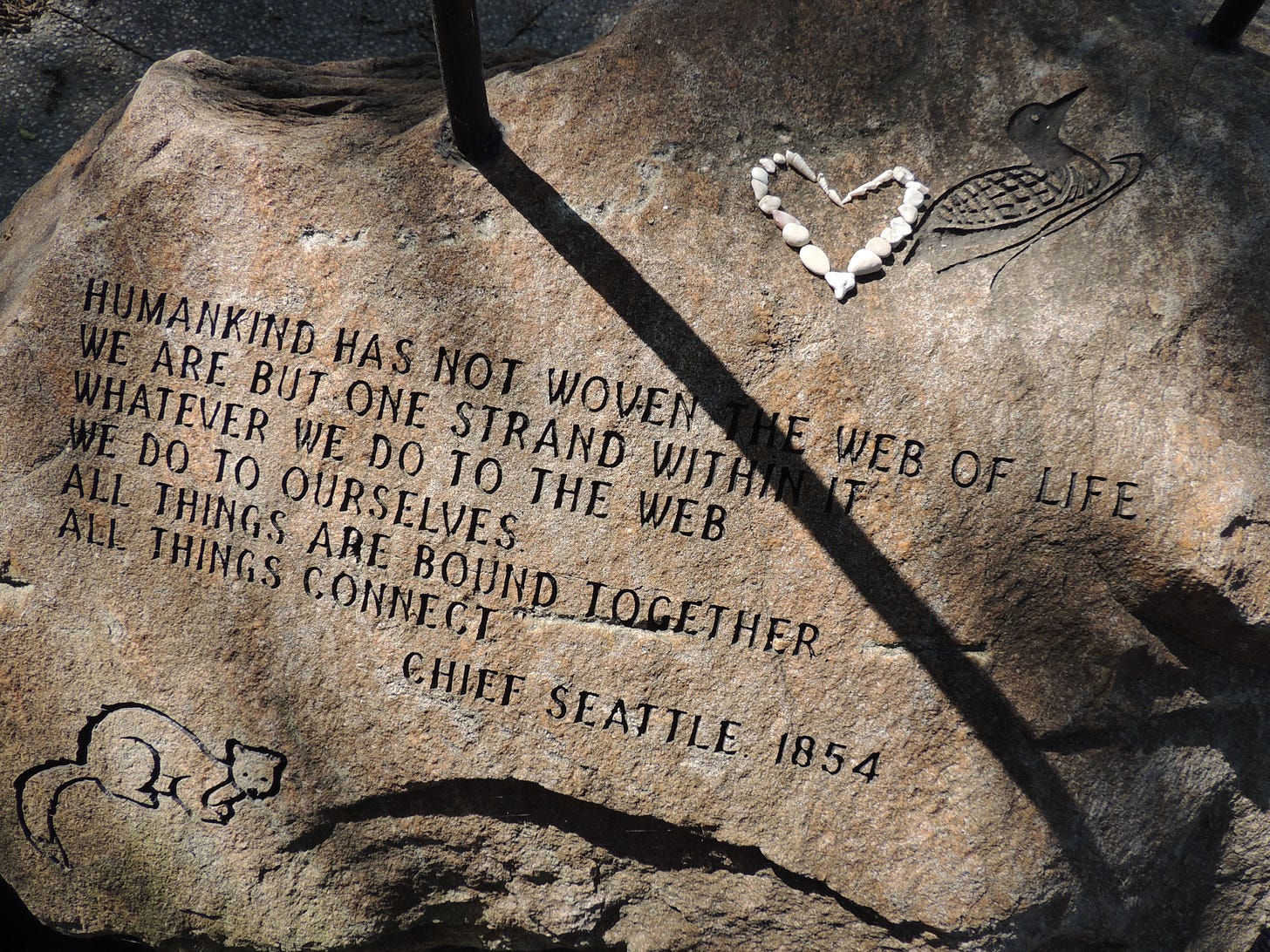


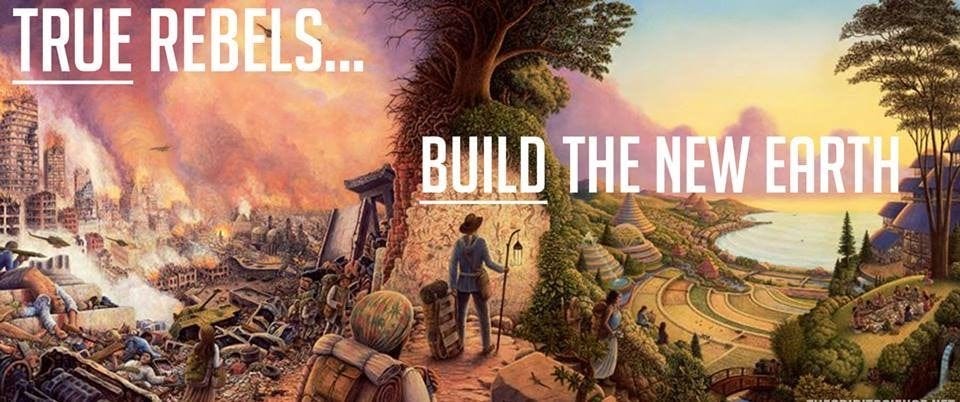
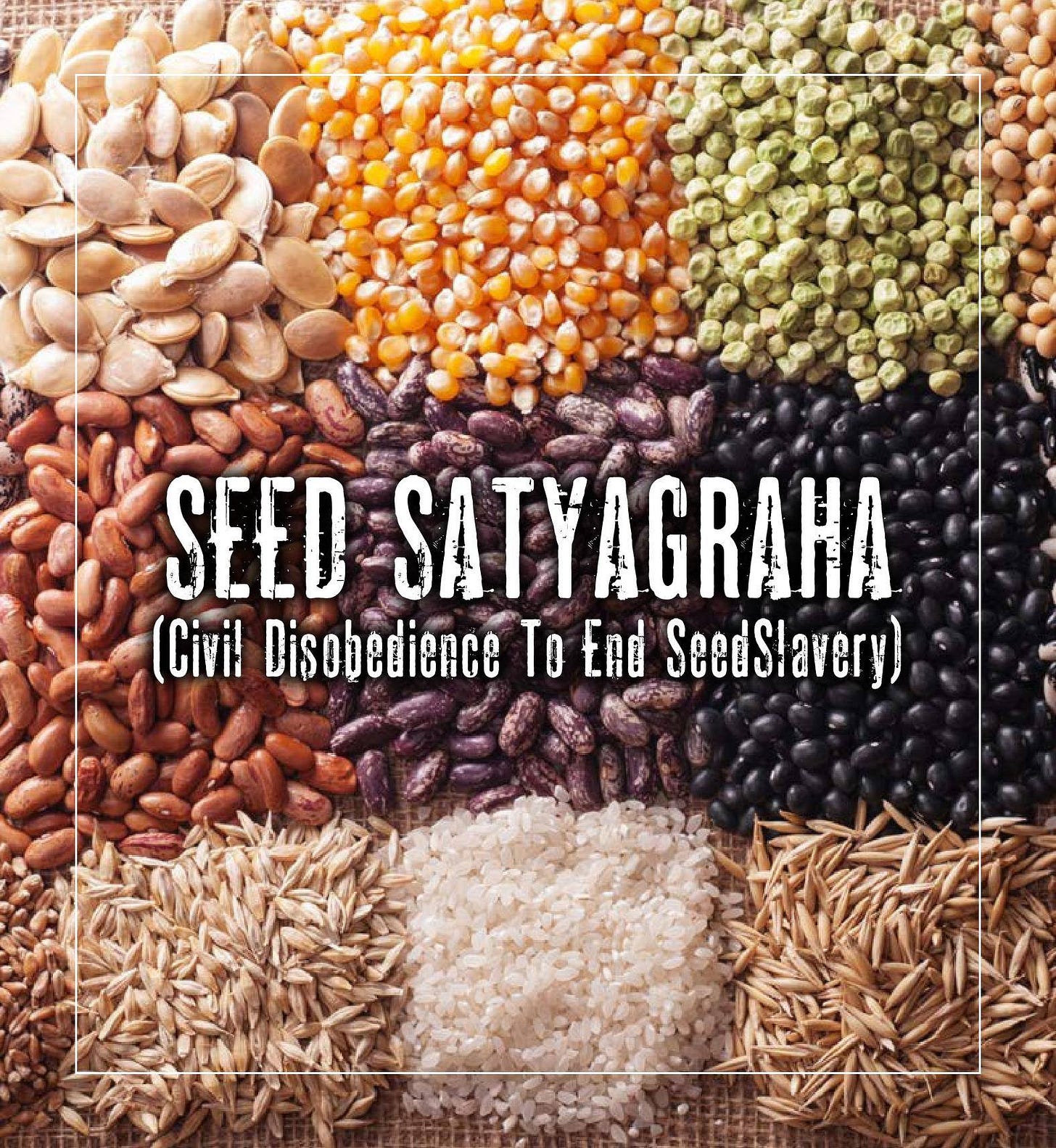
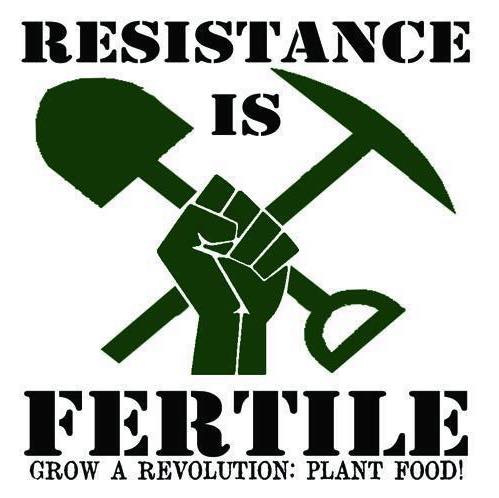
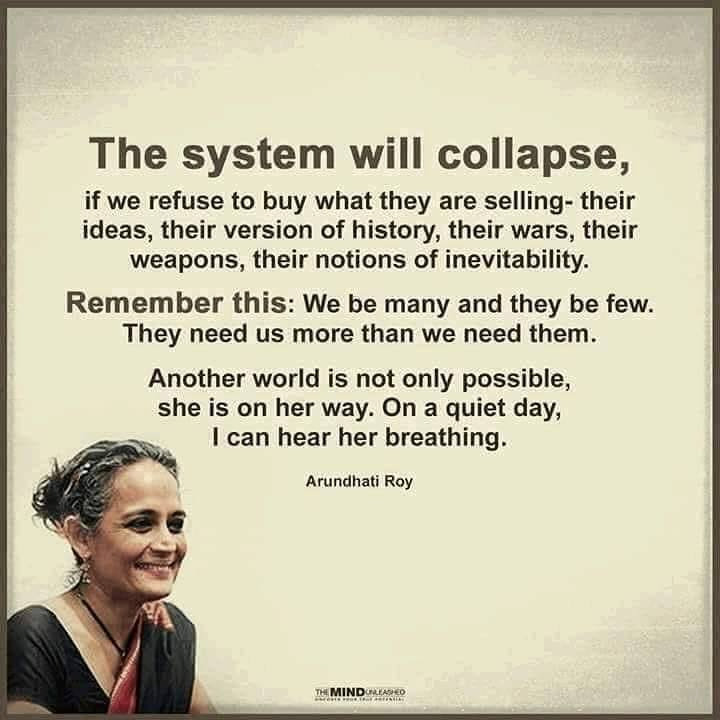
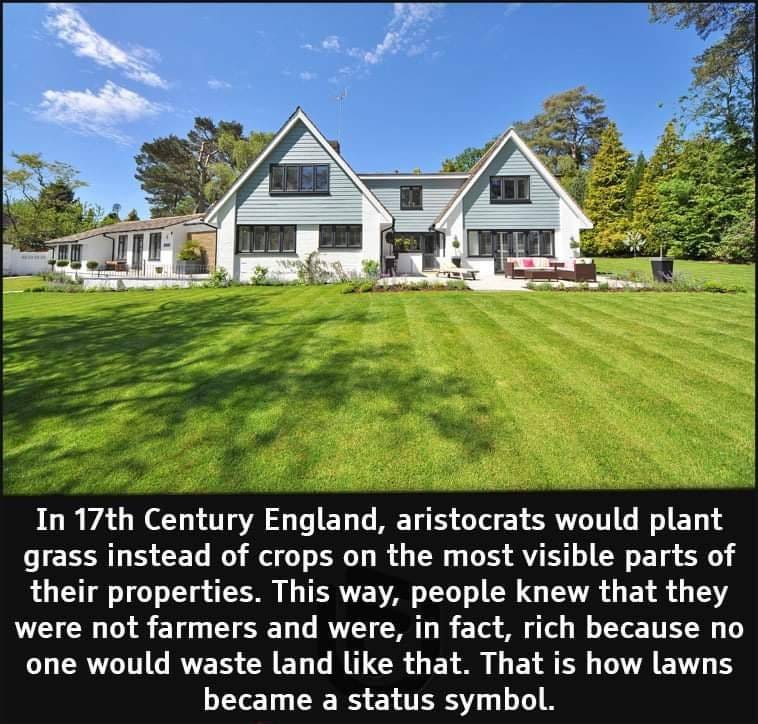


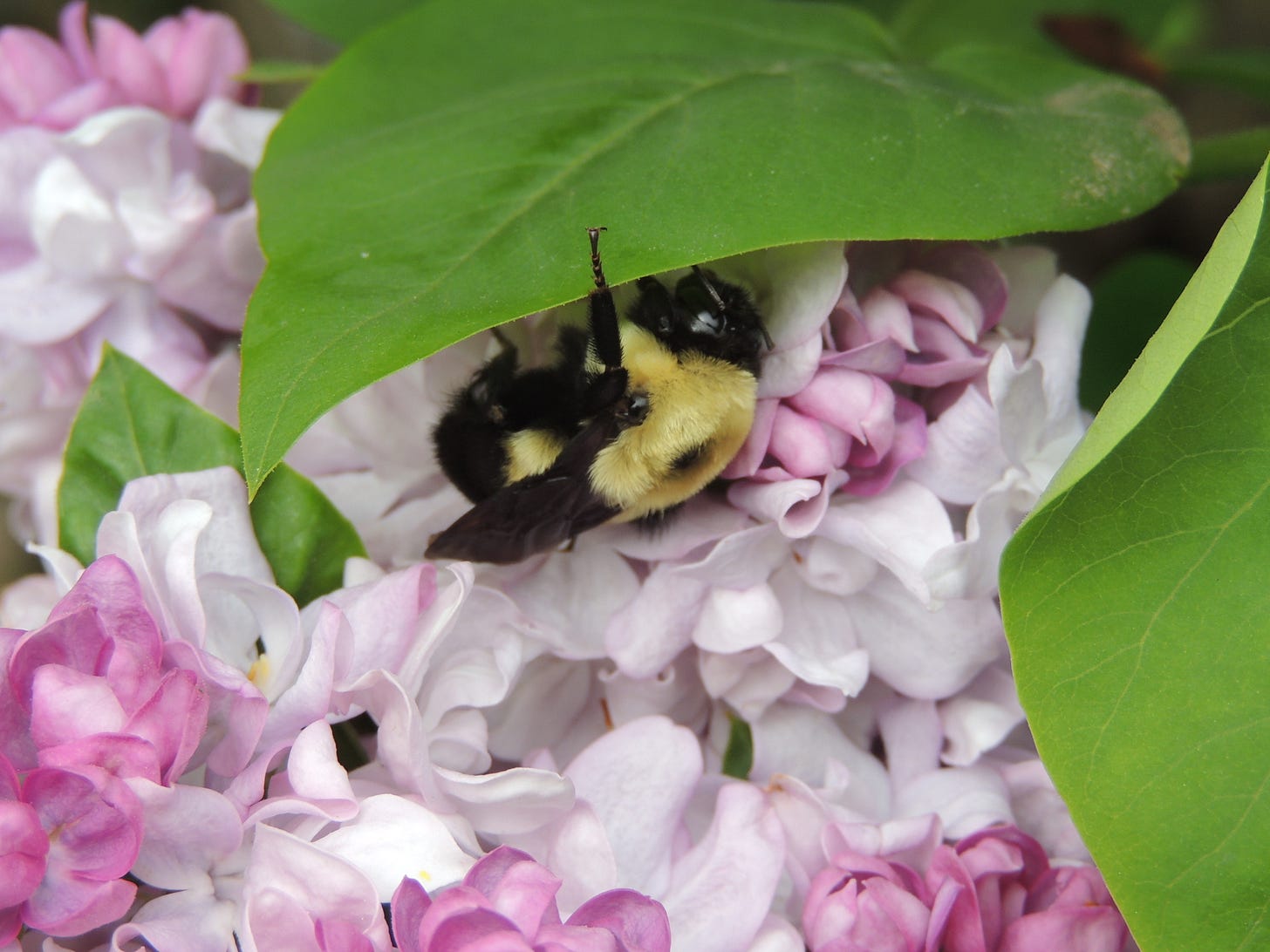
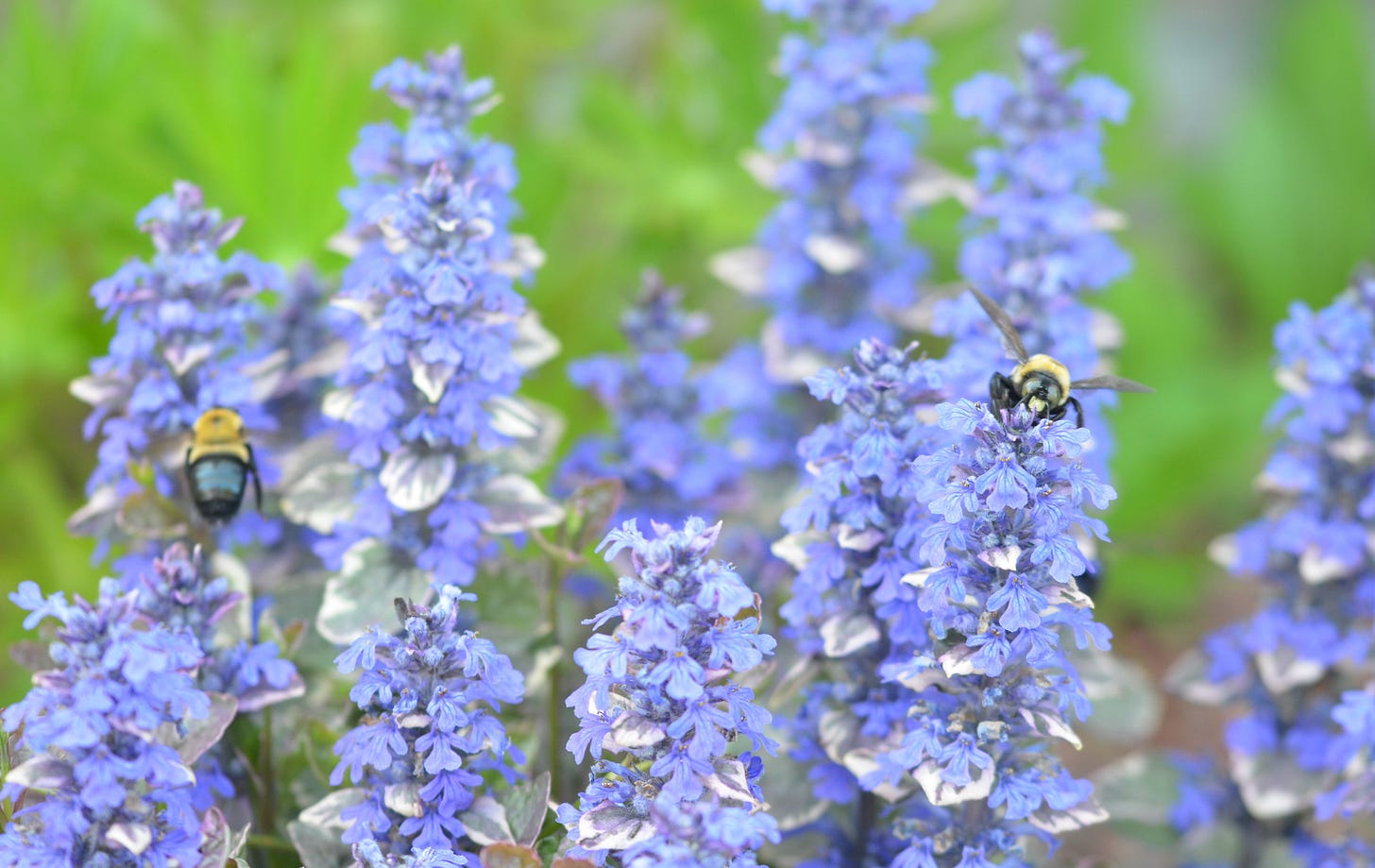
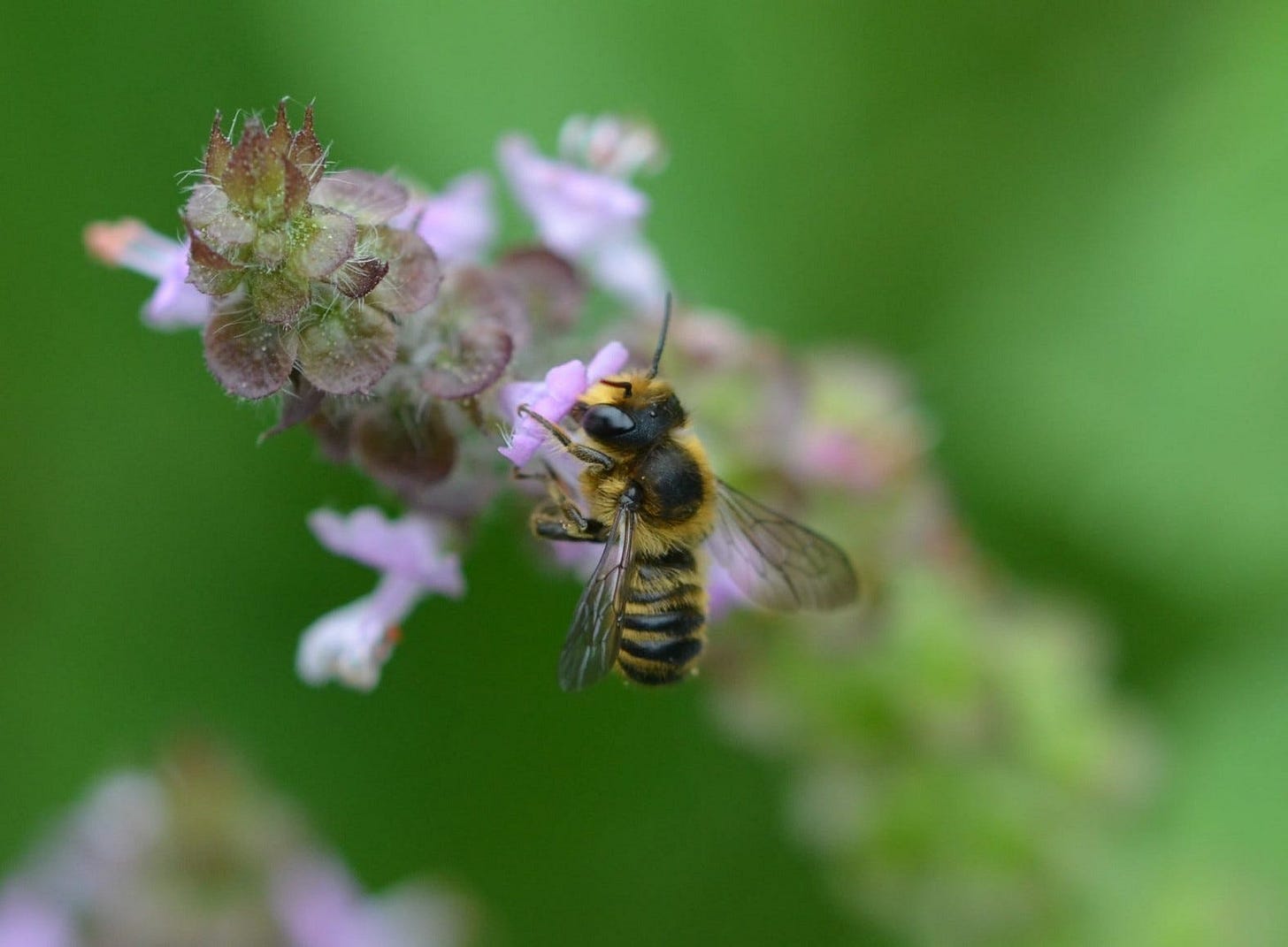
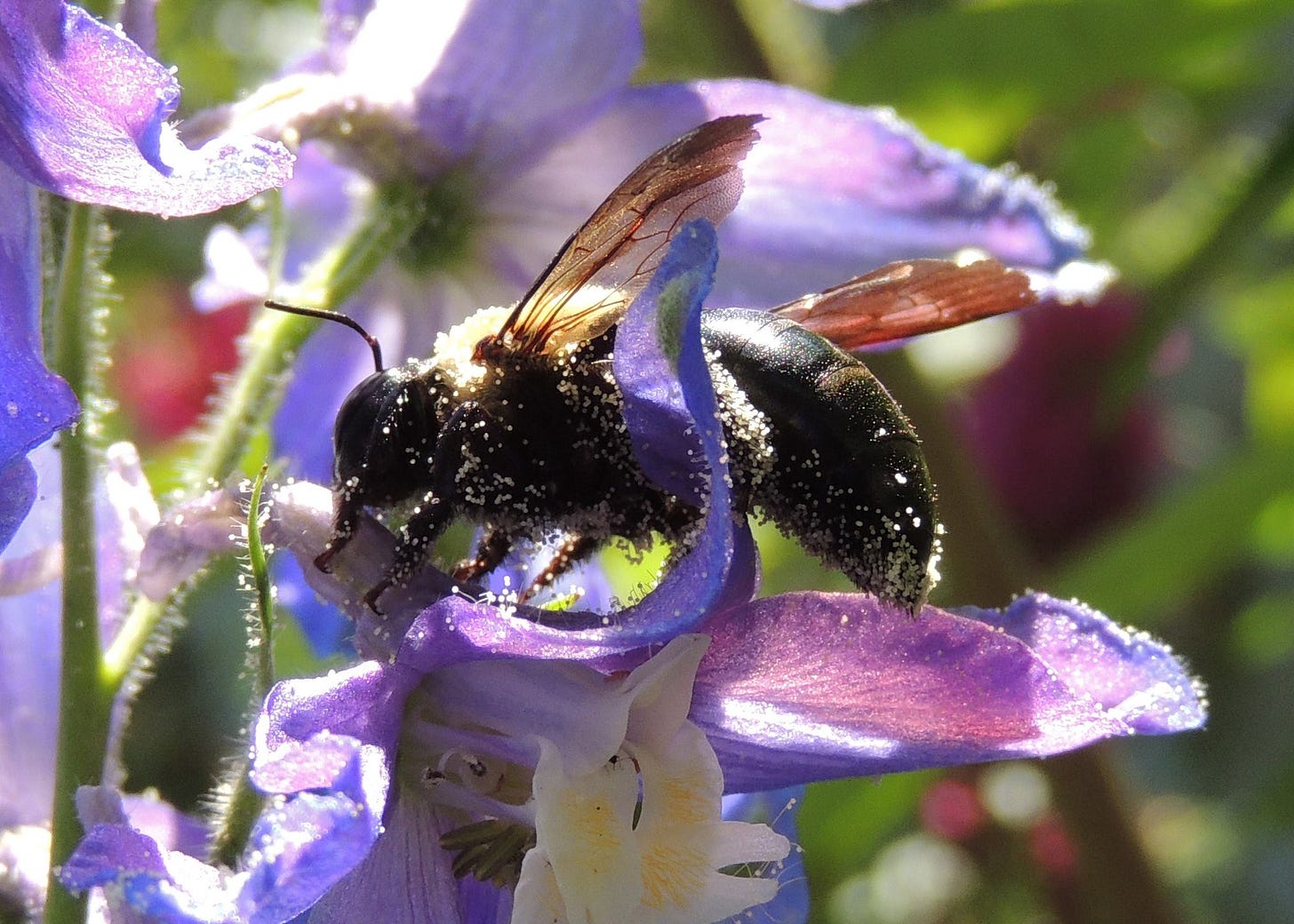
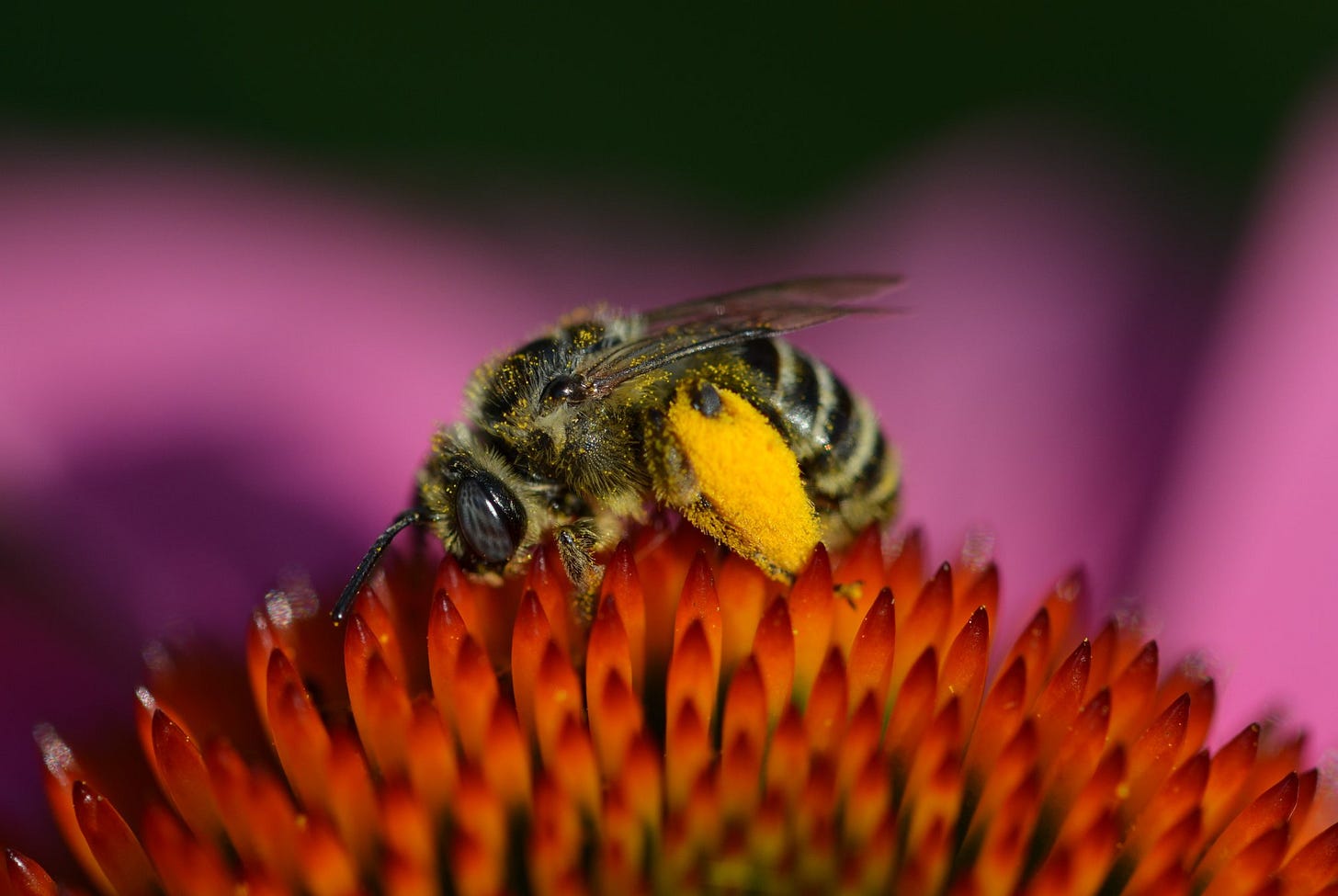


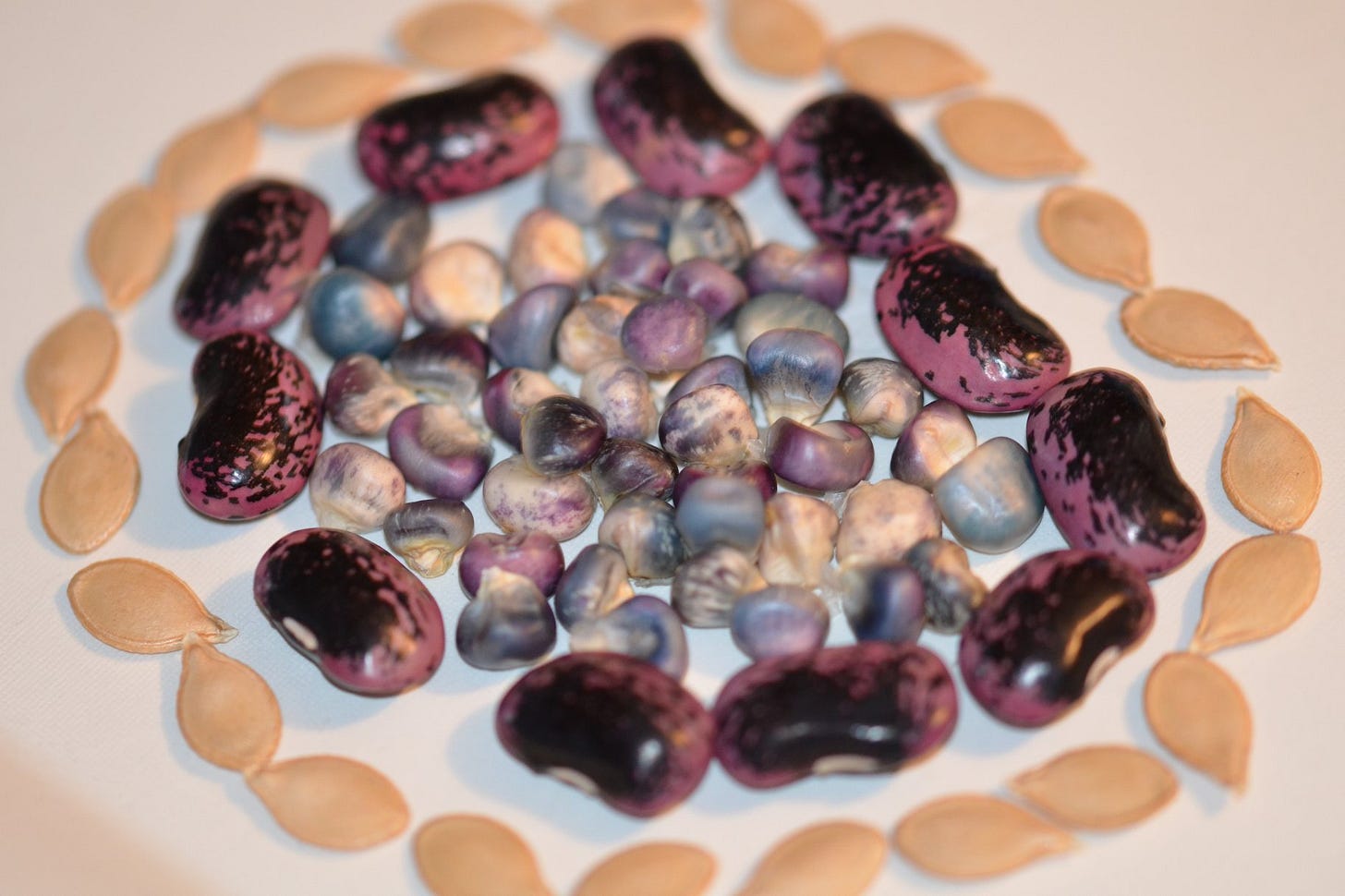
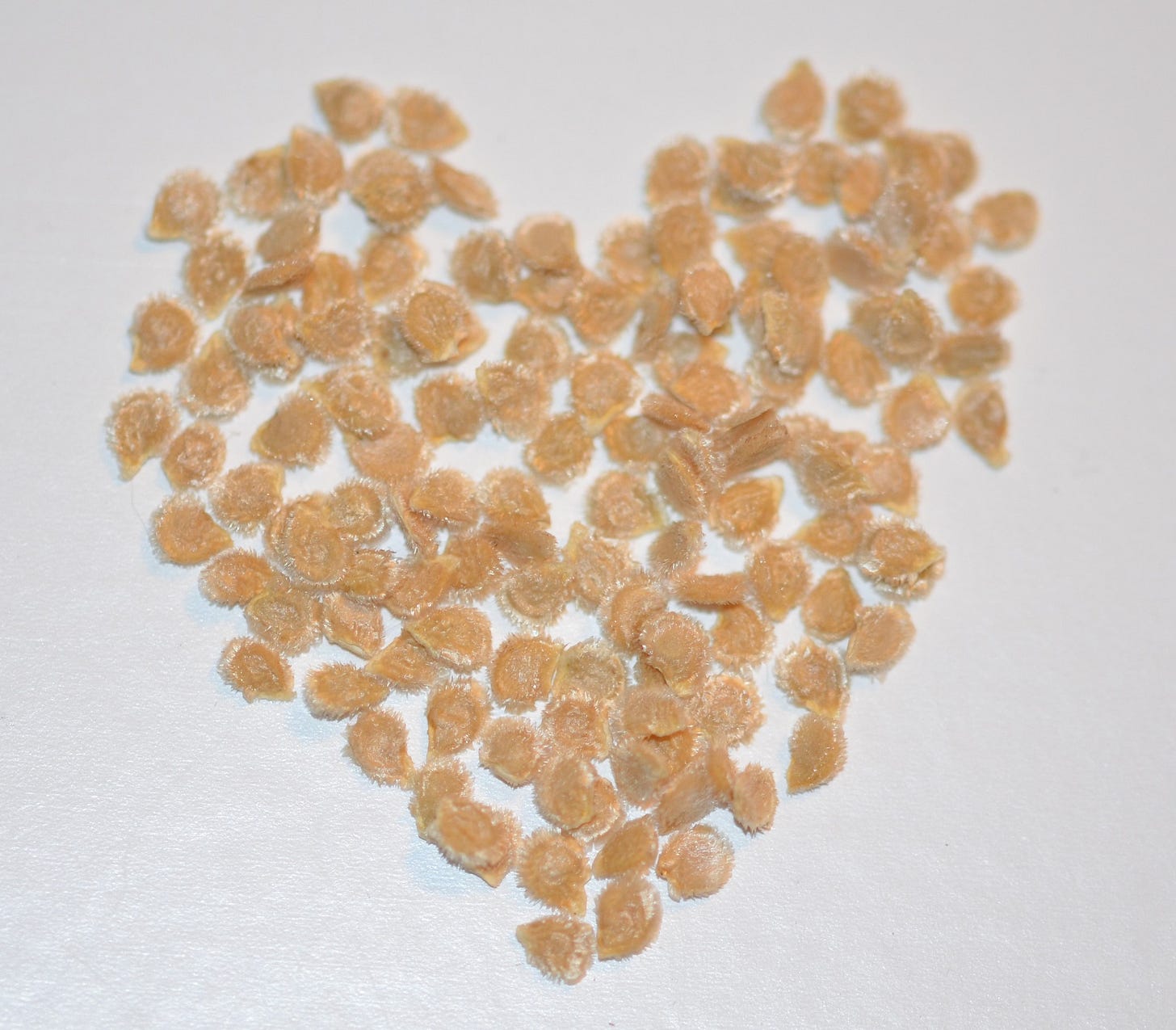
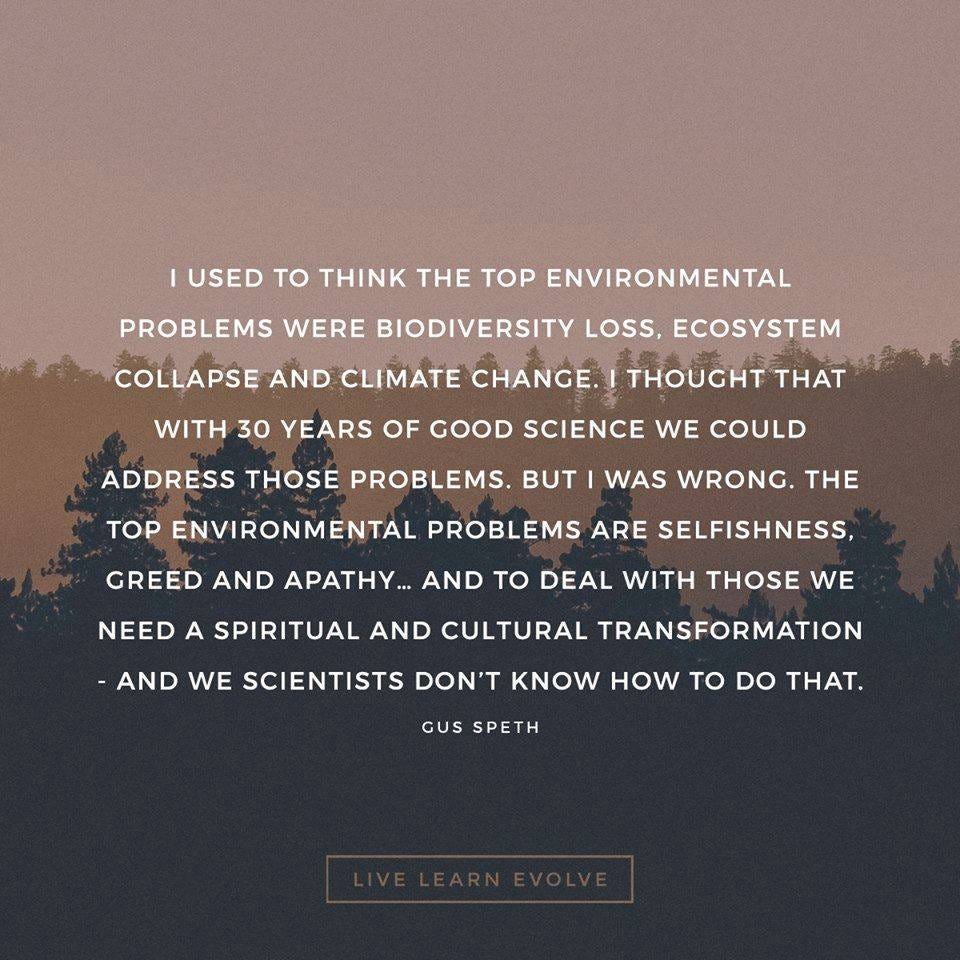

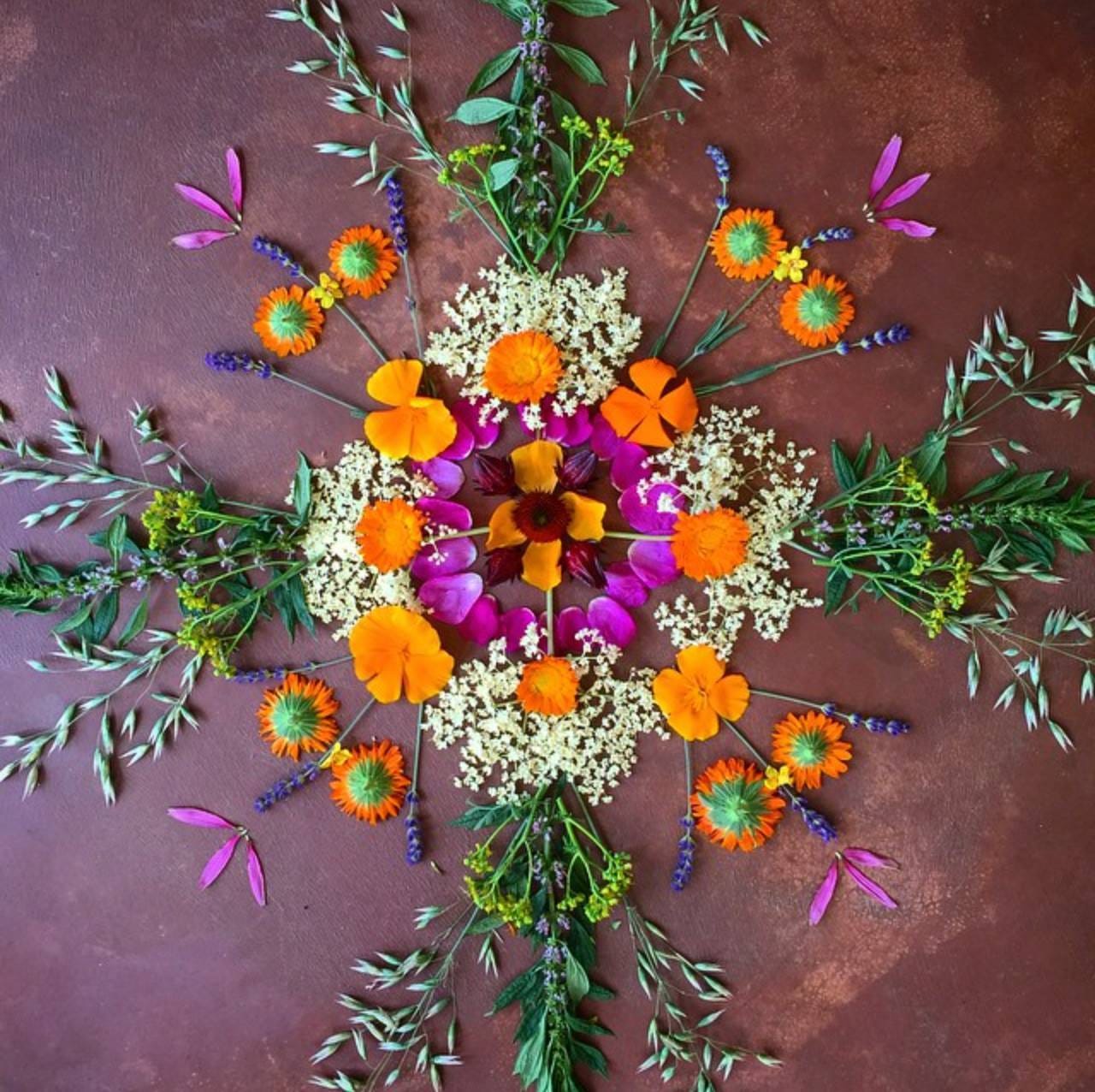
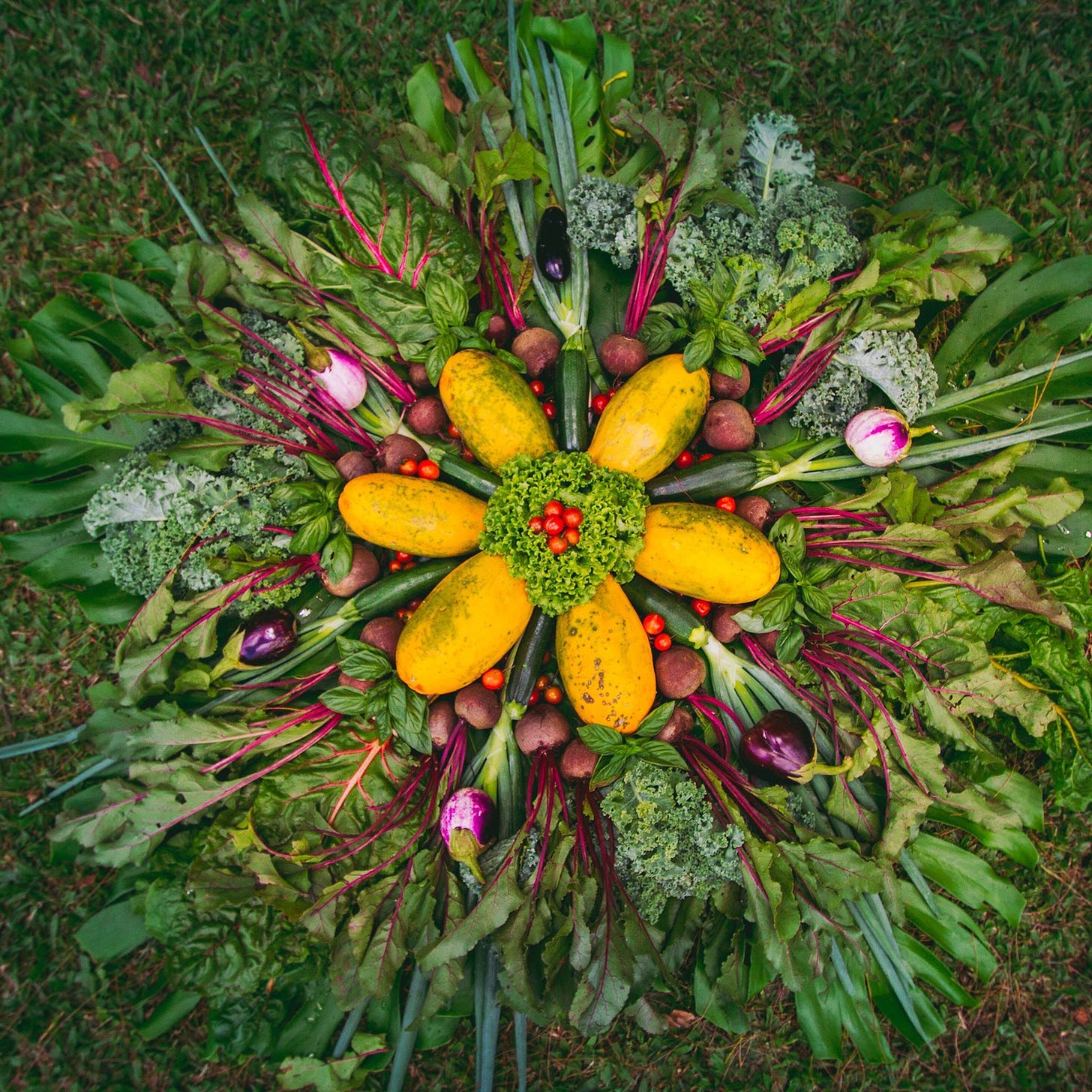
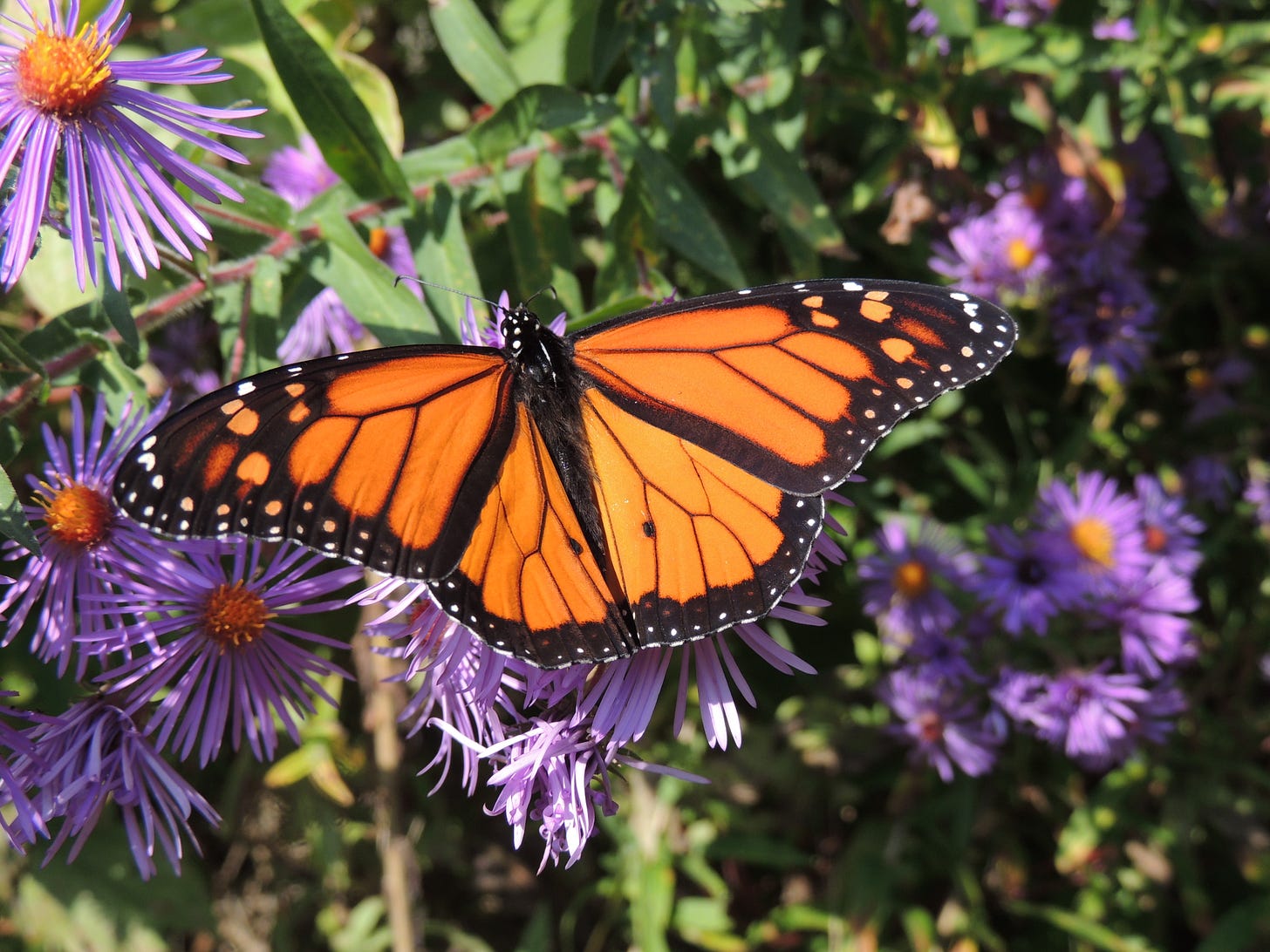
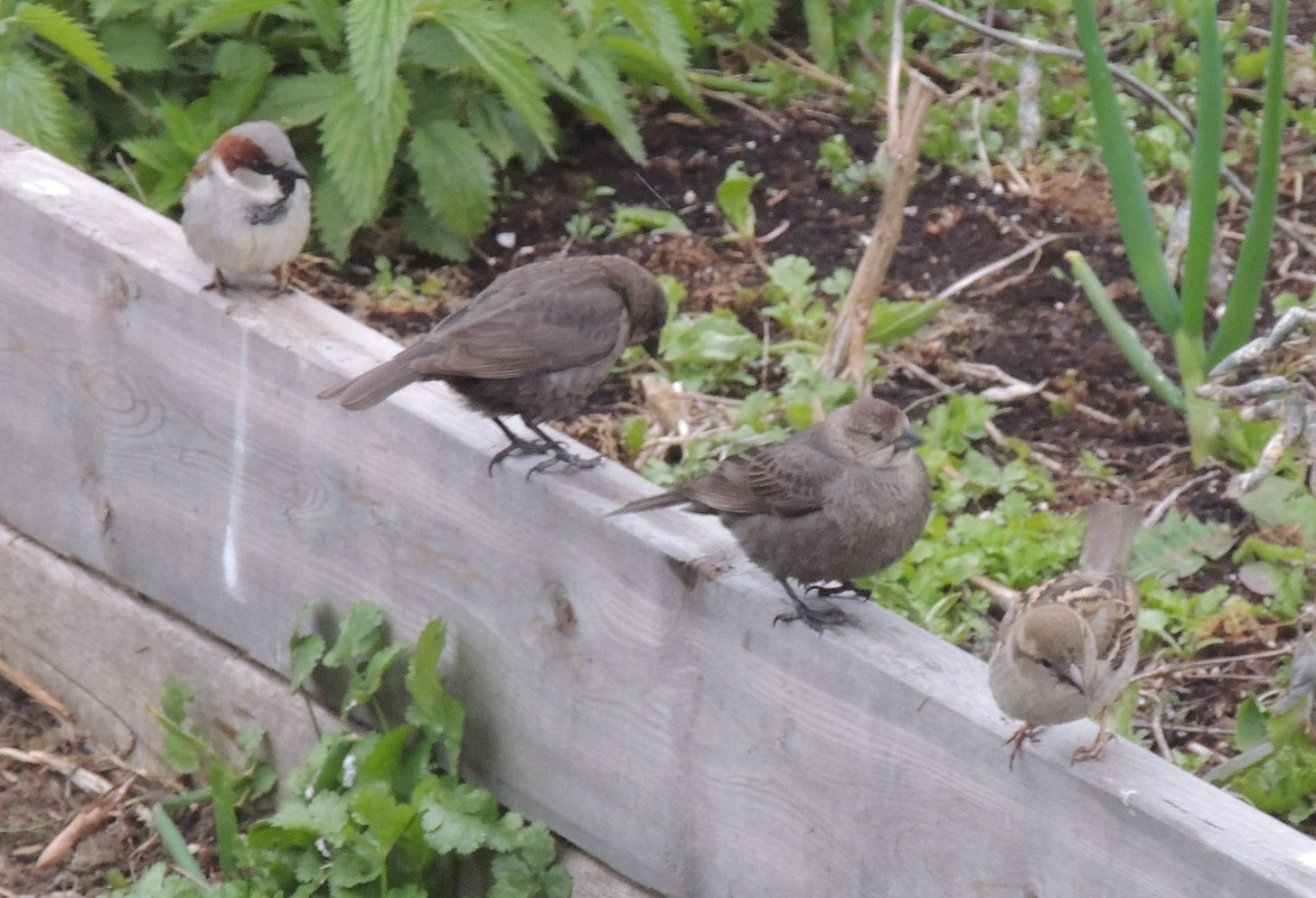
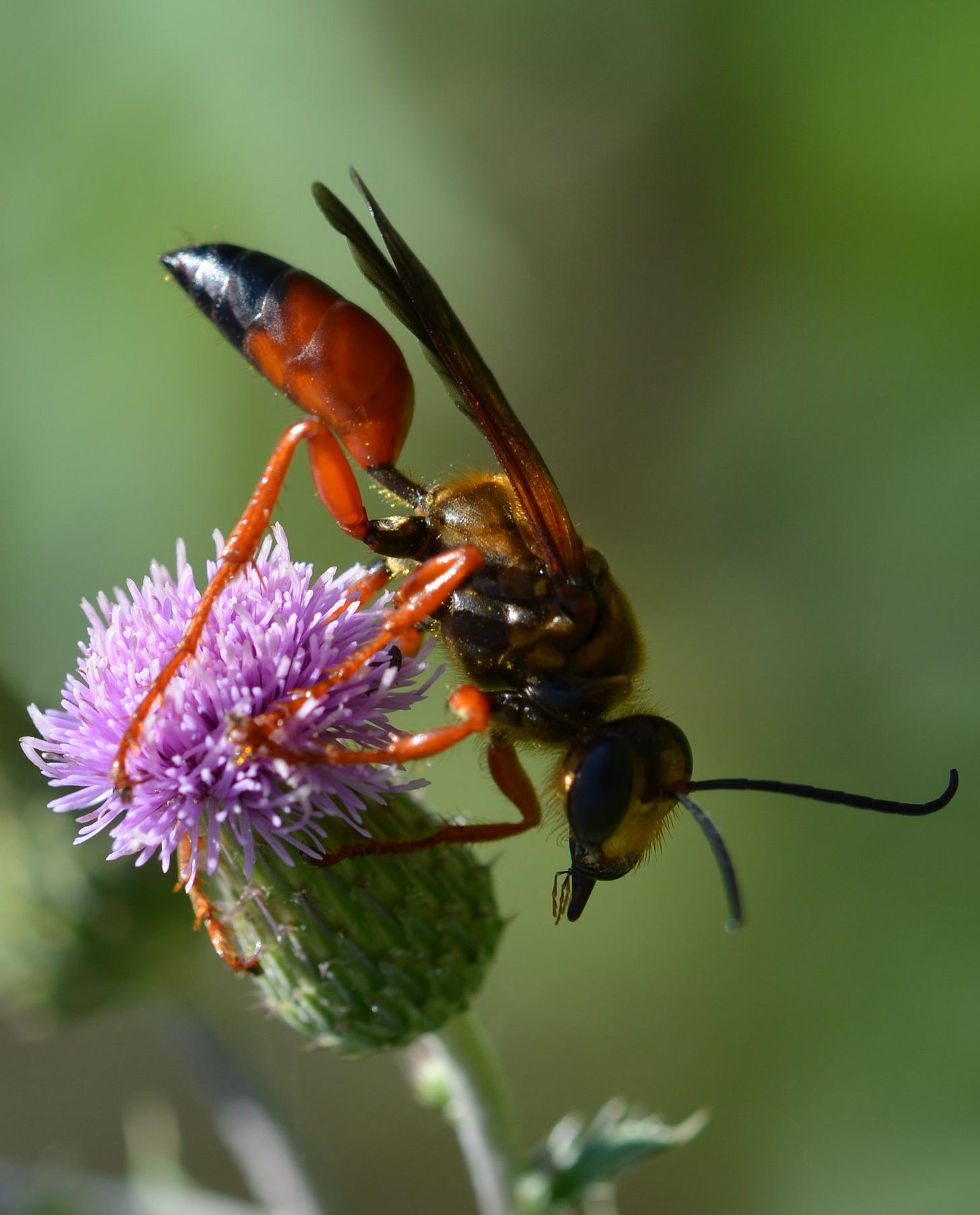
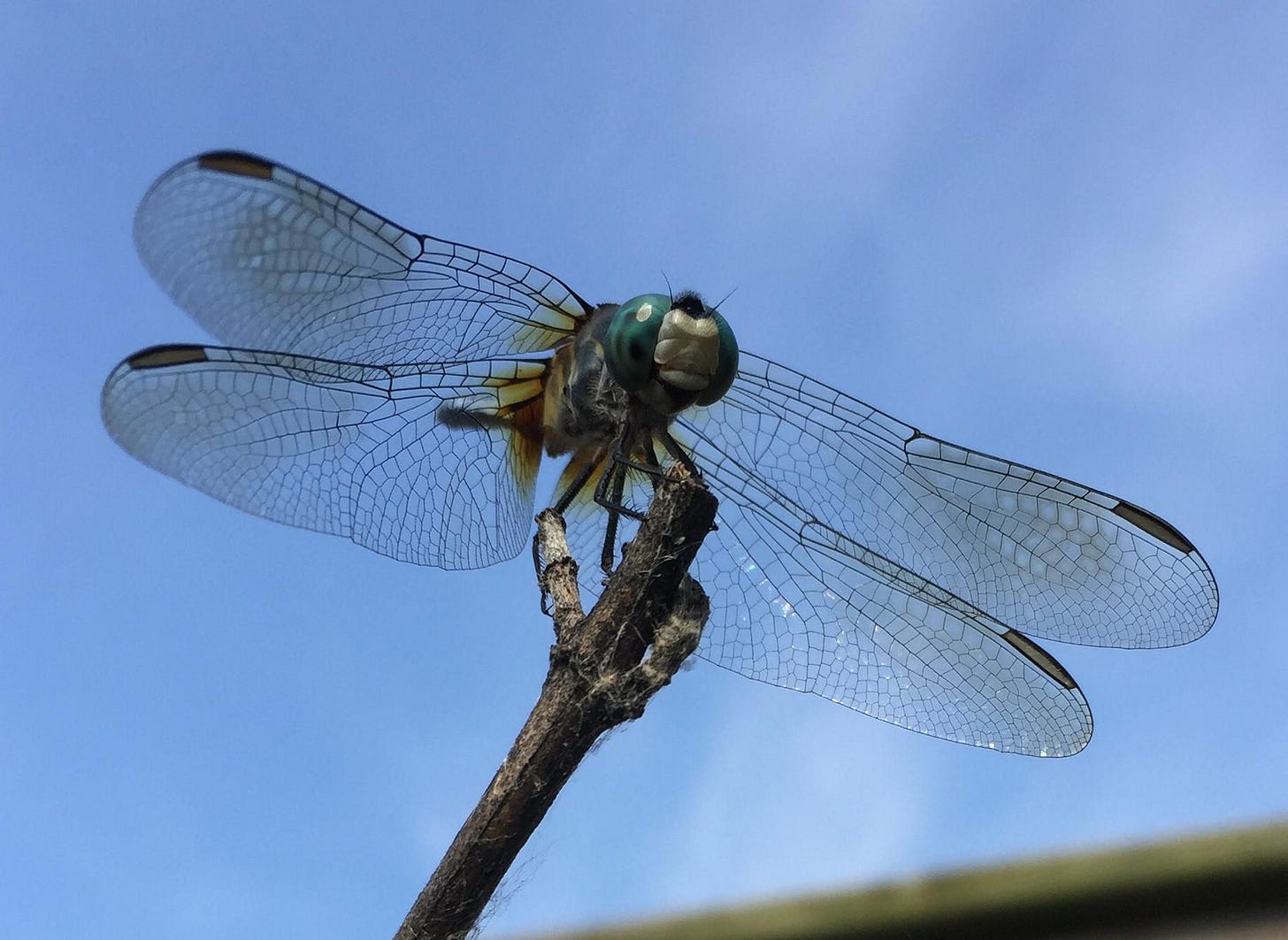
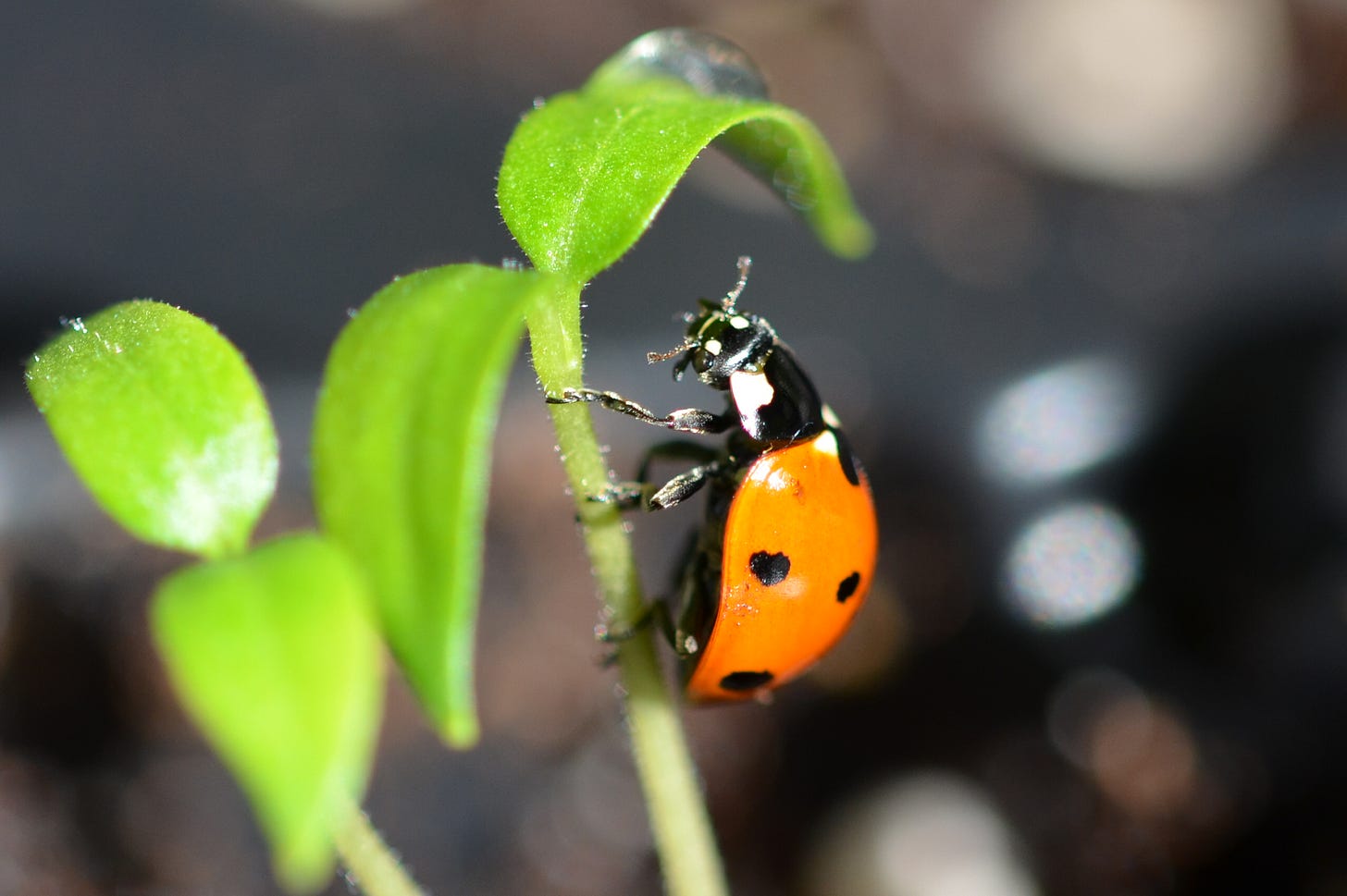


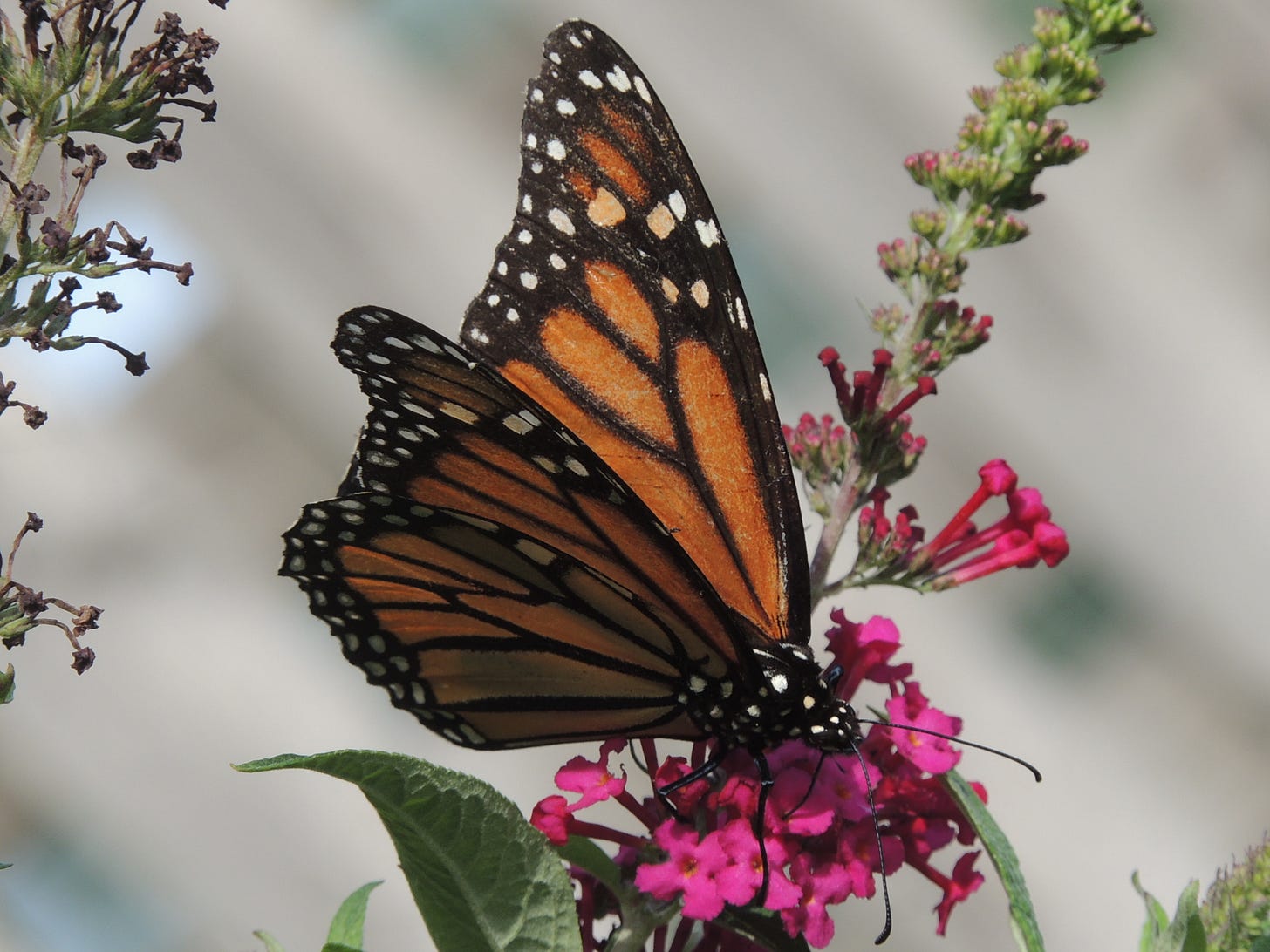
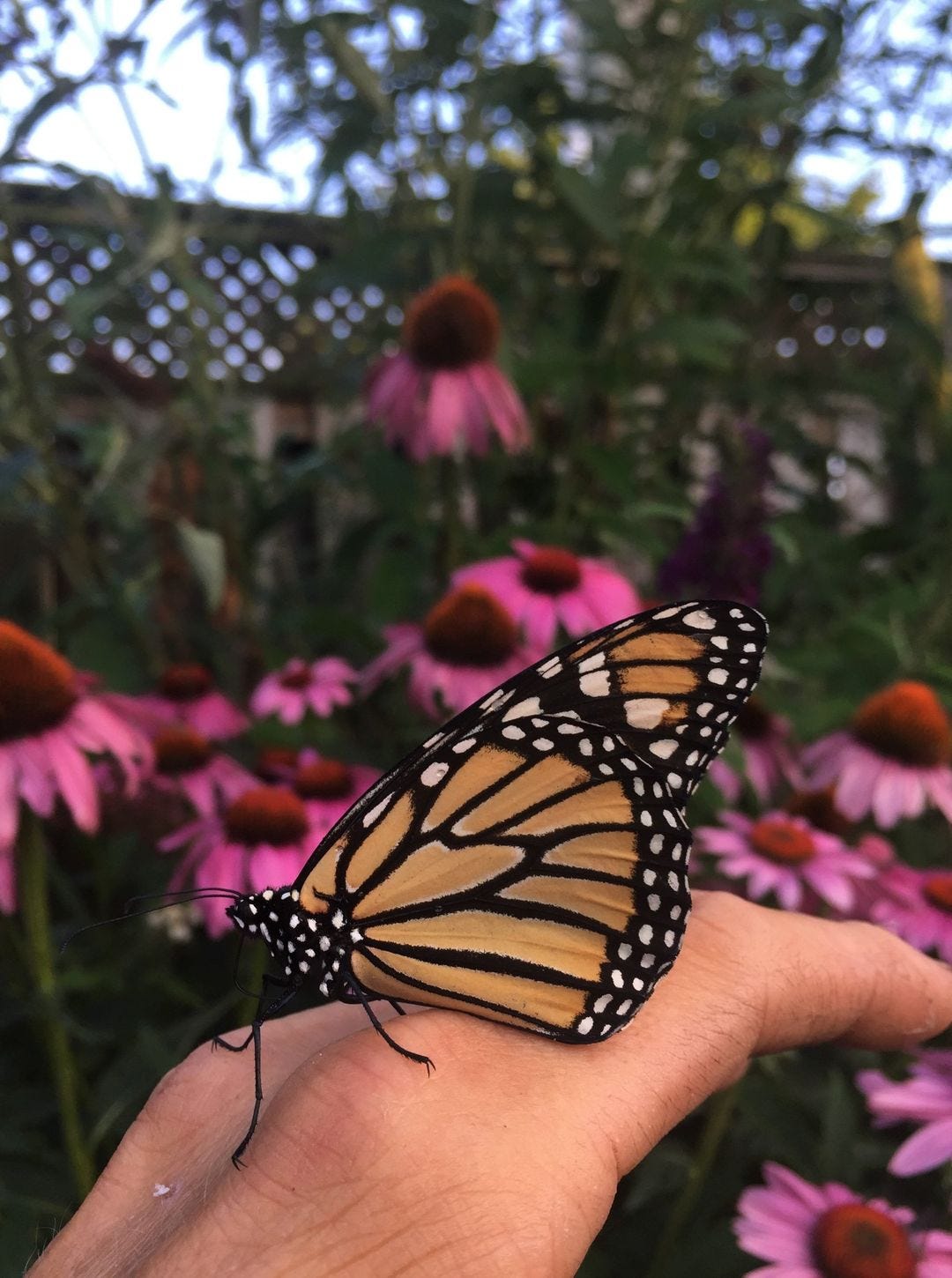


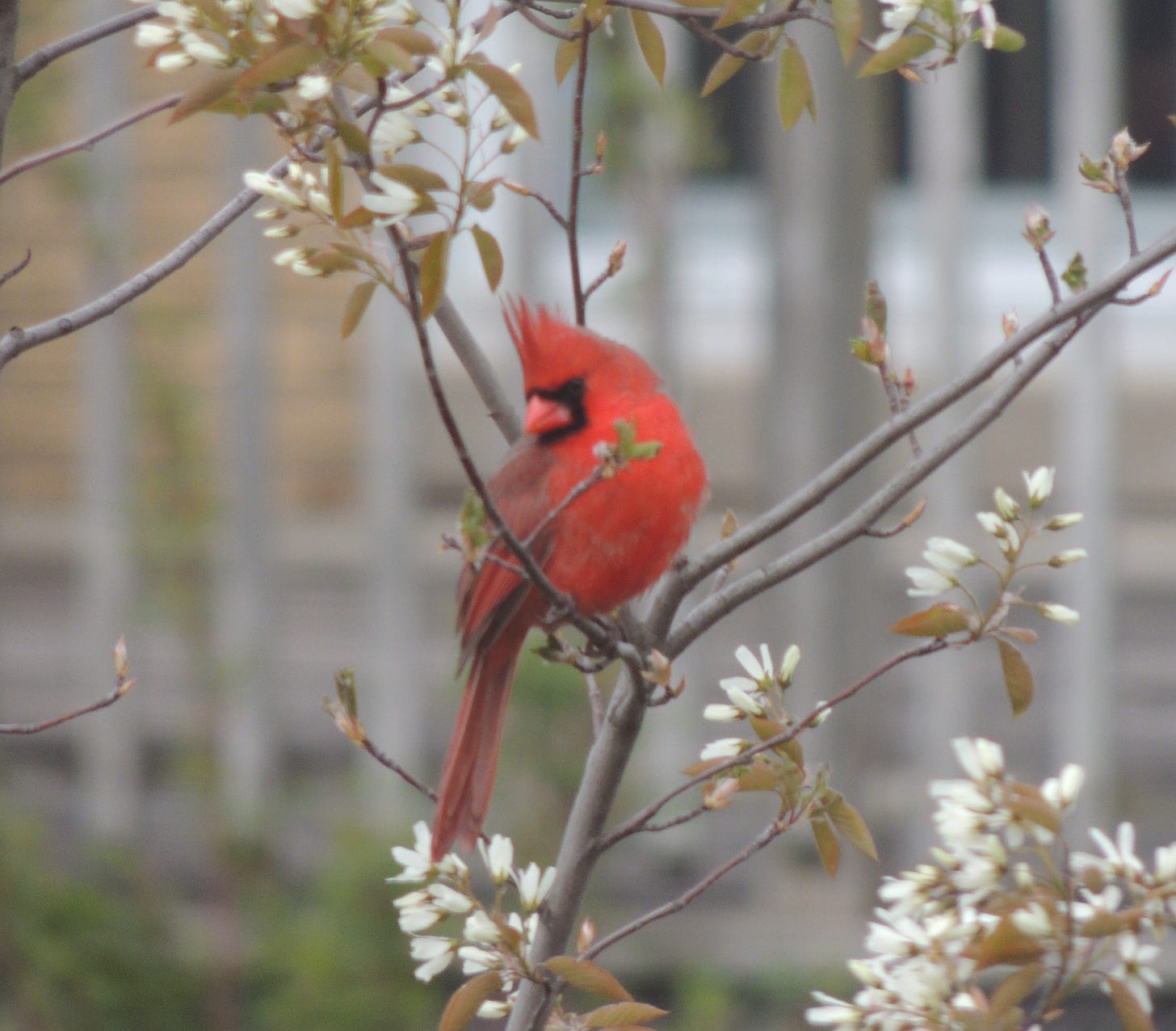
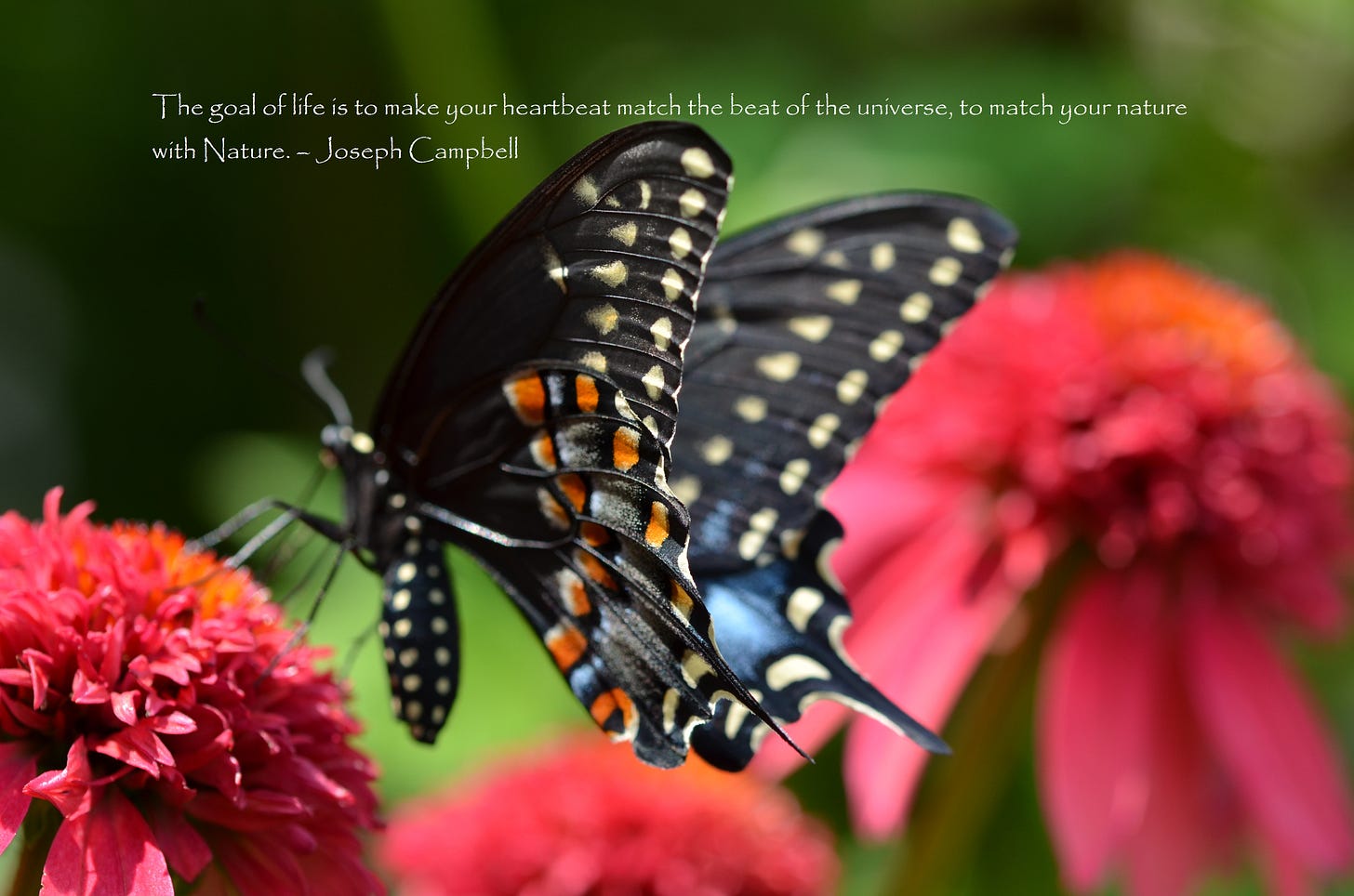
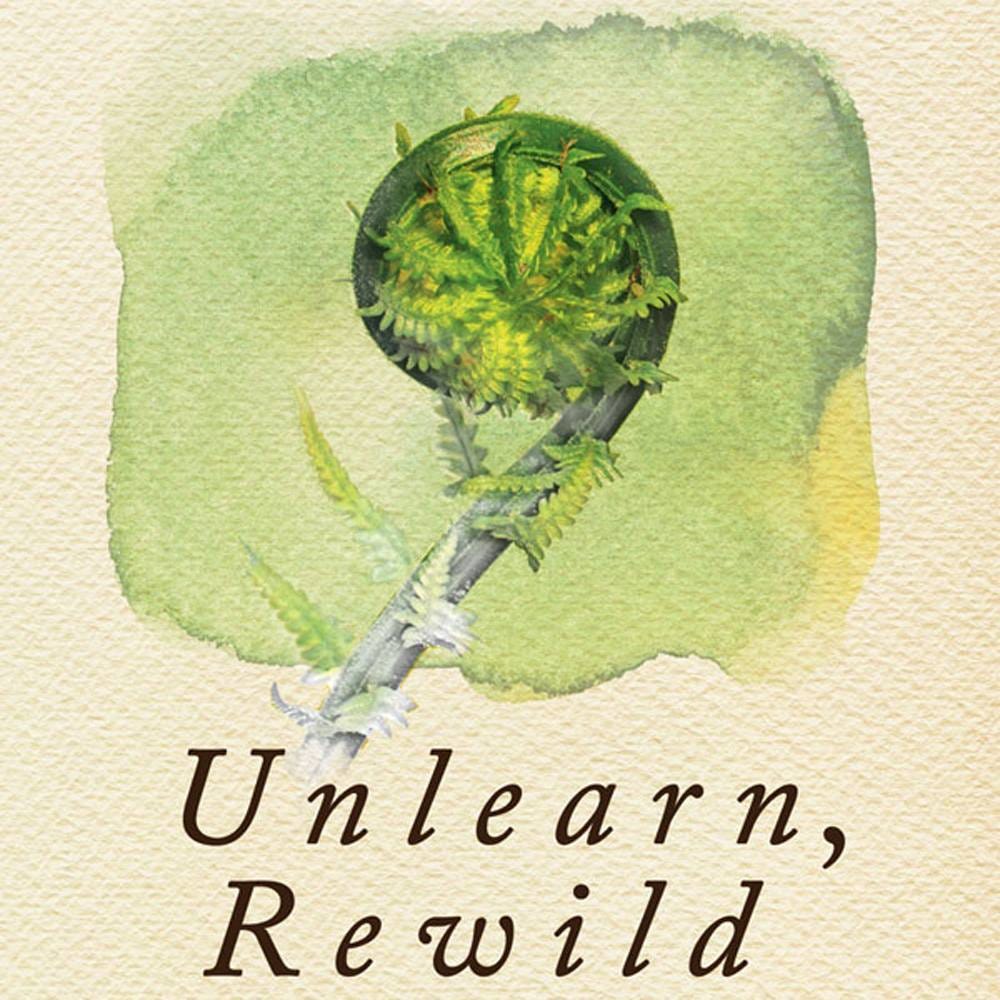
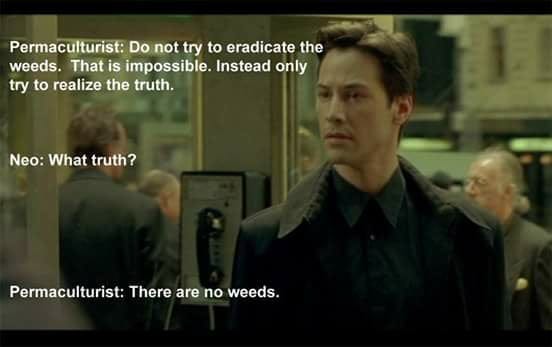
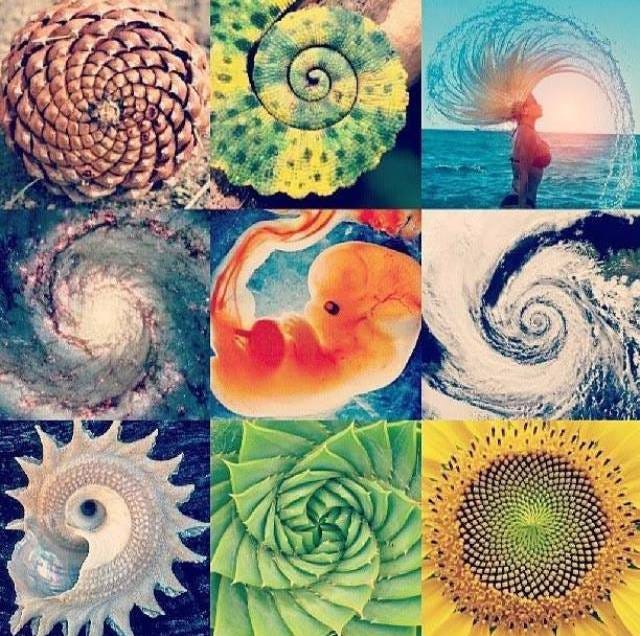
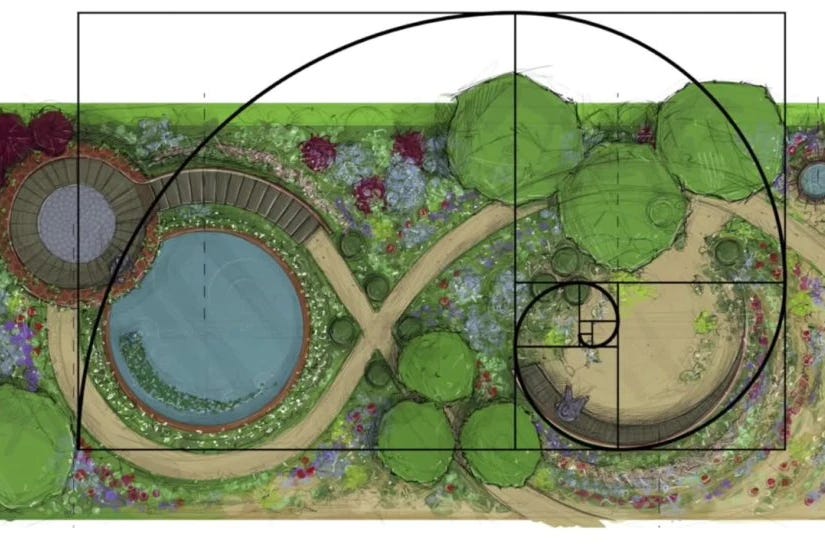

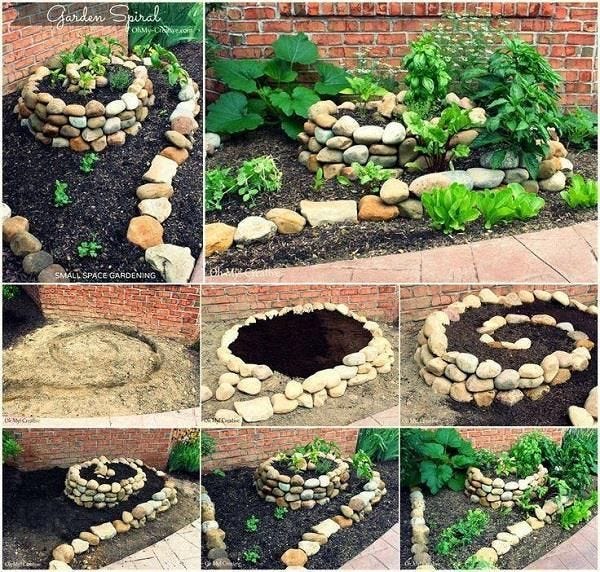
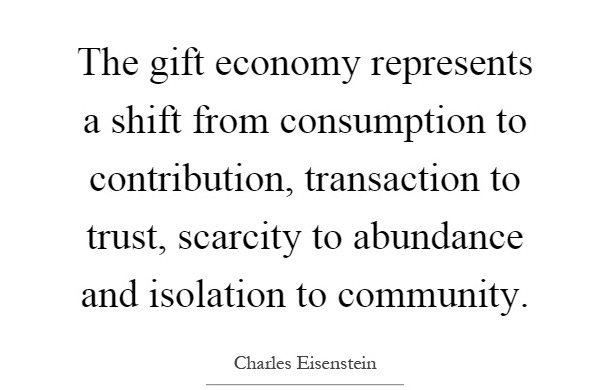
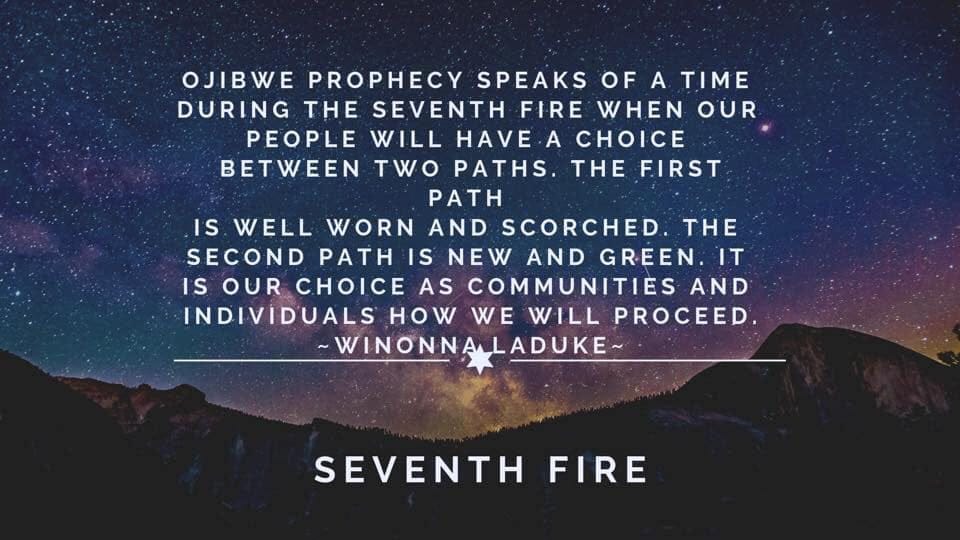
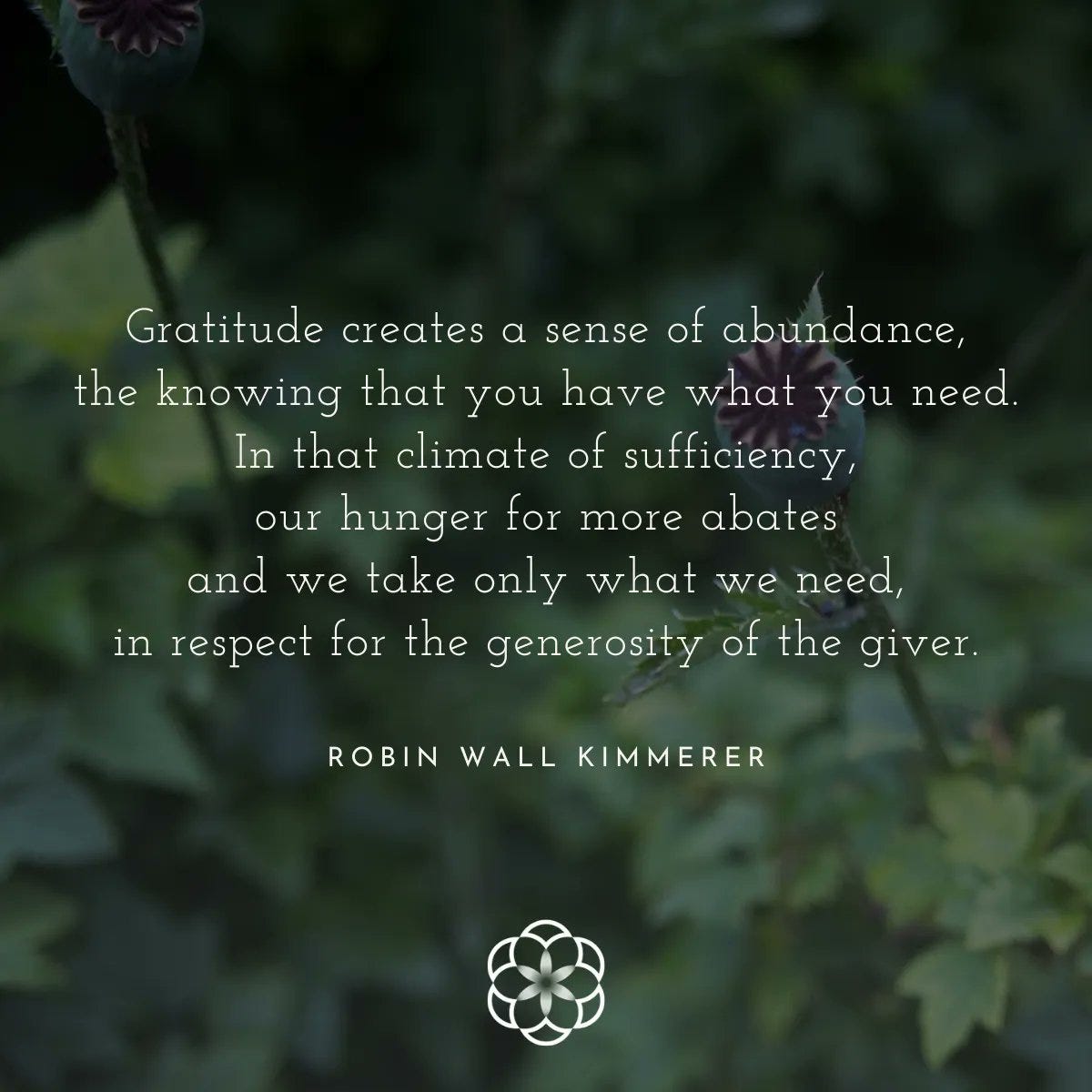
I just discovered your substack sideways (A Midwestern Doctor, your comments for growing ginger and tulsi) -- glad for the crooked path, as they say :-)
quick note, it seems Stephen Smith's Divine Botanist site has lost its internet domain. I have done several searches to see if there is a replacement, but no joy so far.
Happy new year, looking forward to catching up on your work and resources!
Another awesome and inspiring post Gavin, thank you so much, will be taking fav pieces of it for a post of my own. Our garden plans are 2-fold this year--more forage for our critters and more flowers for me and the bees!! Wishing you and yours a gracious new season!!!